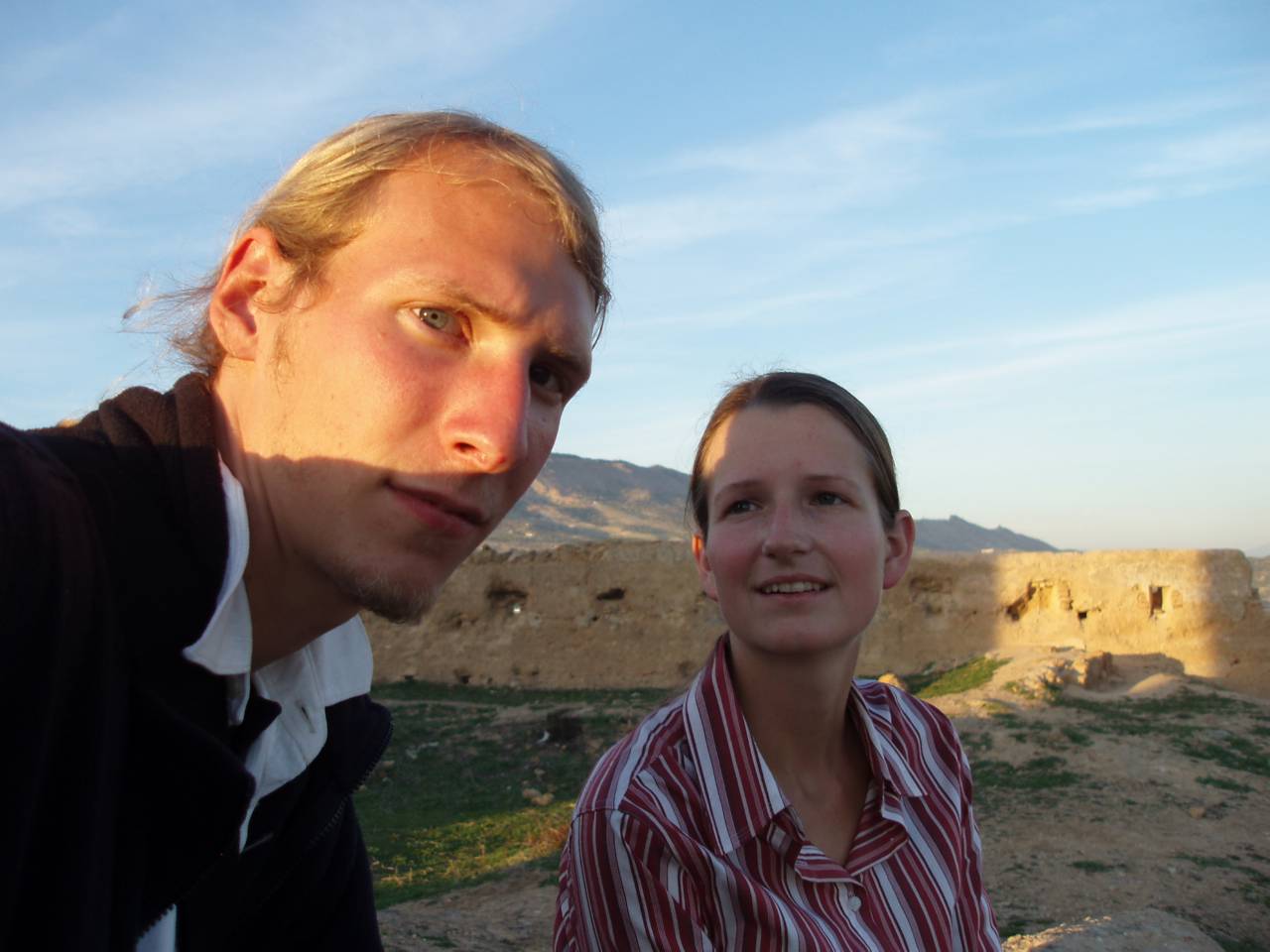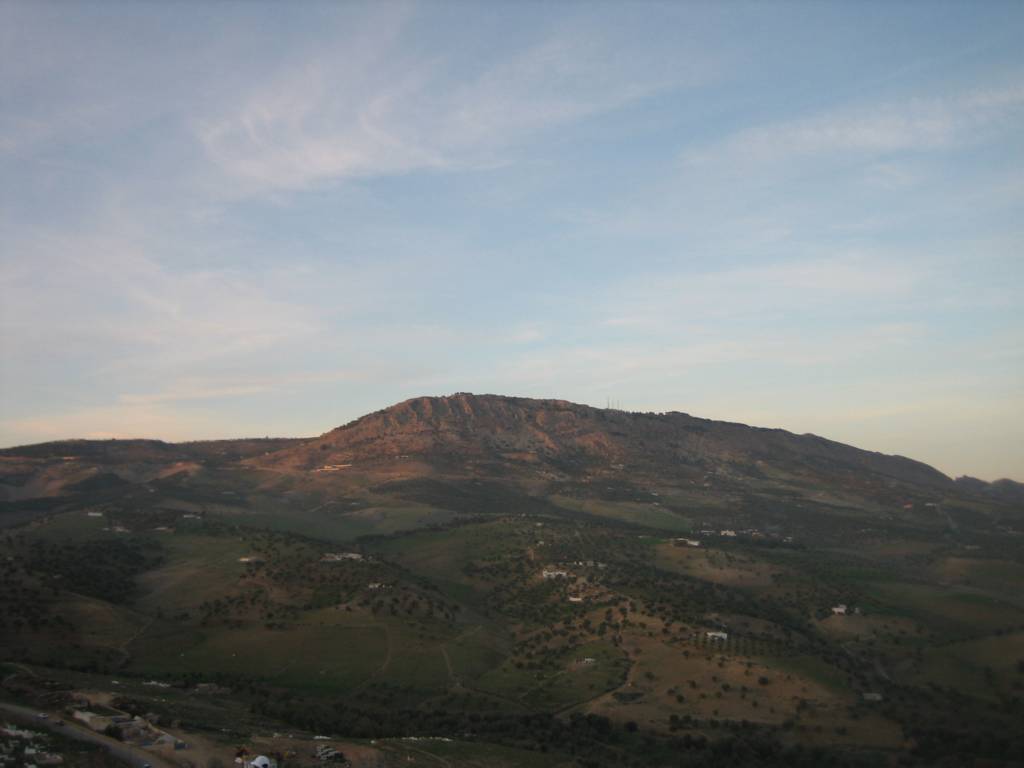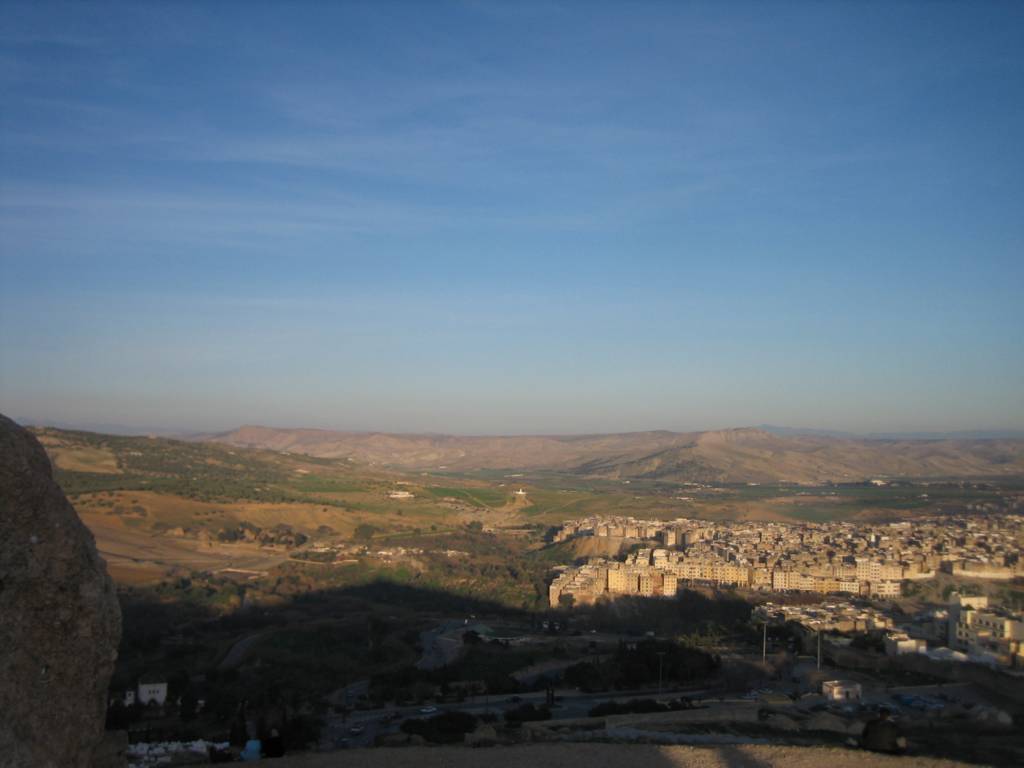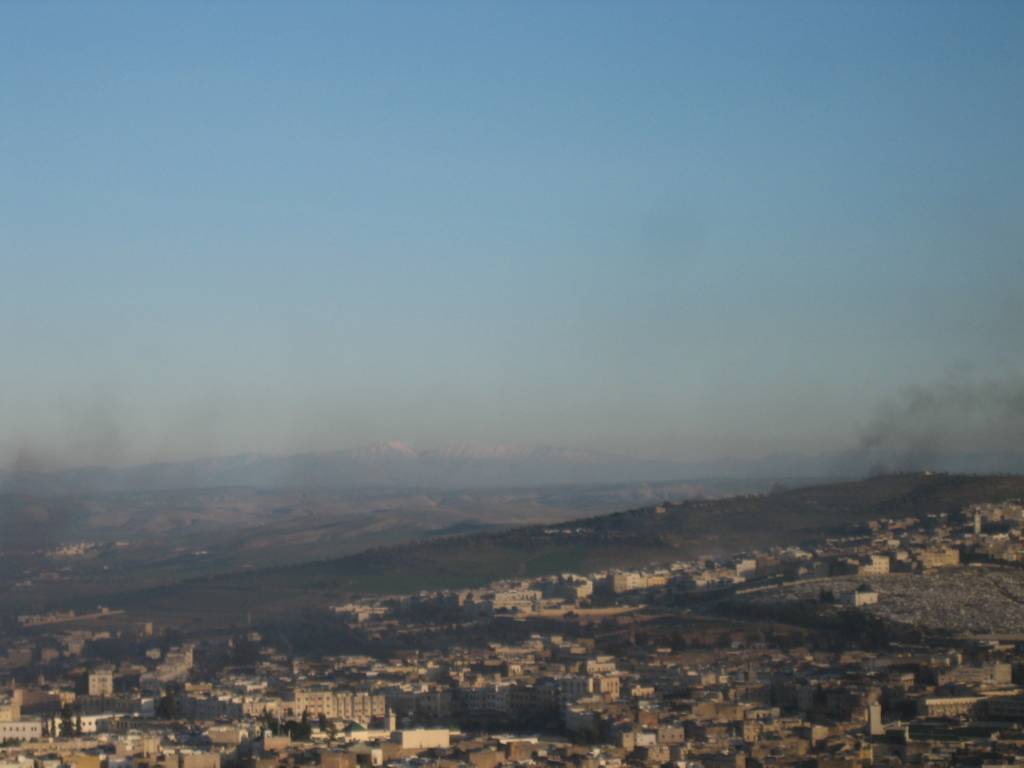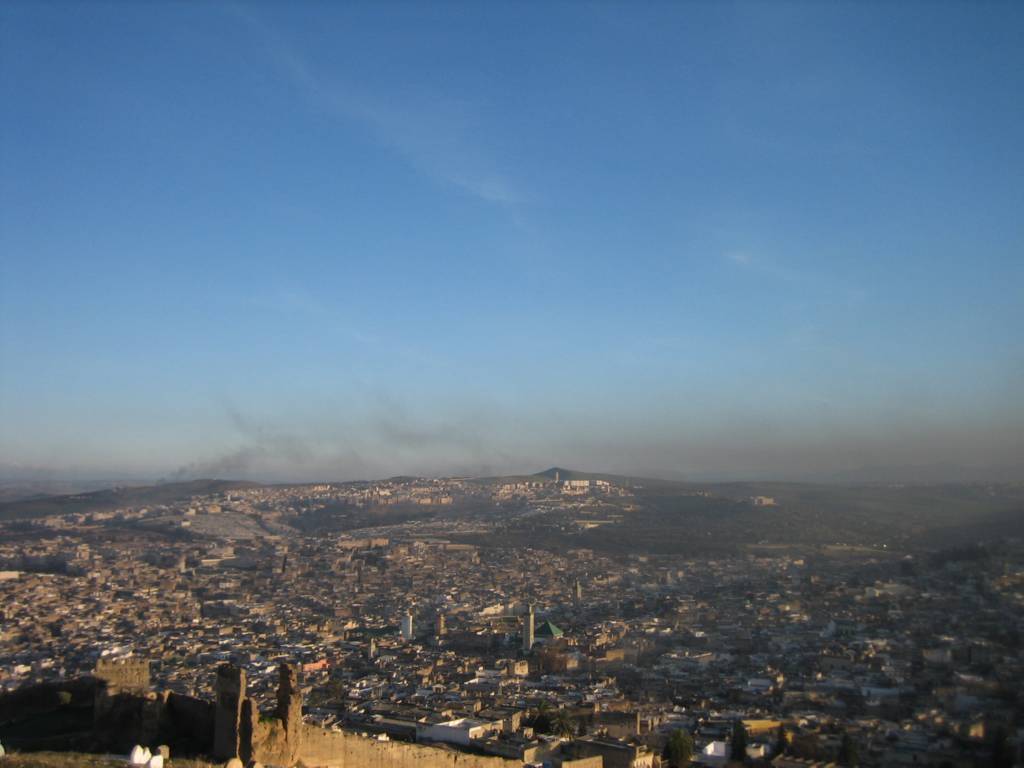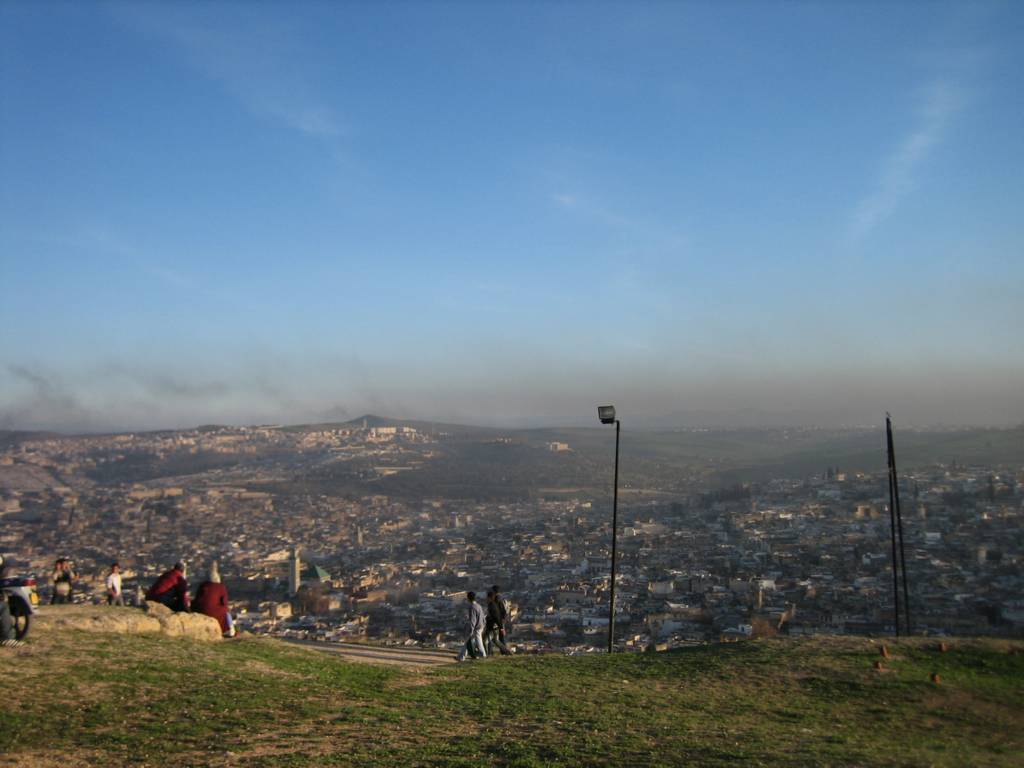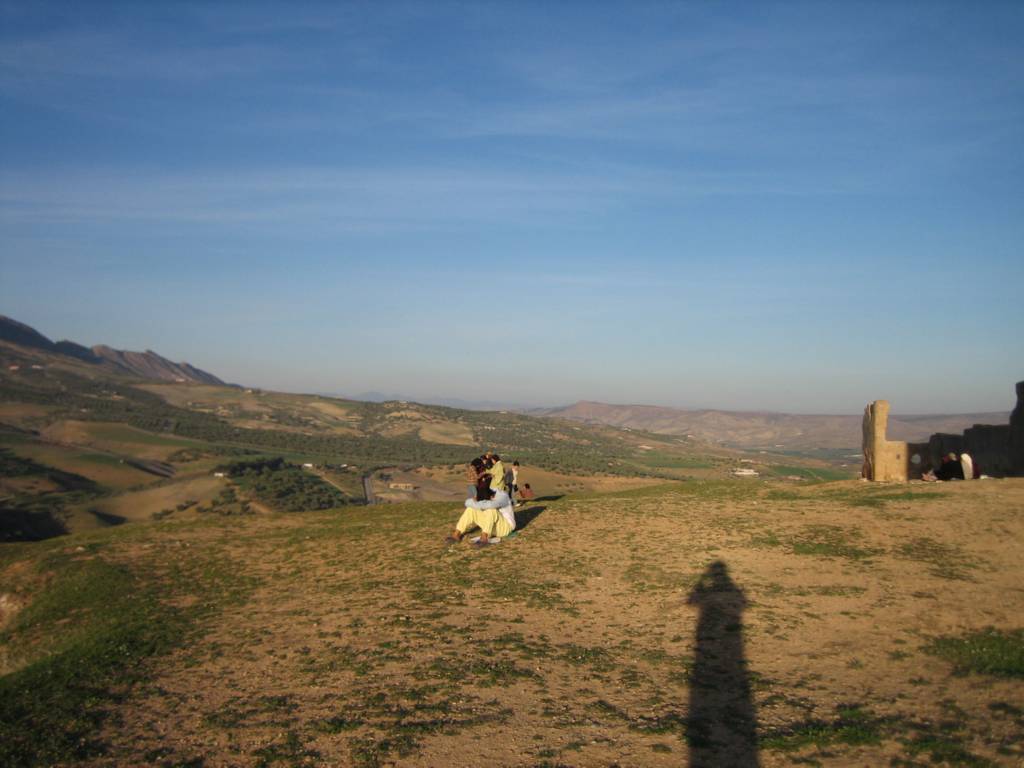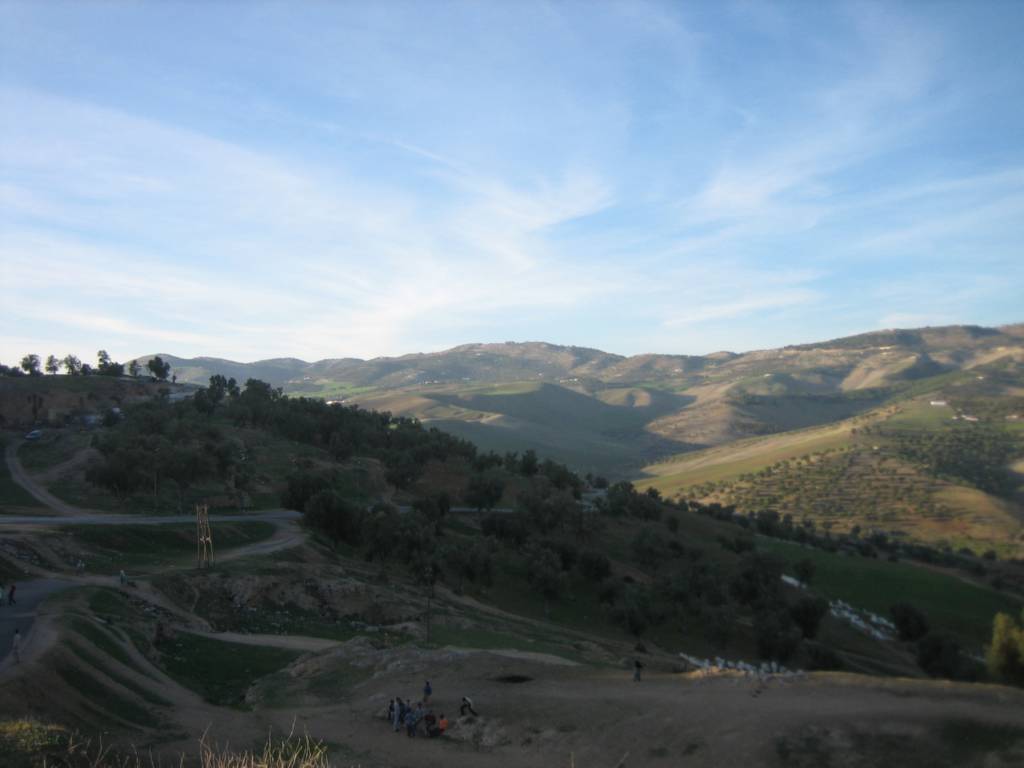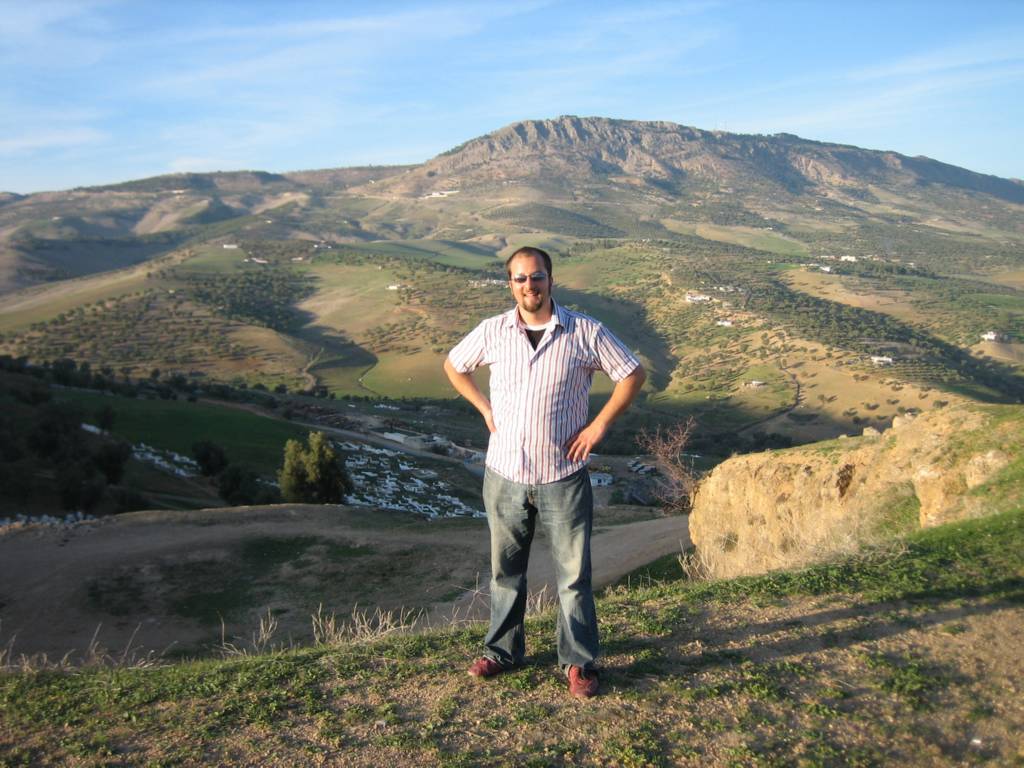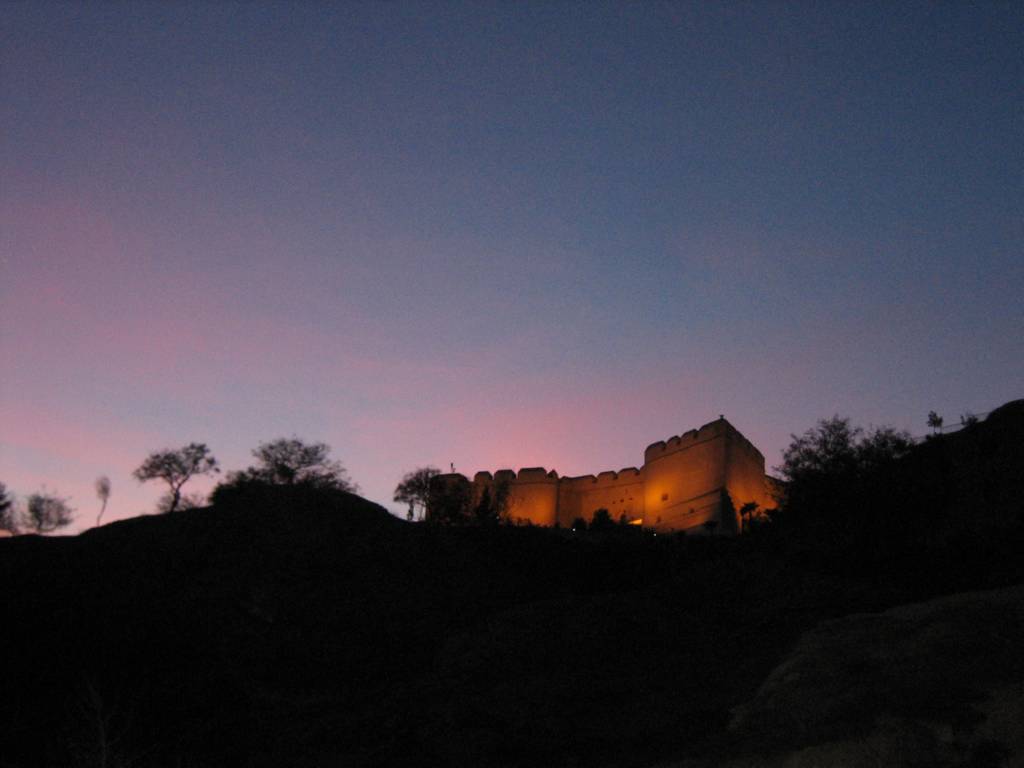Diary Entry
Once again we can have breakfast at the hotel in Meknes, then we leave early for our train to Fez. The journey to the metropolis takes only one hour. The train station is surprisingly small and tranquil. There are only a few more tracks than in the much smaller city of Meknes. After all, you can see a lot more modern houses around the train station. Nevertheless, it does not look like the second largest metropolis in Morocco after Casablanca.
We immediately continue to the plan with the departure times for the trains to Marrakech, as we want to take a night train there the following day due to the long distance. A fat Moroccan in a casual outfit speaks to me and identifies himself as an “official” tourist guide.
Wherever we go, “official” tourist guides are not far away
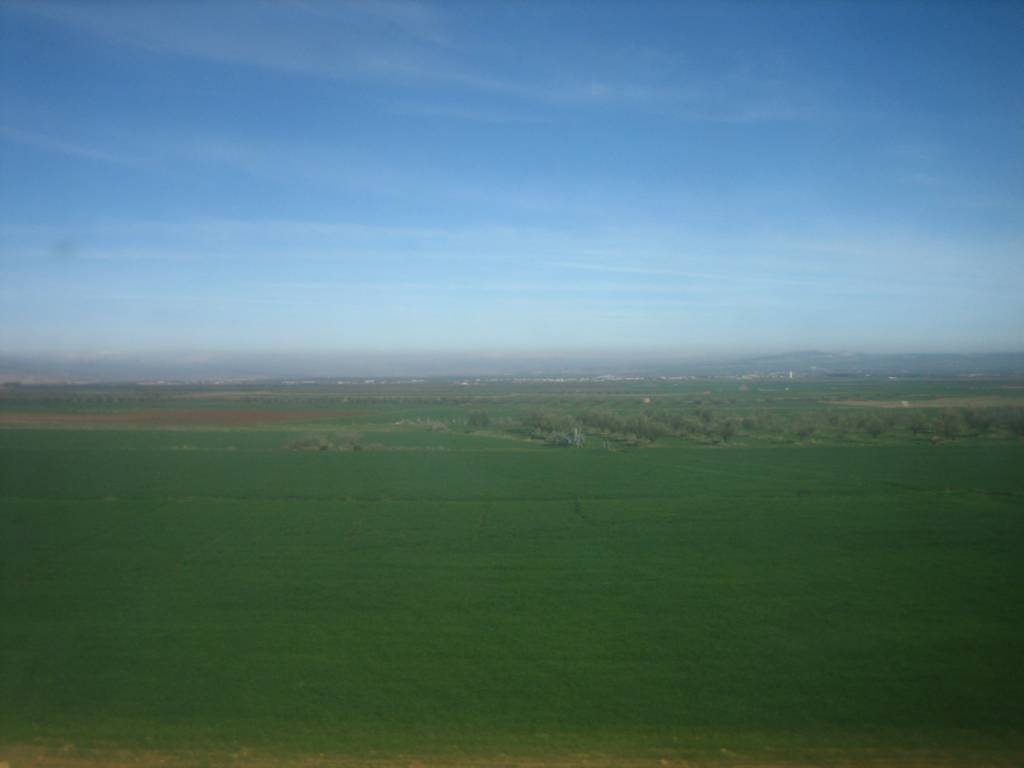
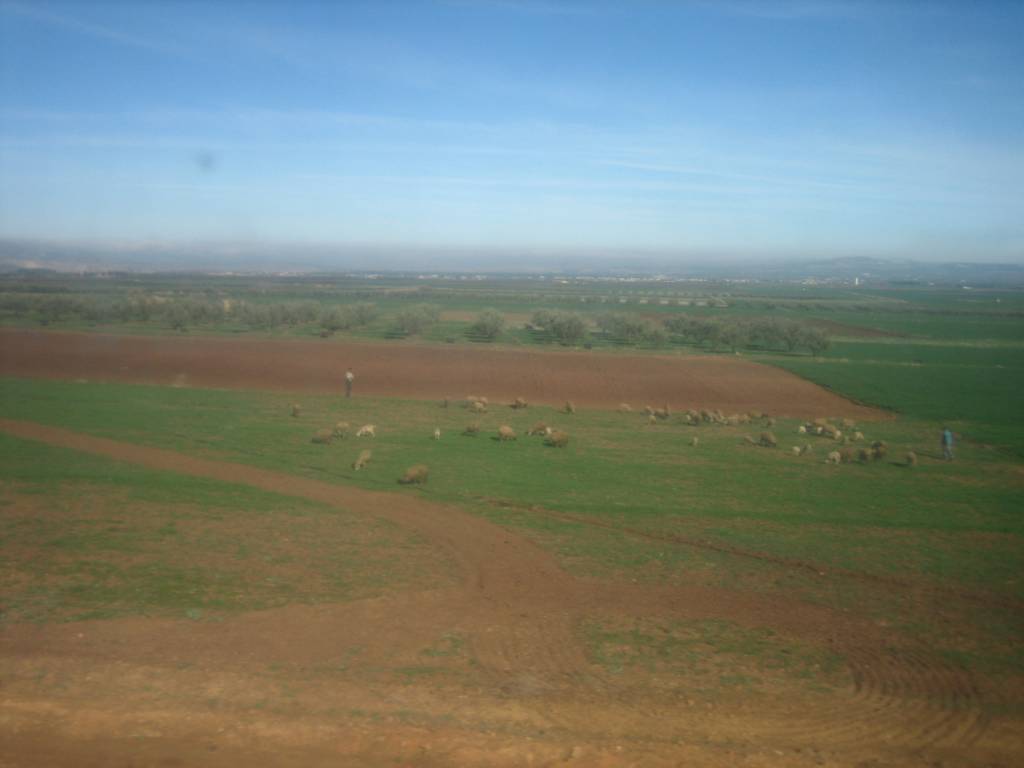
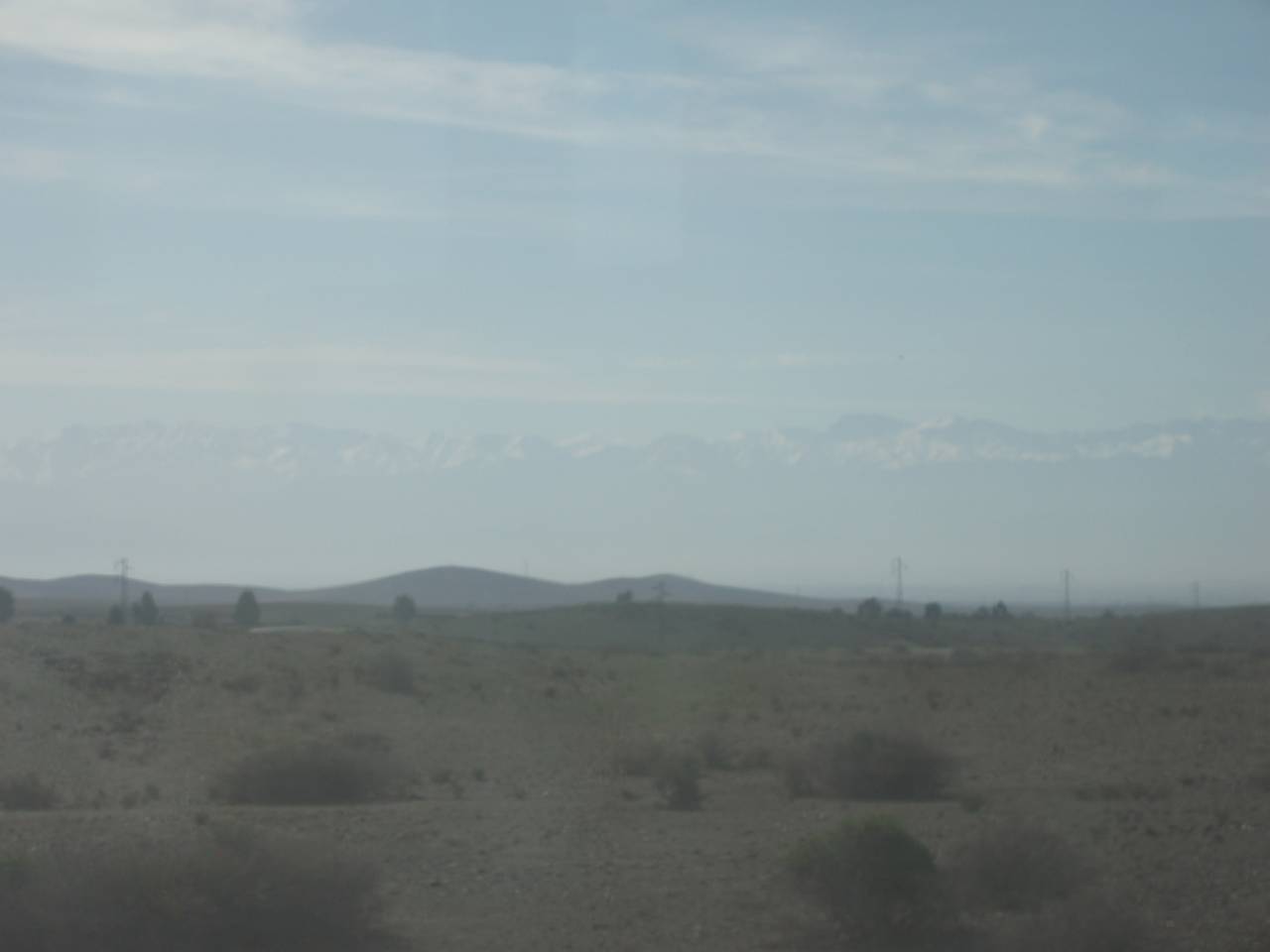
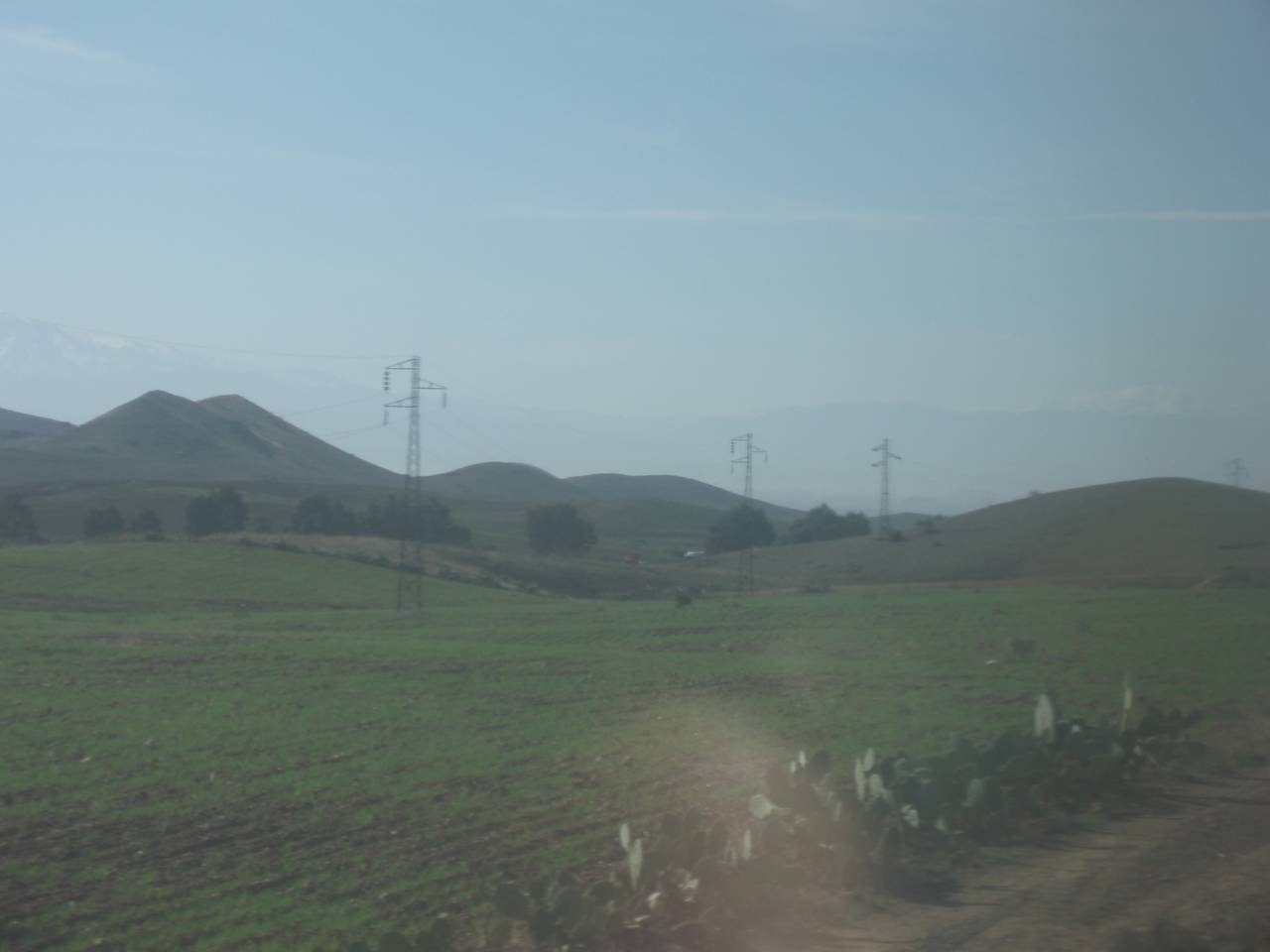
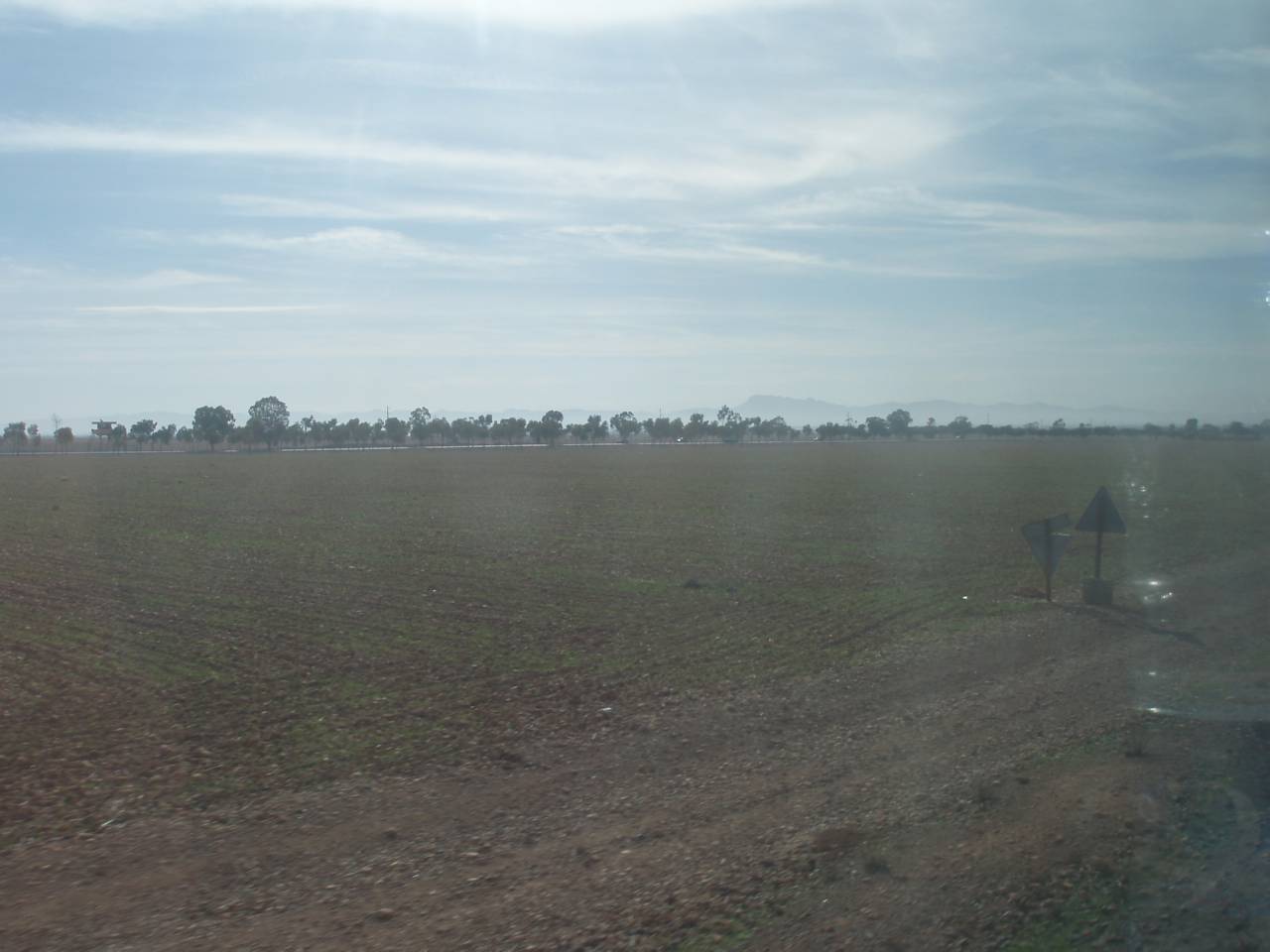
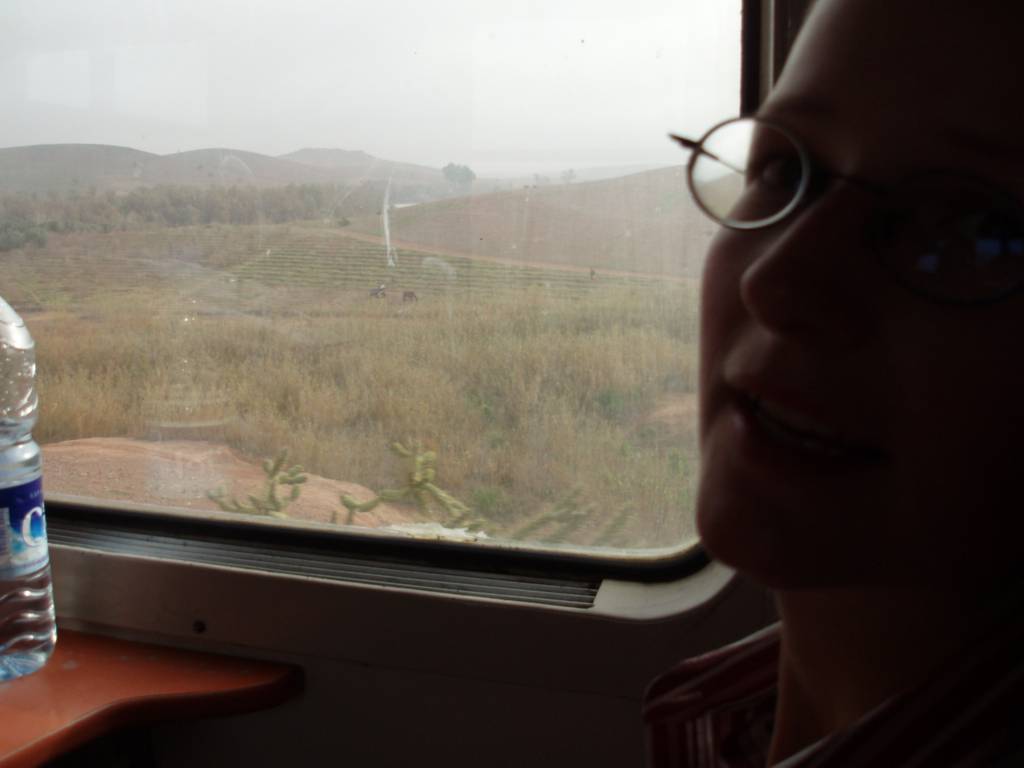

The fat tourist guide gets me a southbound train timetable and, after asking my budget, recommends a hotel in the medina. Since we want to go to the medina anyway, we can also have a look at the hotel there. I agree first, the nice fat man also gets us a cheap taxi and we leave this tourist guide behind us without paying anything. However, he did an excellent job as the taxi driver is only willing to accept the price quoted by our friend after a long argument.
After about twenty minutes we are in front of a hotel, but apparently we have traveled back in time by a few centuries. We are on the edge of the medina, where thousands of mud houses are nested under, over and next to each other up a hill. There are significantly more donkeys than cars on the street, the pedestrians were young and old men in caftans or djabalas and the traffic routes end in front of the medina in small, dark alleys, which look like the entrances to a subterranean world of their own.
At the entrance of the house, which seems to be primarily a small restaurant, a well-dressed Moroccan wearing a distinctive white scarf welcomes us and invites us into his house. He seems to have been expecting us and introduces himself as Ibrahim.
Ibrahim takes us through the different floors of his hotel, all of which are very nicely decorated with colorful carpets and jewellery. He shows us two rooms that are truly a dream. Next to the beds there is a large, inviting sofa corner, a small table in the middle, many beautiful carpets on the floor and stylish pictures hanging on the wall. The rooms look really comfortable and since Ibrahim really offers me the room for the 10 €/person I suggested and the location is great, we can’t say no. I imagine the commission going into the pocket of the fat tourist guide from the train station.
We freshen up, visit the amazing rooftop terrace with great views of the city, do the registration formalities, and this time let Ibrahim call us a guide to the medina. While we are waiting for him over a mint tea, a young man enters the hotel and greets us. He saw us at the train station and was steered here by the same fat guy we were. He is American and traveling around the world with his wife. In contrast to us, they don’t want to go to Marrakech afterwards, but want to travel straight into the desert. Every Moroccan tries to convince us that you have to go straight from Fez to the desert. But when I look at the map, it makes no sense to me.
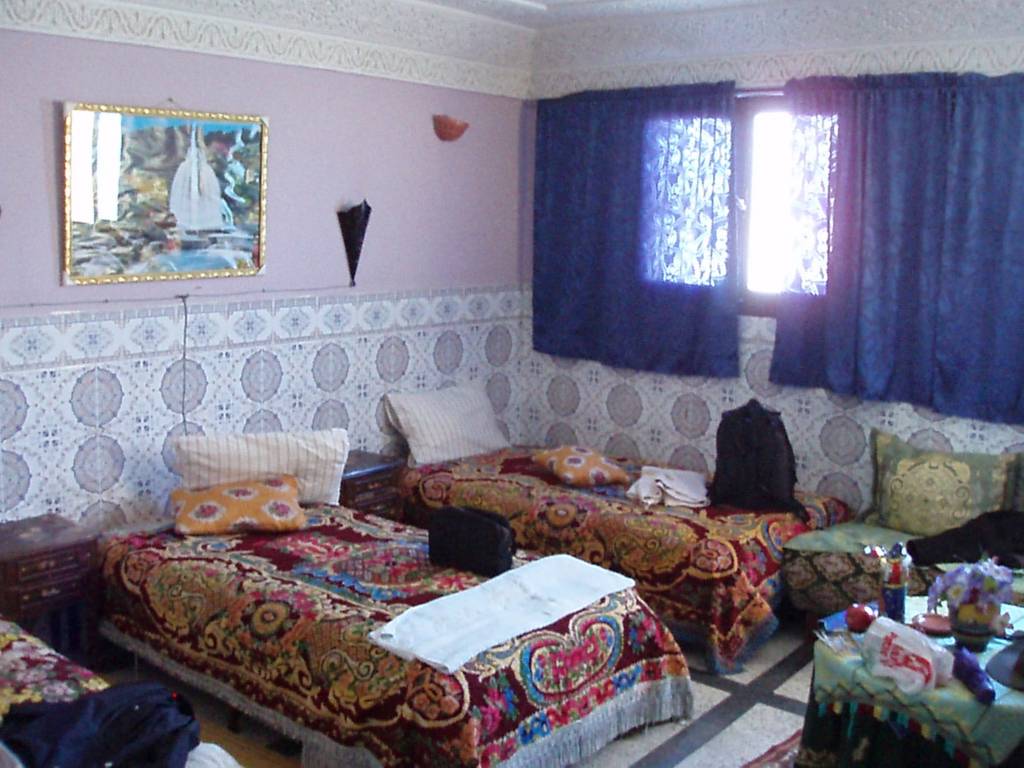
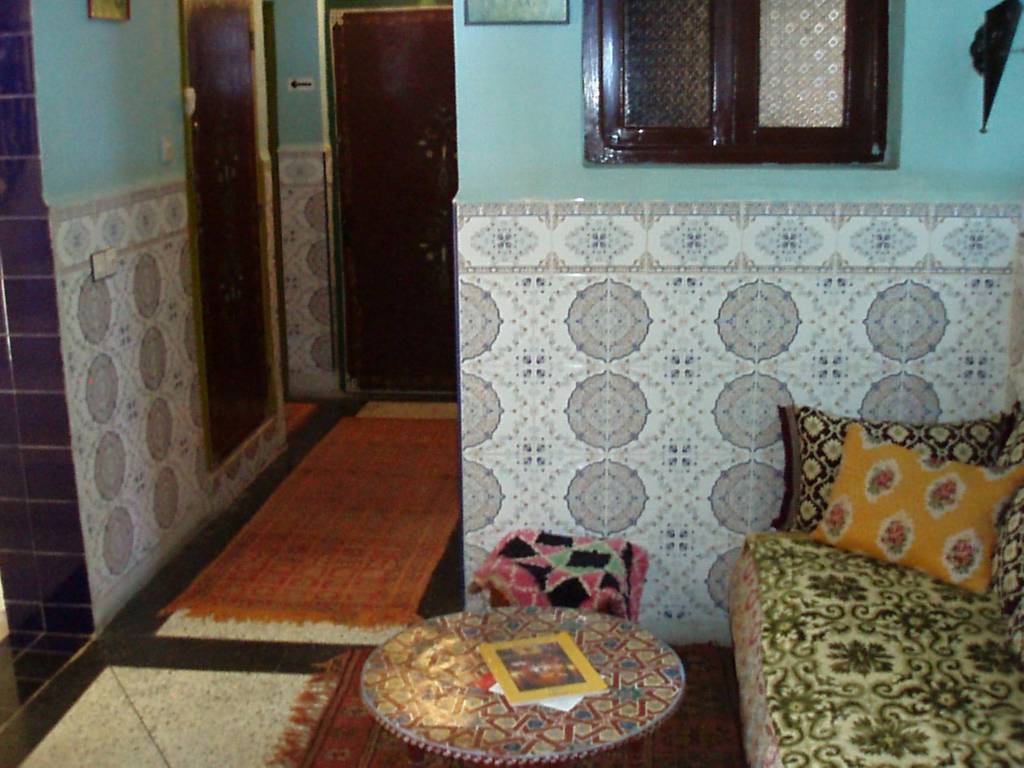


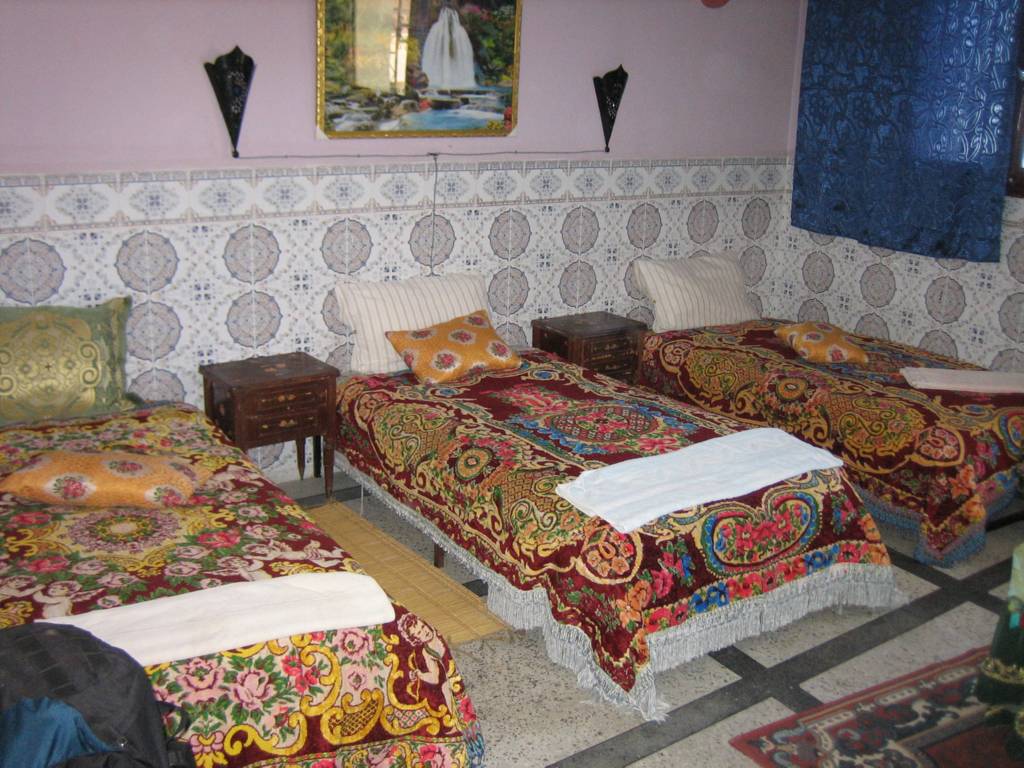



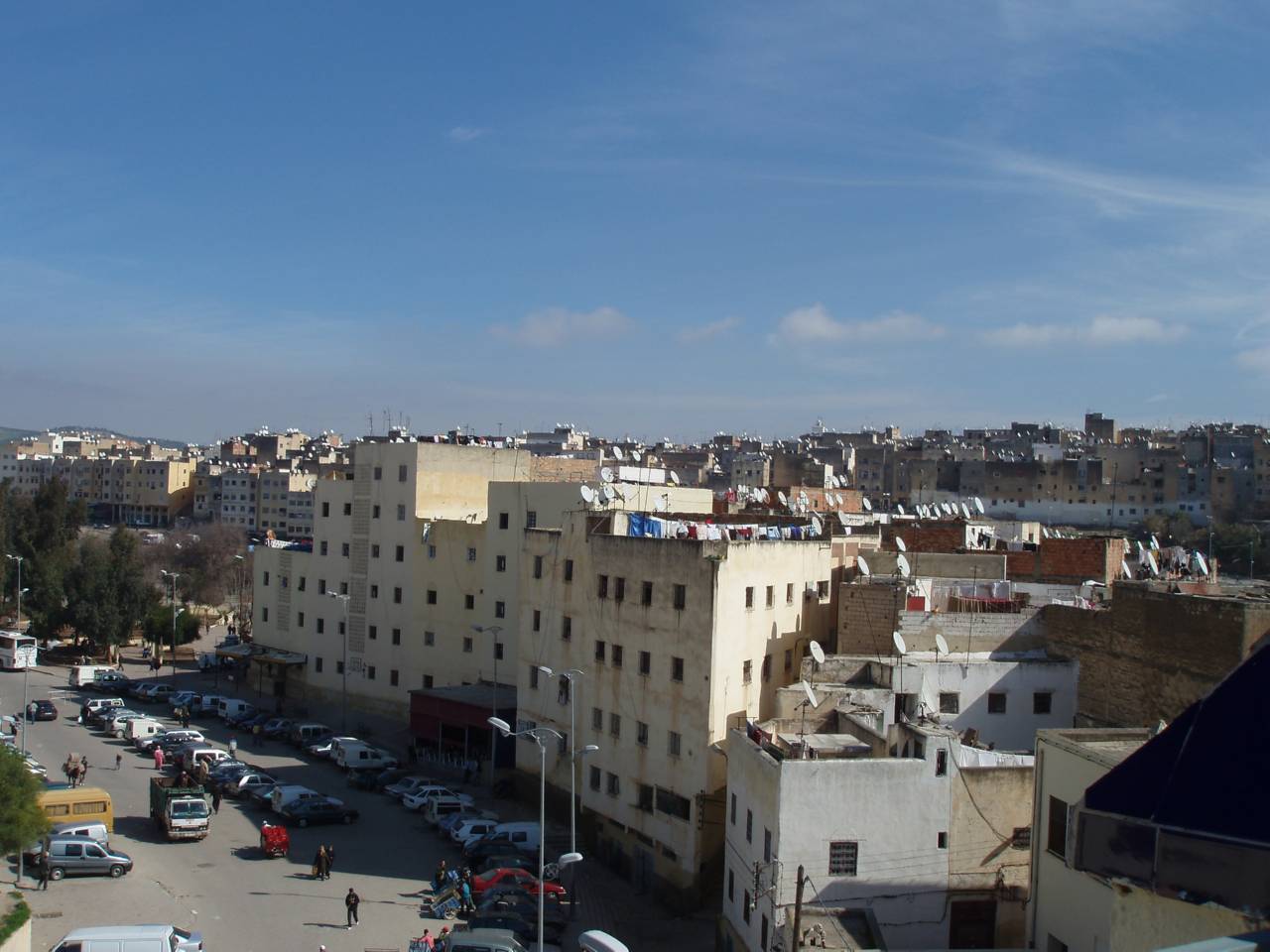
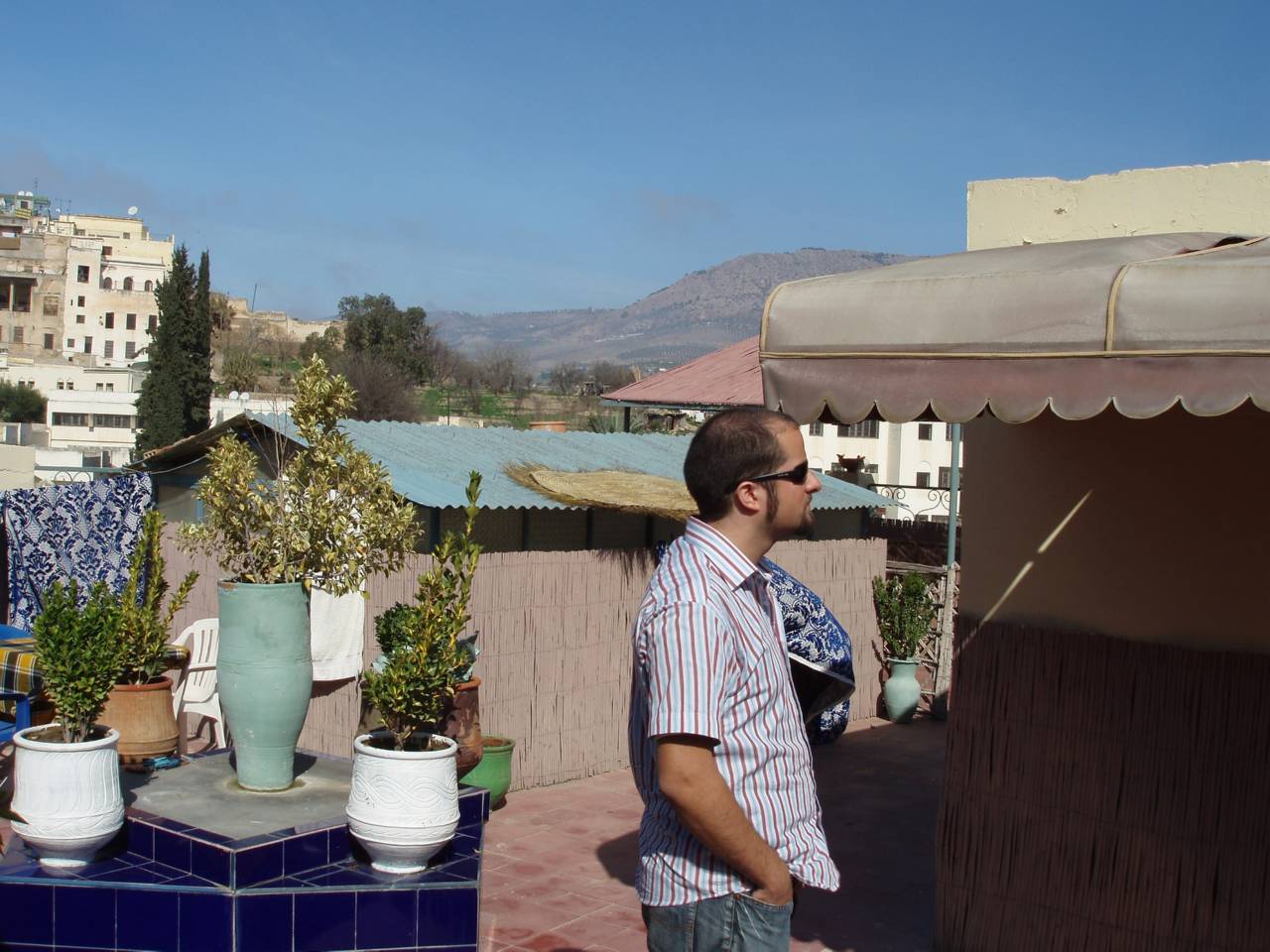

A guide also trundles in after about half an hour and a few pots of mint tea. He introduces himself as Abdul and turns out to be an emotionless guy of the older generation. He appears to be a frequent guide of tourists around the city and has worked with all types of tourists. In any case, he leads us through the area with the routine of a bus driver, gives us information on the age of the individual parts of the city and the function of individual houses, procedures and traditions of the carpet shops, tanneries and dyers.
The Fés-al-Bahli
The medina is part of the Fés-el-Bahli, the large old district of Fés, where a good three-quarters of all residents live. There is also an Andalusian part here, founded by Arabs of Andalusian origin. We pass there first and see the tanners at work on the river that runs through the city. Fés-el-Bahli is an anthill; there is no better way to describe the crowd. One enters it through an entrance, a little street into which donkeys and Berbers constantly go and come out again. But these streets are very narrow and often the houses are so crooked or even built over them that not much sunlight gets in here.
The traffic here is hopeless: heavily laden and sometimes bloody beaten donkeys with beaters, school children and traders push through the small streets.
Our guide strolls leisurely through the tangle, leads us through backyards where silverwork is made in workshops, into old Koran schools (madrassa) and noble houses. Of course, we also happen to pass shops where the dealers are already waiting for us and they seem to be well acquainted with the guide. The guide then says goodbye so that the shopkeeper can take over the management of the program for a moment.
First of all, of course, we find ourselves at a carpet dealer, a jovial and humorous man, who shows us blankets and carpets with plenty of peppermint tea in thick sugar. I joke around with him and he offers me 500 camels for Susanne. I turn down the generous offer and want to see how far he would go and in fact we ended up with 2000 camels. Susanne doesn’t find the negotiation that funny though…
Next, we pass a “pharmacy” where we are mainly shown spices for eating and perfumes. Among them are of course the Arabic curries, paprika, pepper and saffron, and rose and amber as scents…
The shop after that is a pottery and silver jewelry shop, followed by a leather dealer. After all, from its balcony you have a brilliant view of the tanneries, which look like colorful honeycombs from above, since each of these clay vats contains a different dye.

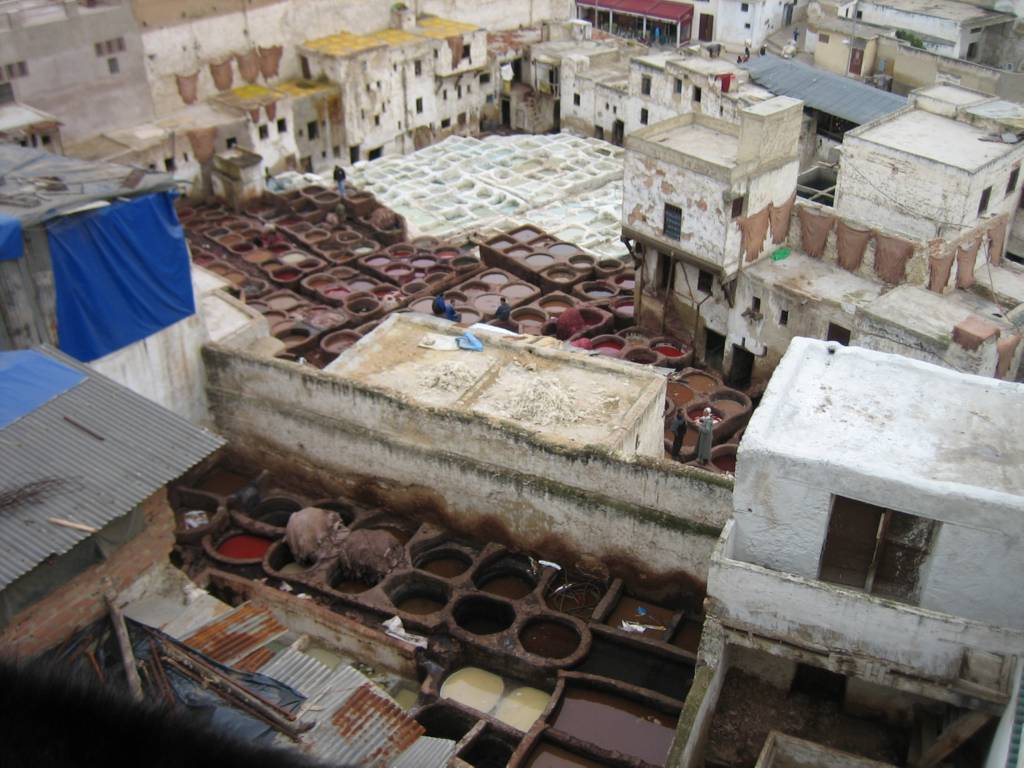


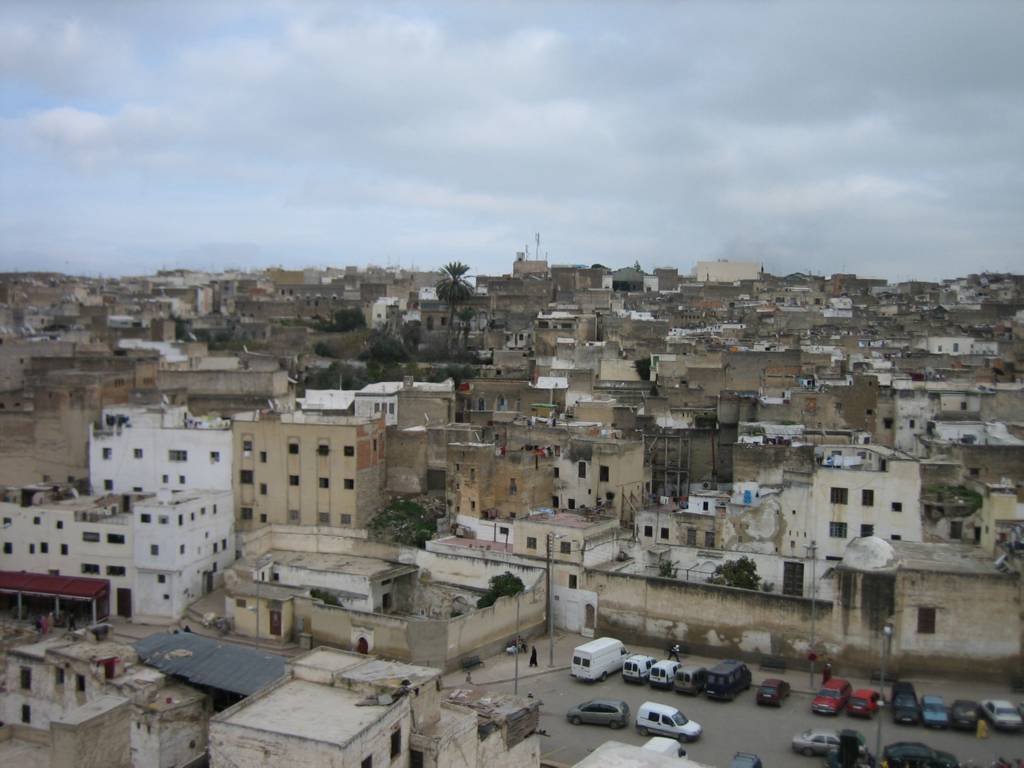
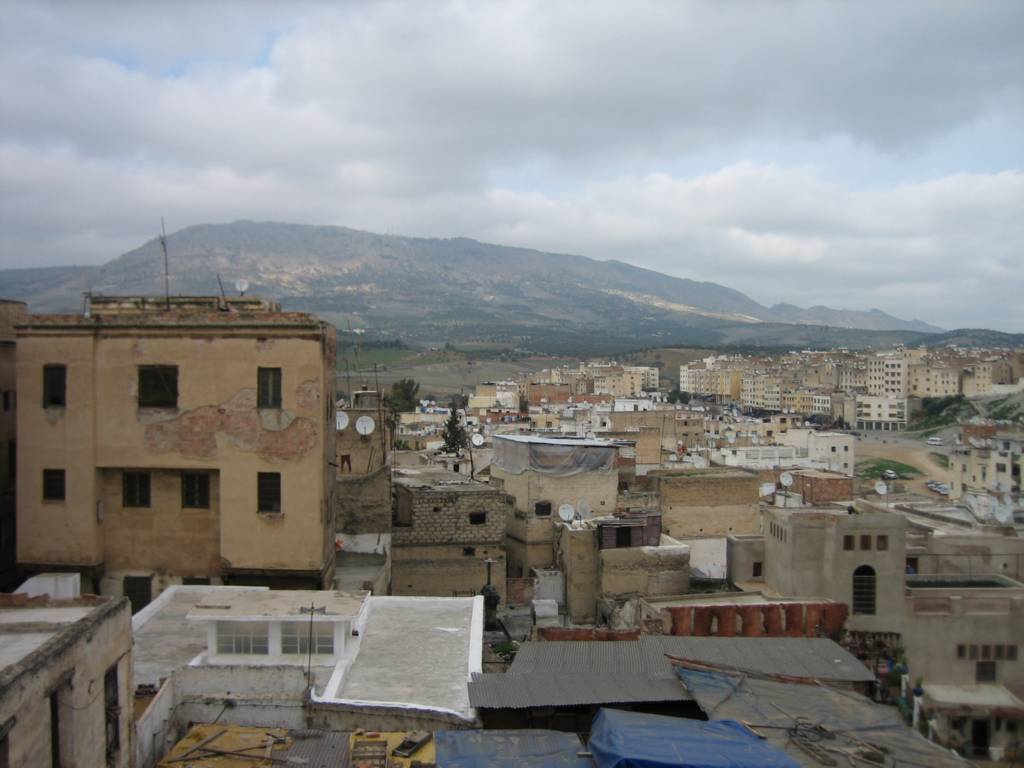
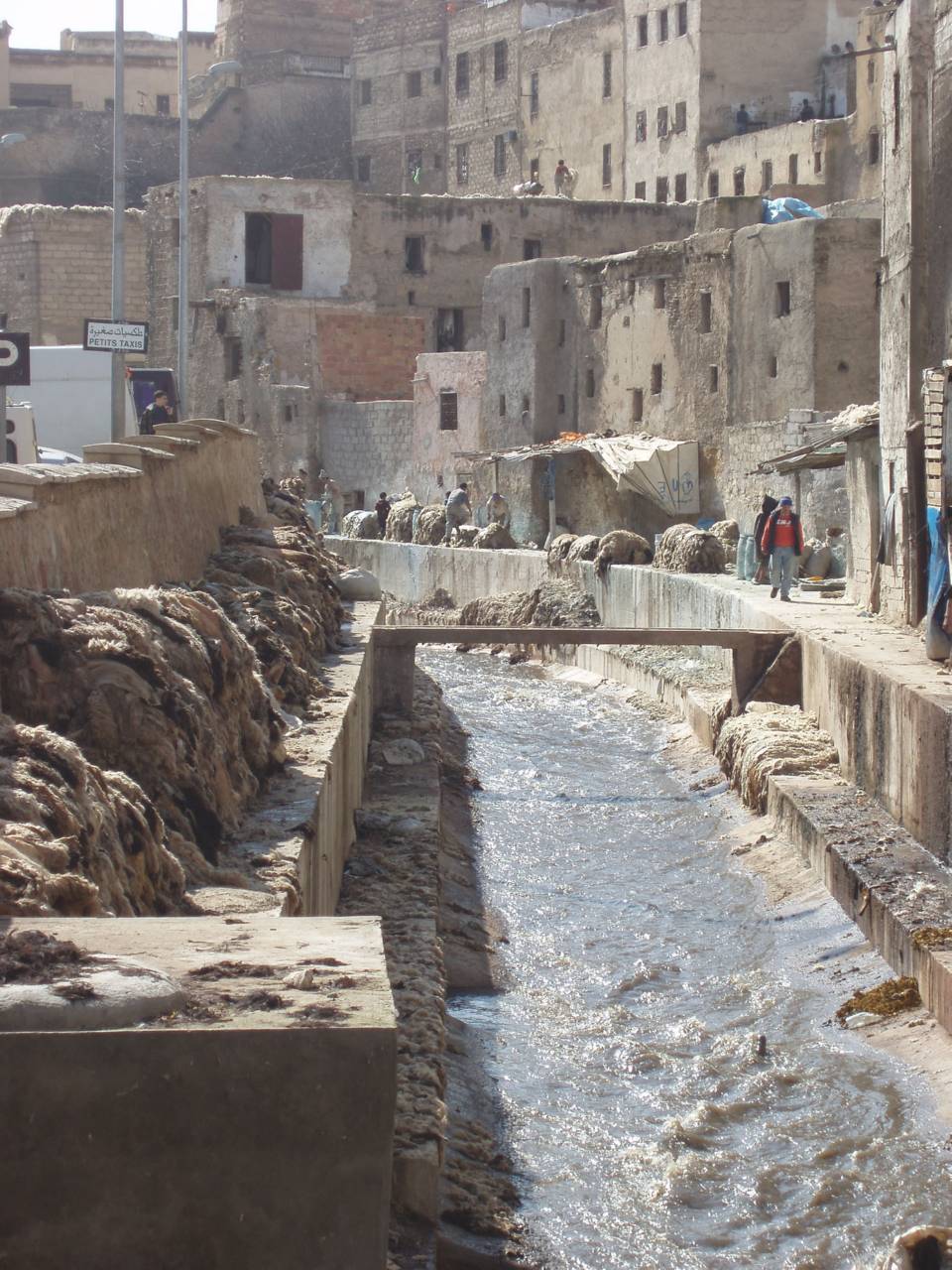
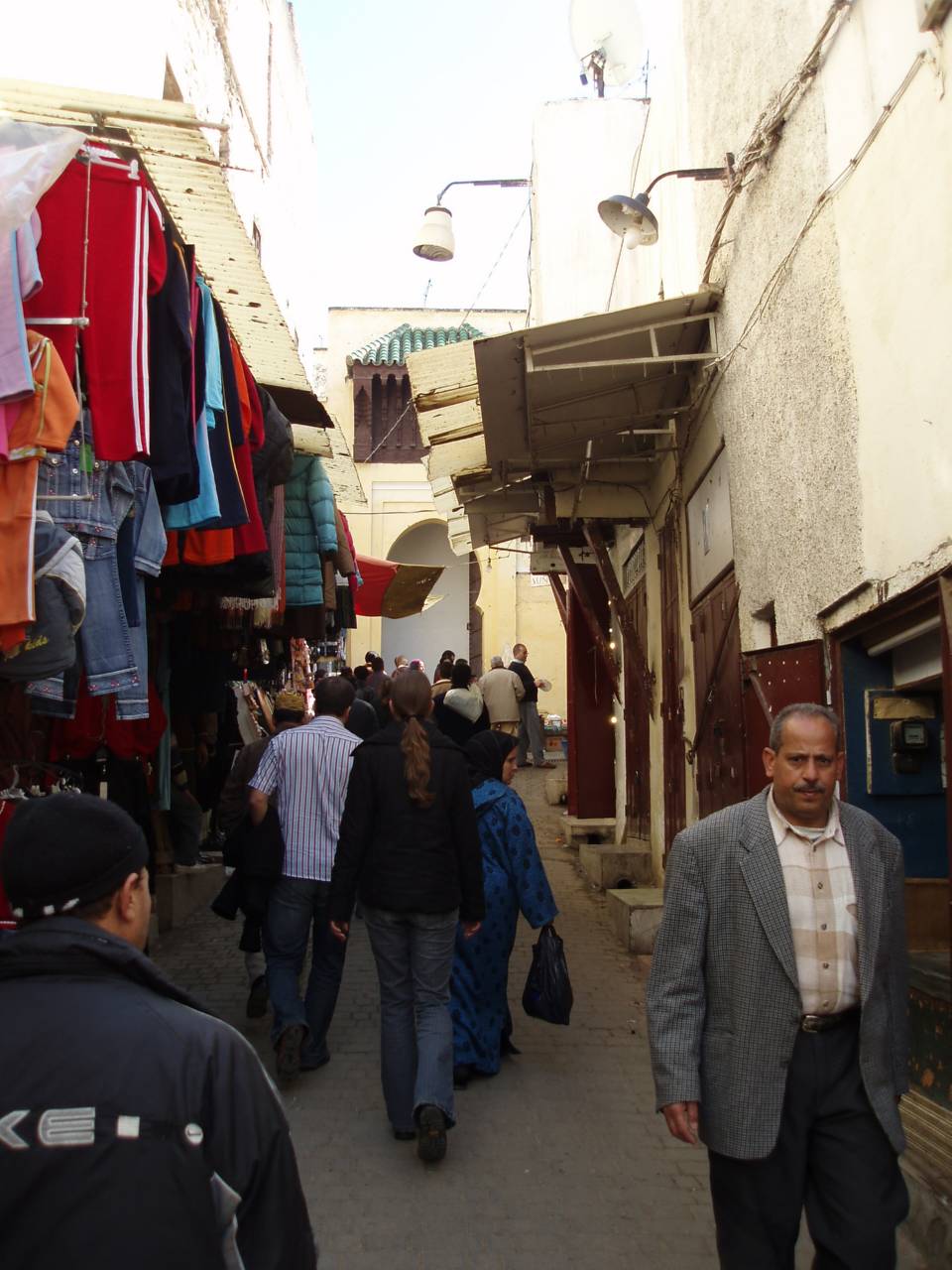
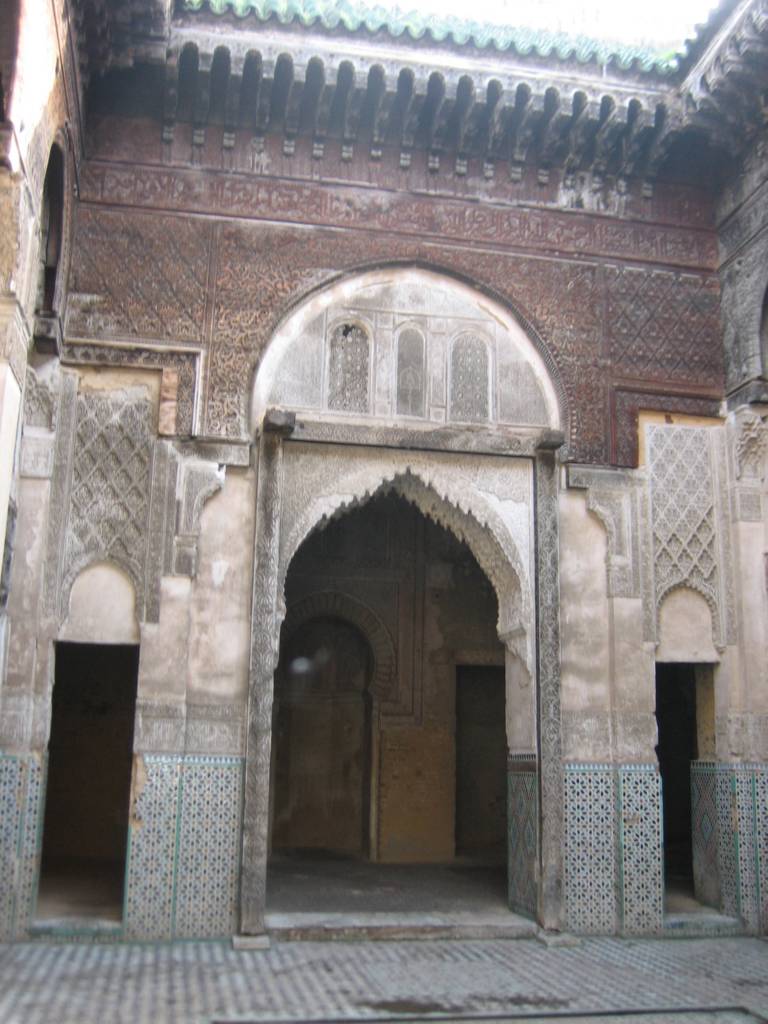


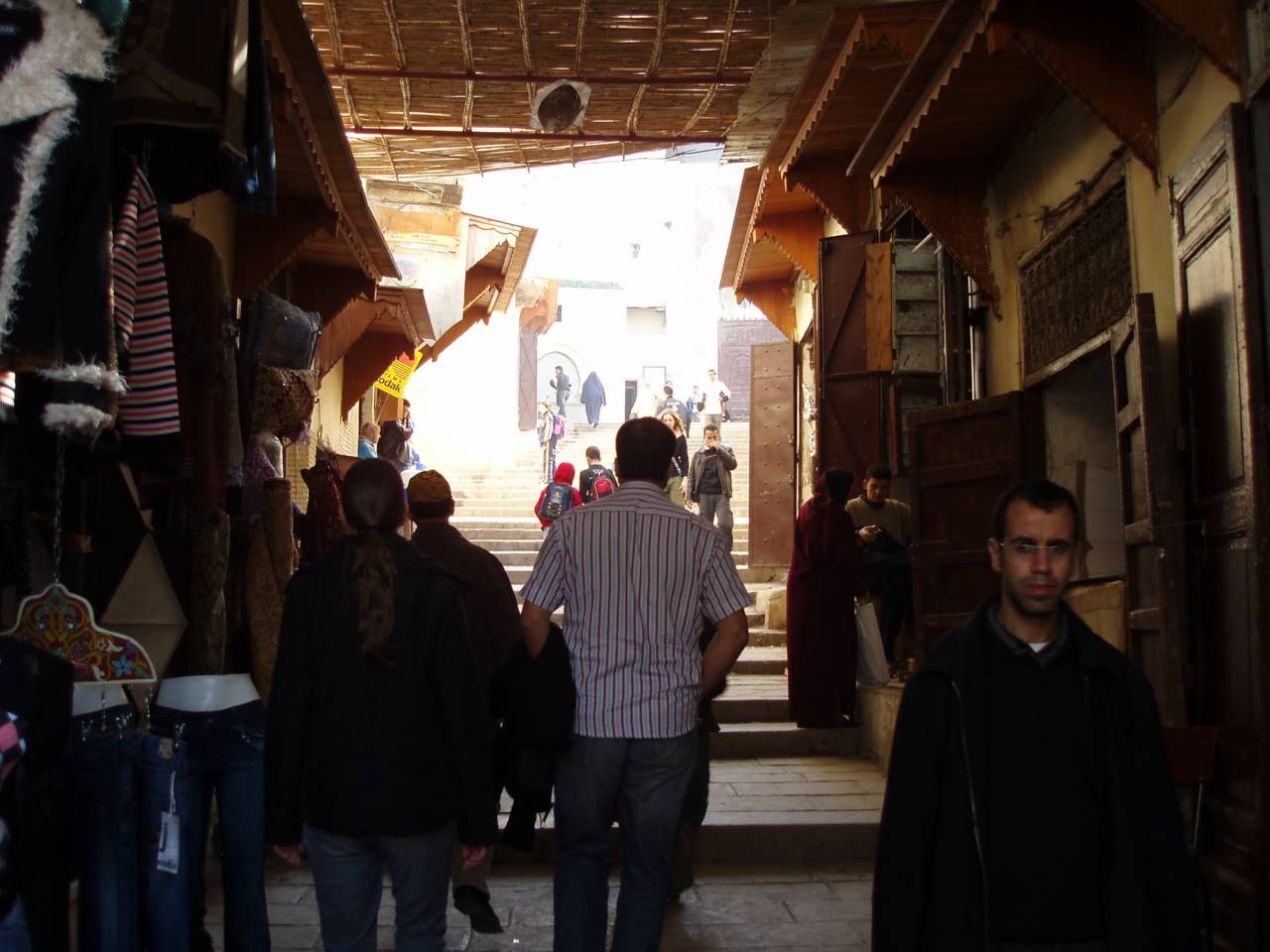


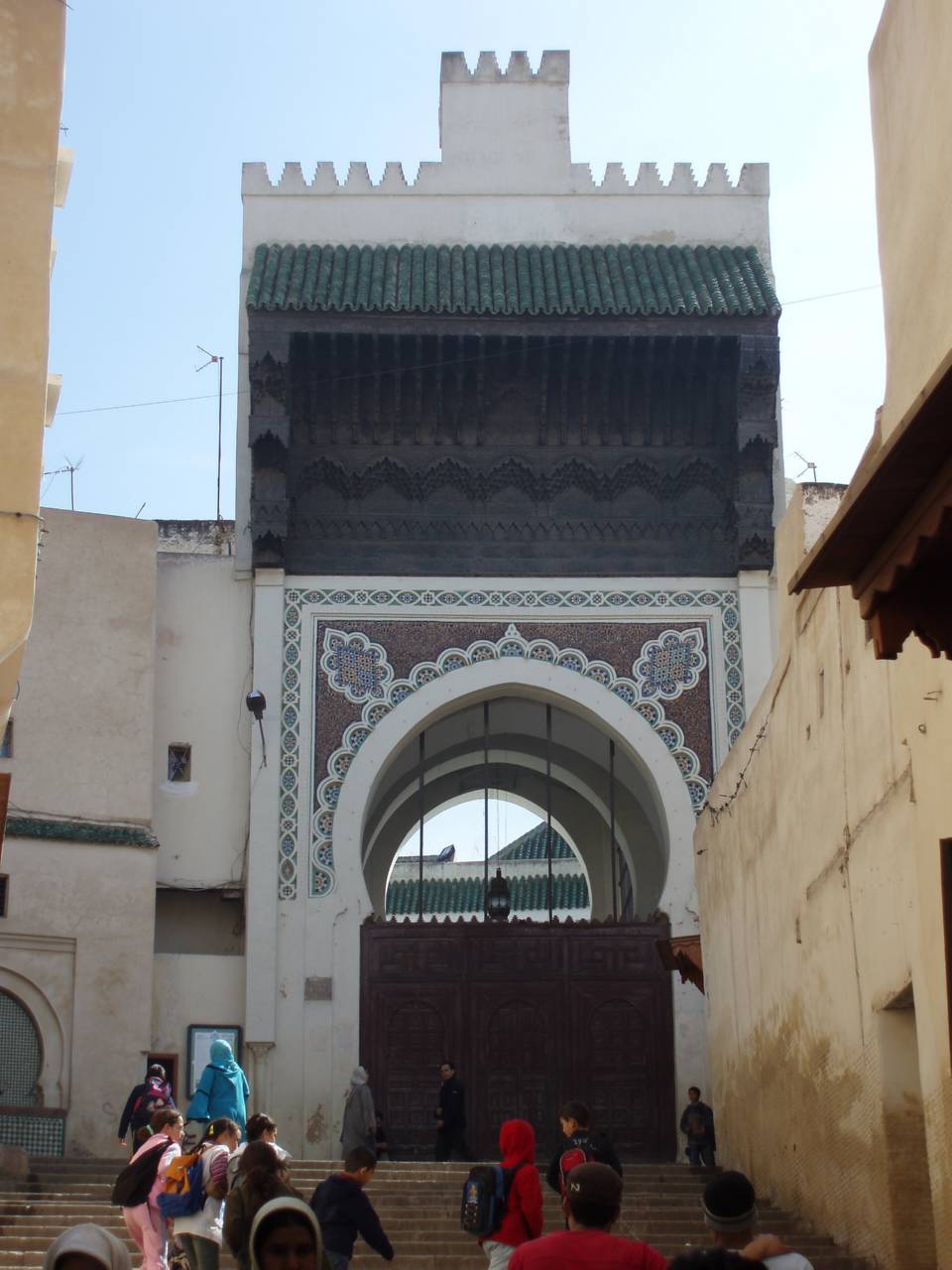

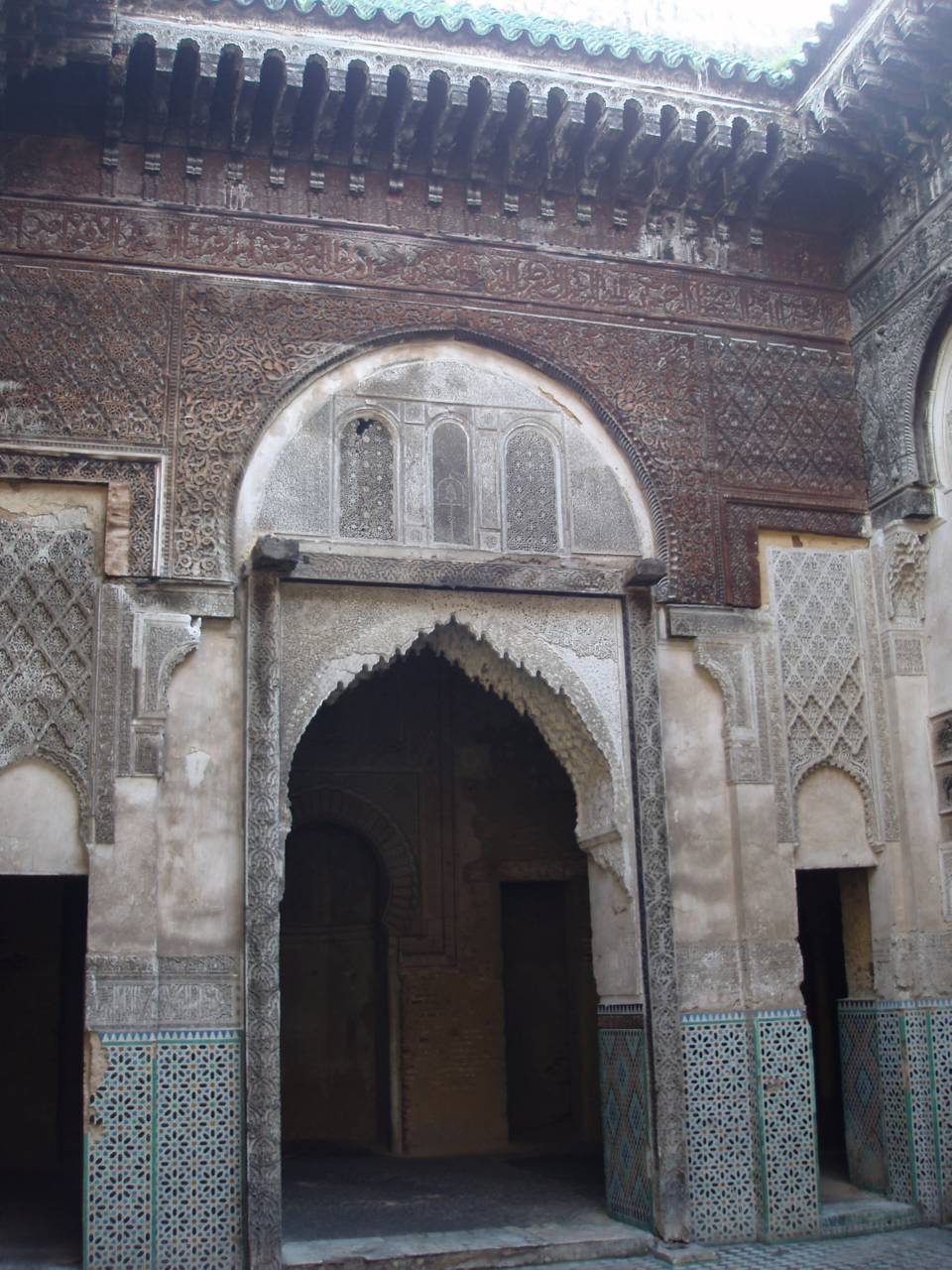

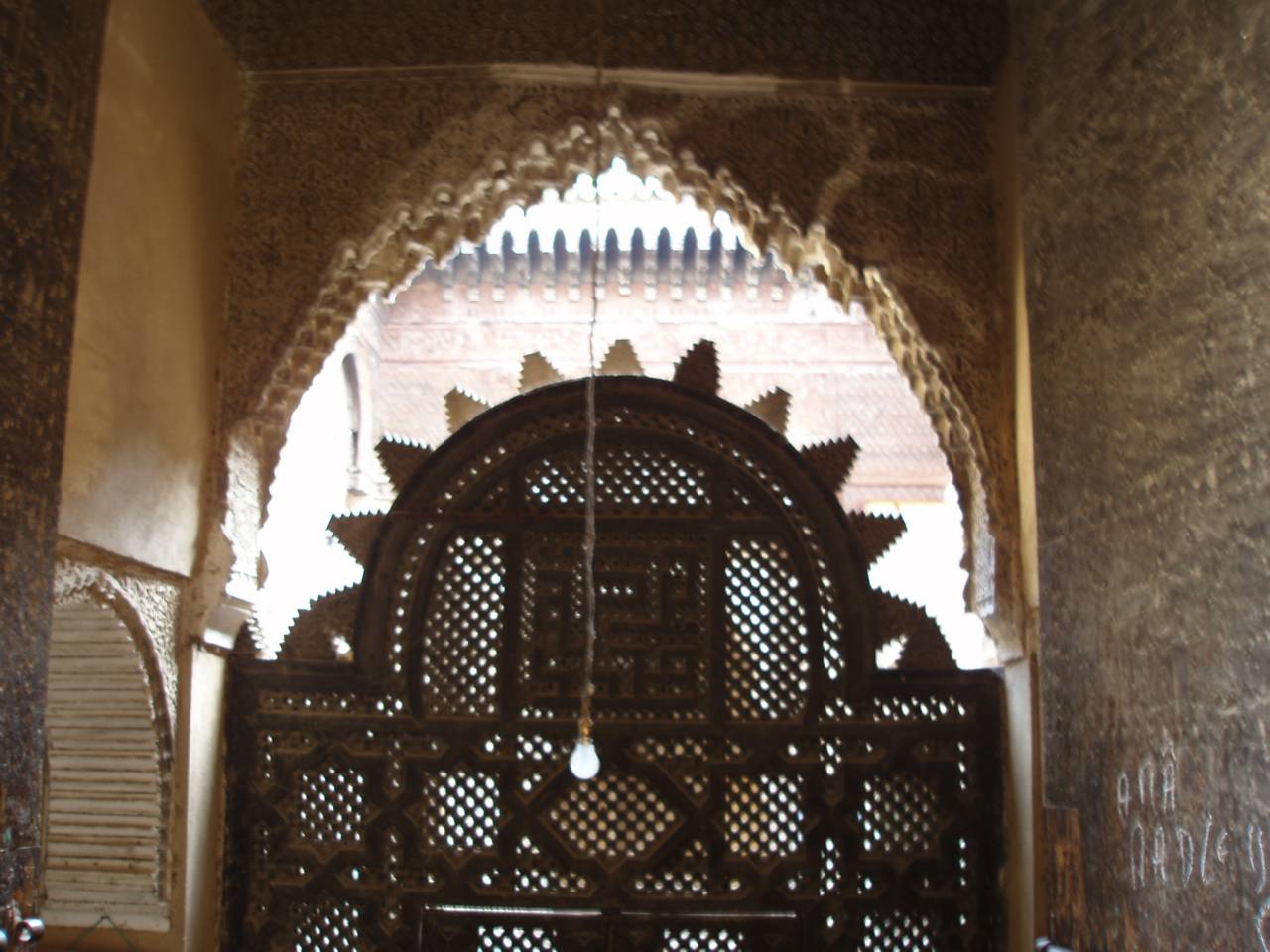


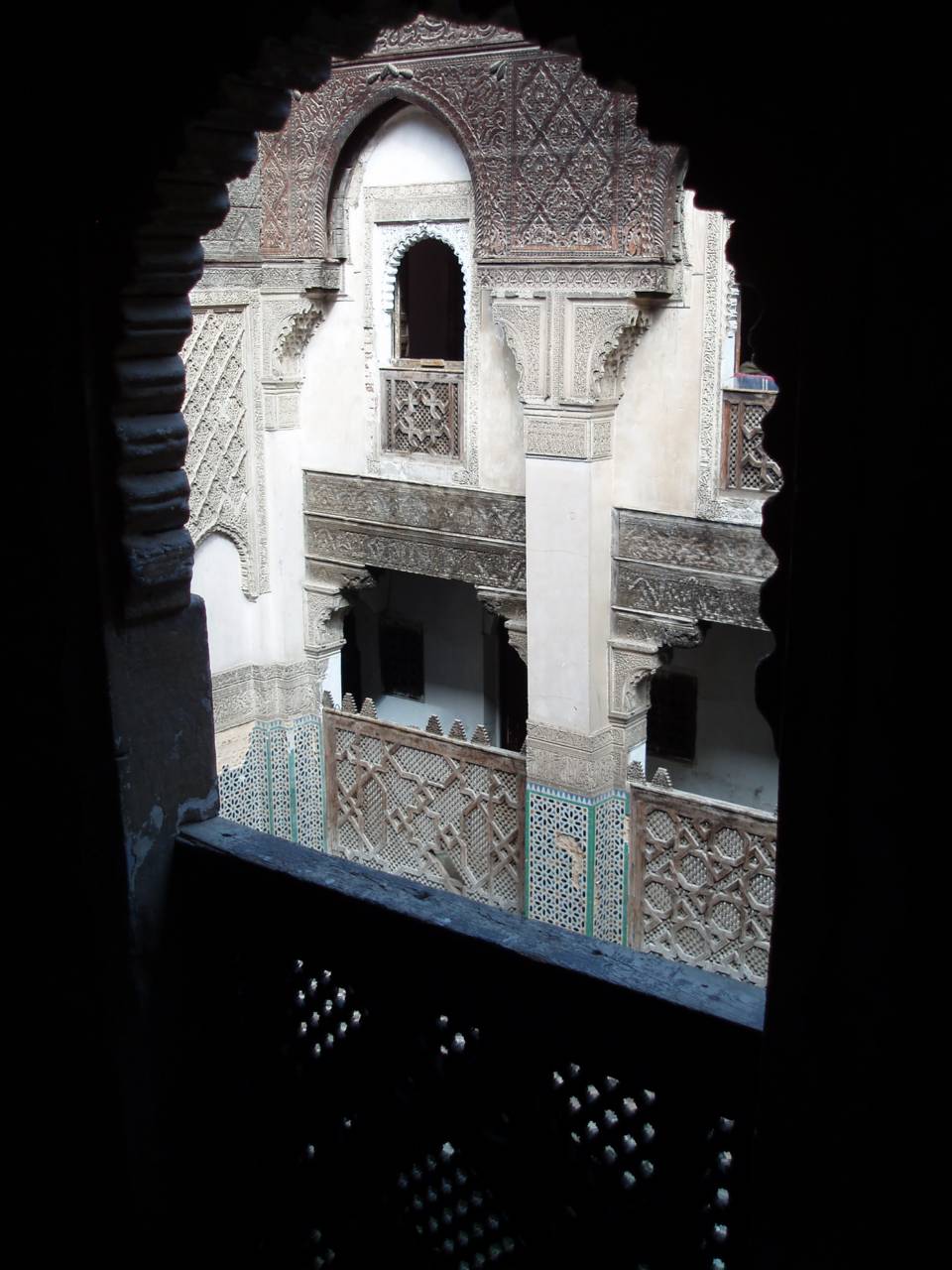
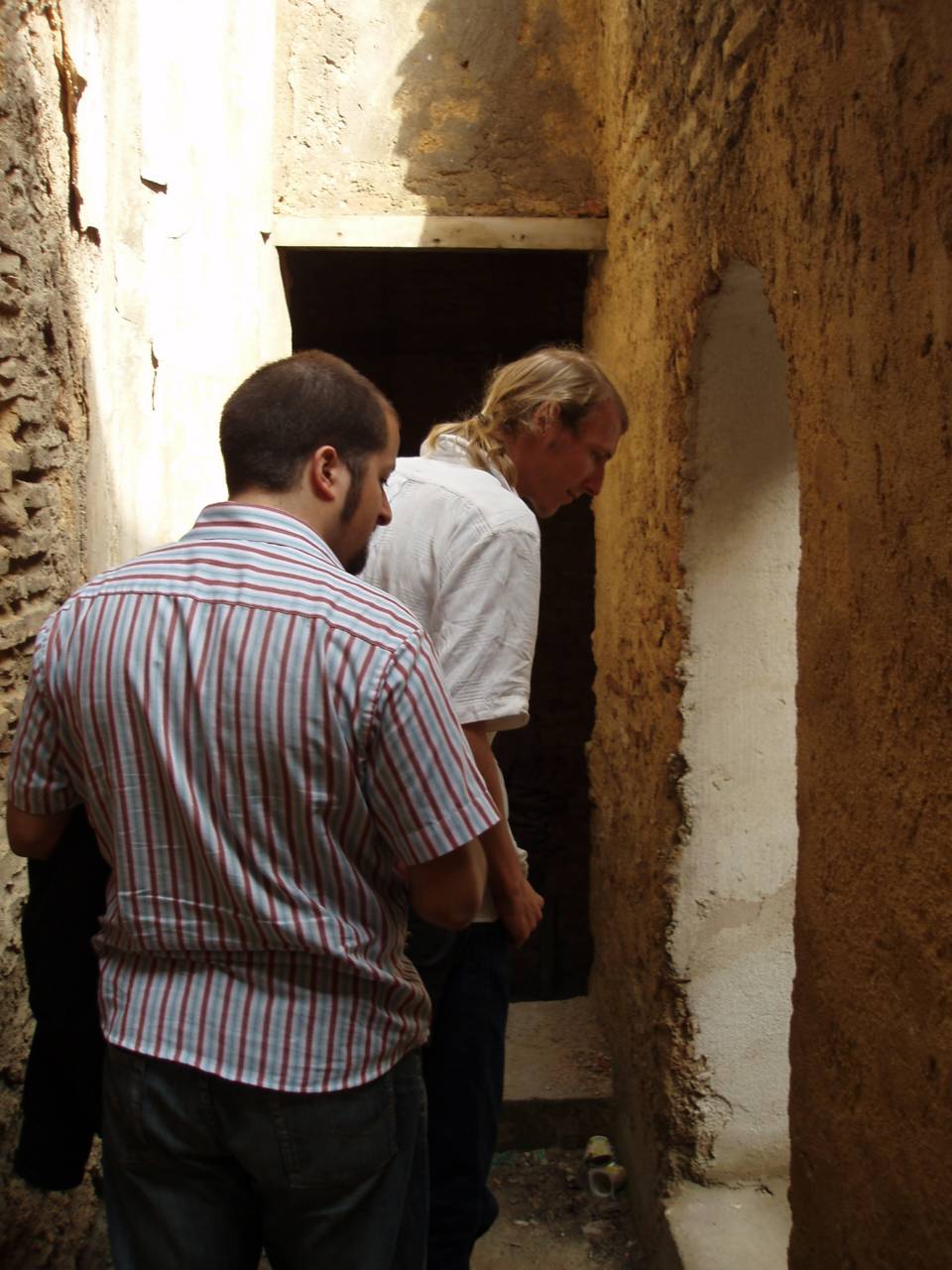
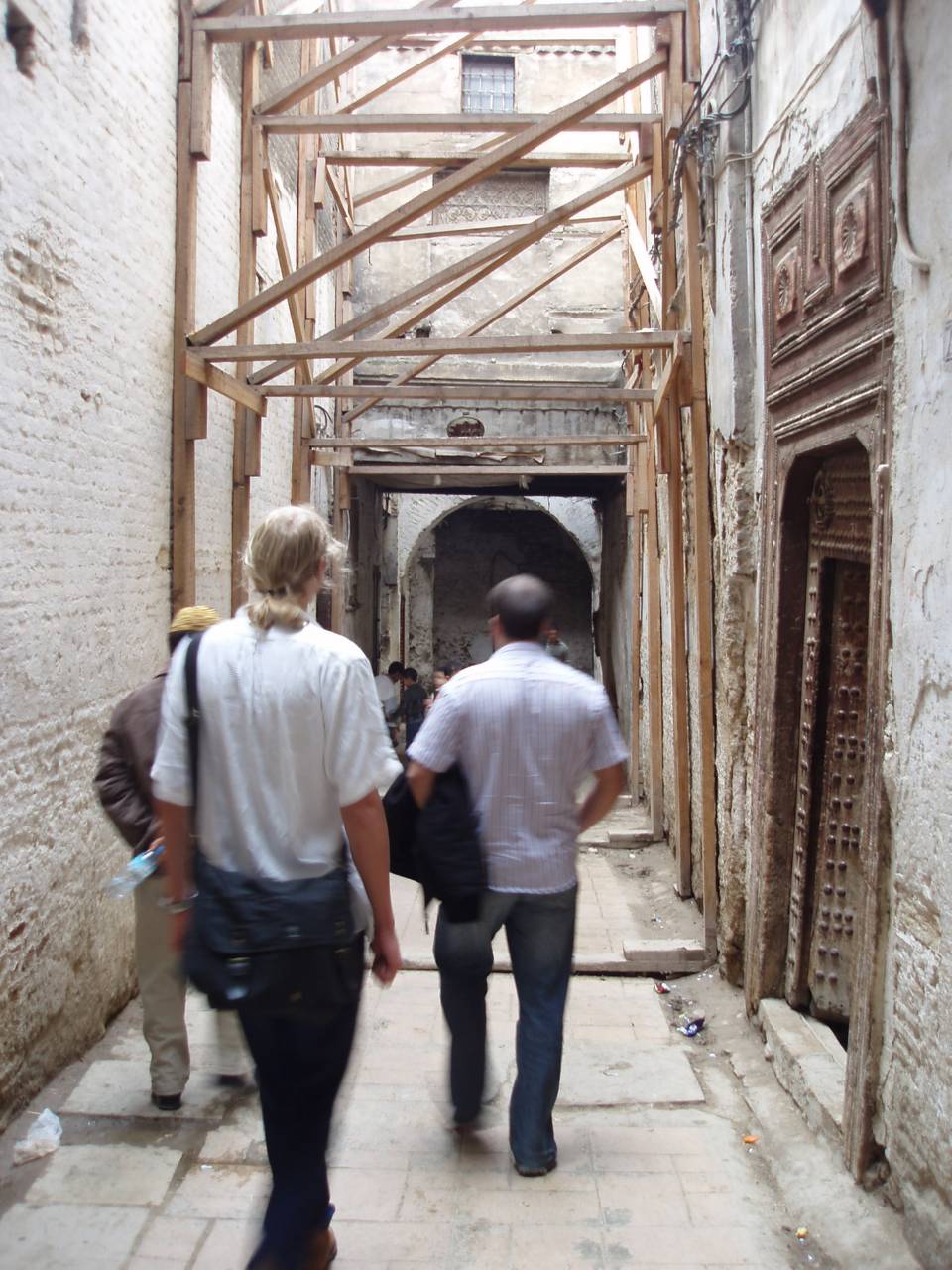
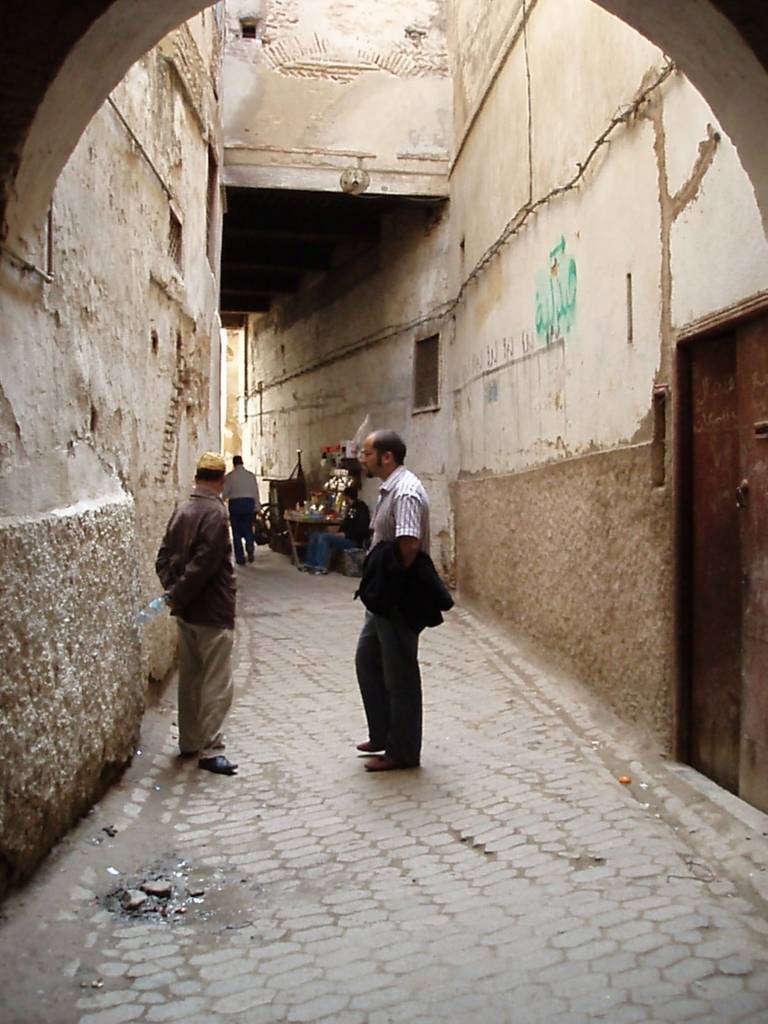
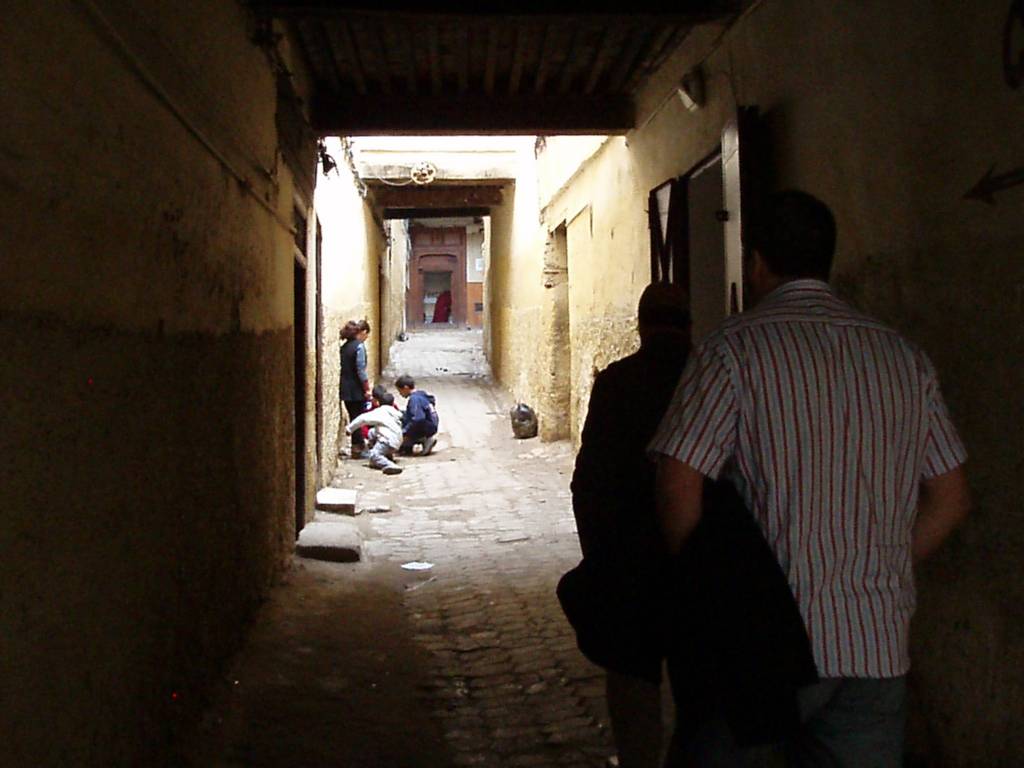

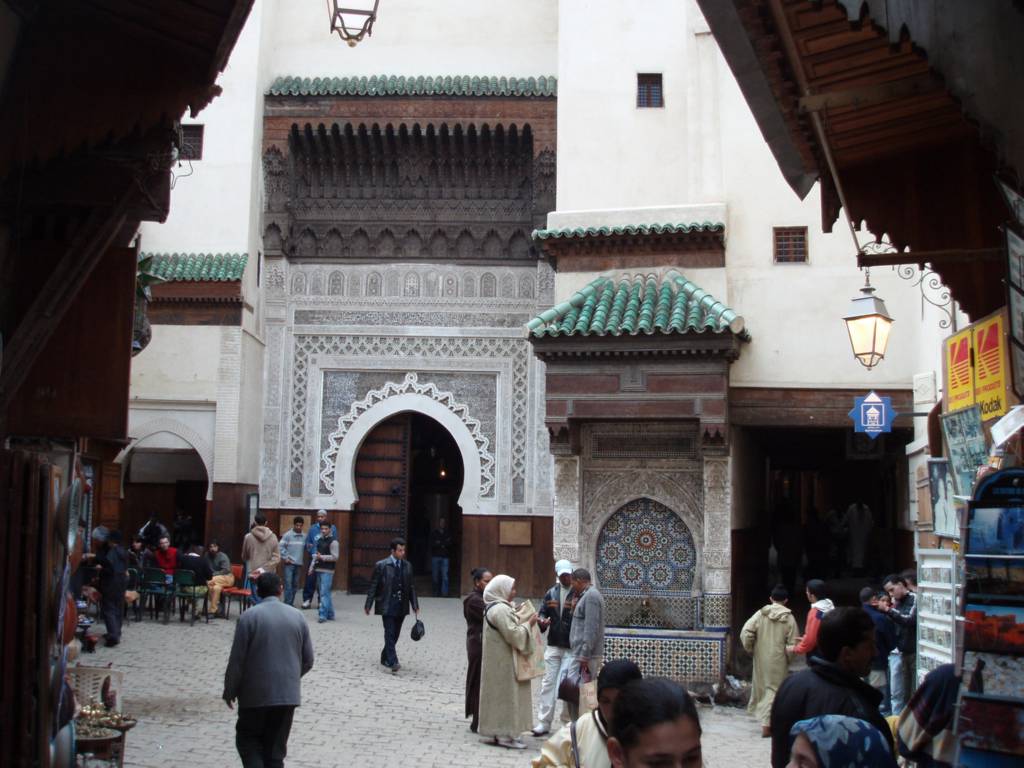
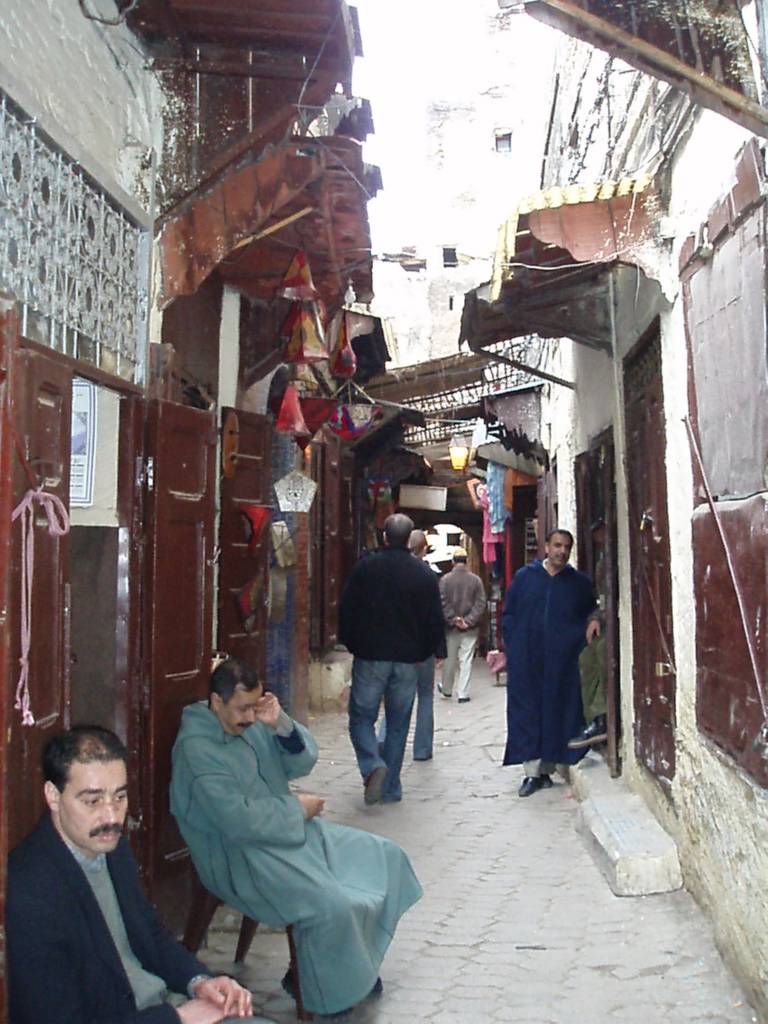

The dyers’ paint pots look like colorful honeycombs
Finally we come to a shop for fabrics, kaftans, djabalas, scarves and of course carpets. We categorically reject the latter from the outset, for which we are shown all sorts of silk fabrics. The retailer takes a special interest in Olli and asks him to try on a djabala. I can see how our Finnish friend suffers from this attention and just wants to disappear.
Djabalas at any costs
I support the dealer in the hope that Olli will relax a bit and have a little more fun. He puts on the Djabala and he poses for the cameras. Then the dealer asks the dangerous question what Olli thinks, how much a djabala costs. Of course you can only lose with such an answer. Our Finn squirms and assures us that he doesn’t want to buy a Djabala. Finally he manages to say “200 dirhams”, to which the dealer reacts indignantly, pulls out a notepad and writes 1500 dirhams on it, but immediately crosses it out again and then puts 1100 under it. Special price. Only today. Special offer only for Finns.
Our Finn once again emphasizes the Djabala and that he doesn’t want to buy anything else. But the dealer does not give up and asks him what he would be willing to pay for the Djabala. He could name any price.
Olli looks hopeless and murmurs “50 dirhams” which causes the trader’s face to turn chalk white and he walks up to our guide and wants to know if this Northern European is joking or teasing him. Since the situation is now coming to a head, I take Olli by the arm and pull him behind me, compliment us past the dealer and assure him once again of the extraordinary quality of his goods. Each of us feels like we have a dozen knives in our backs.
Now the tour is almost over and the guide drops us off at our hotel. He offers us that we can get back to him if we needed his help again. Although he should have realized that his commission business with us is doing pretty badly.
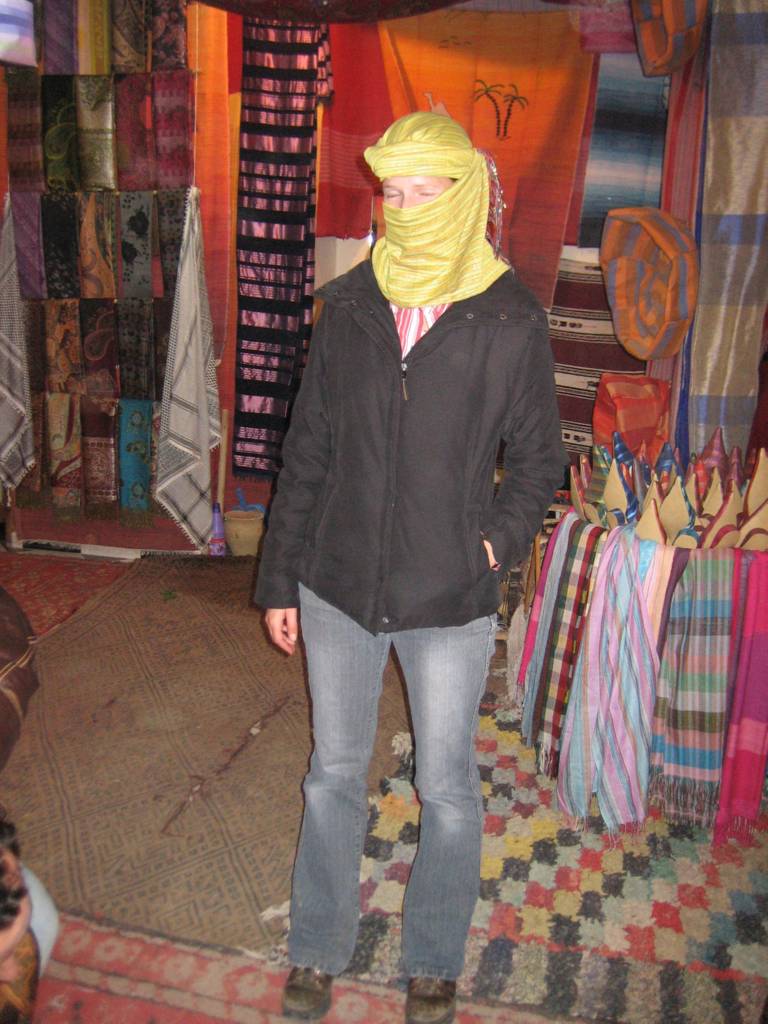
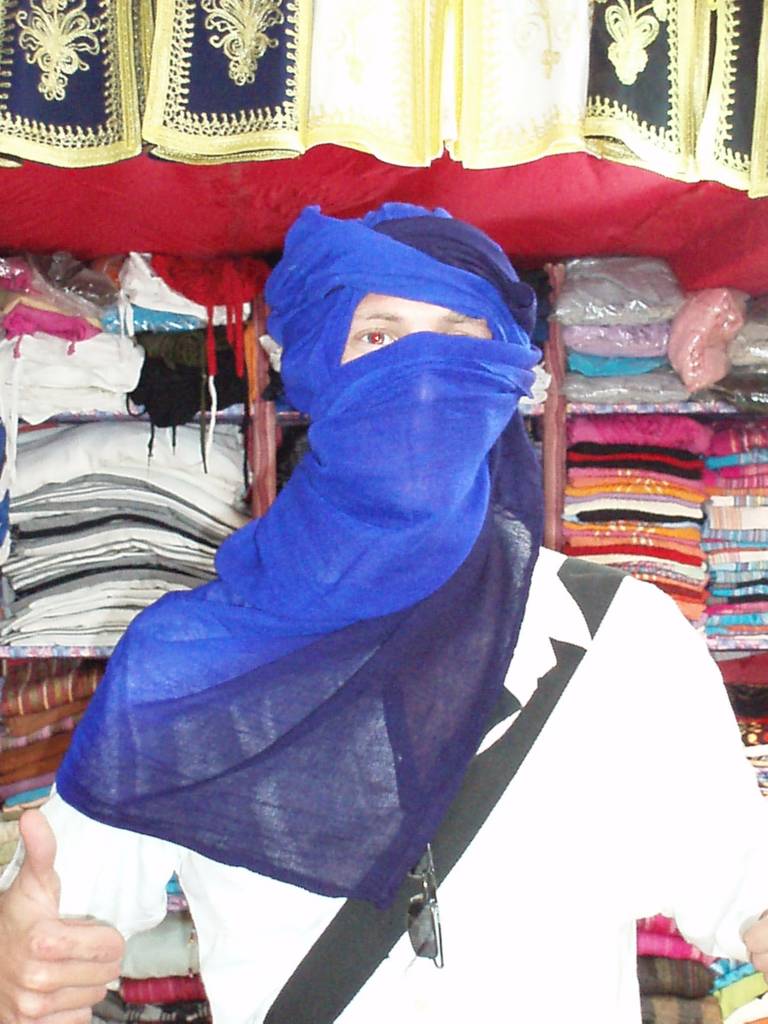

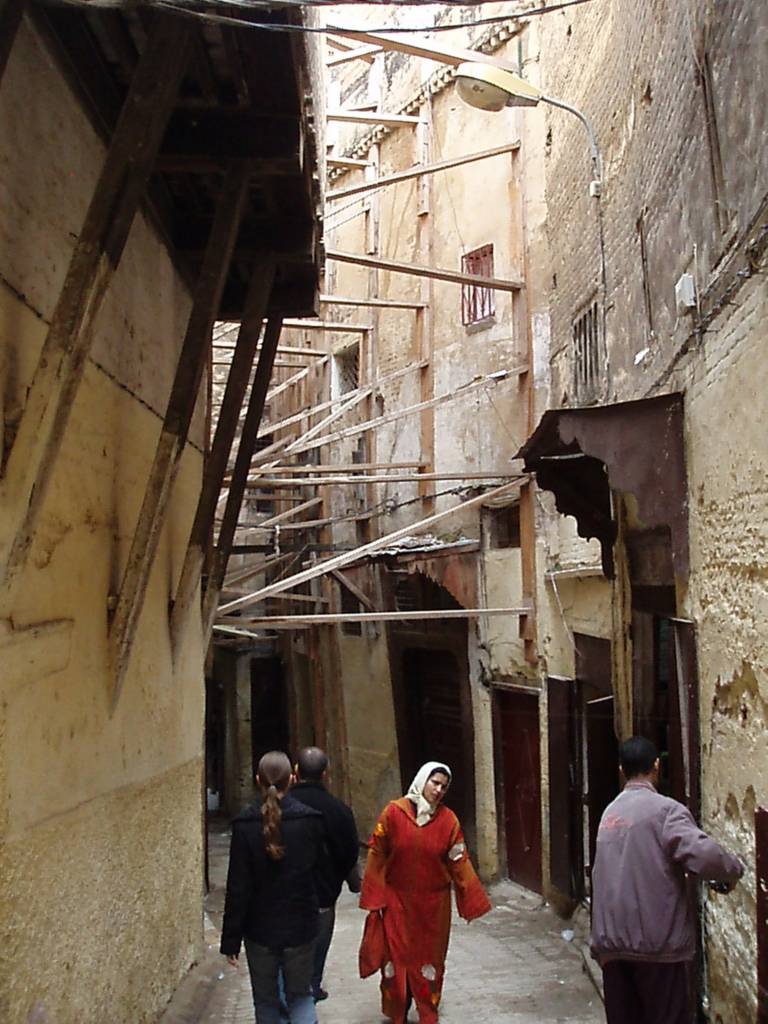
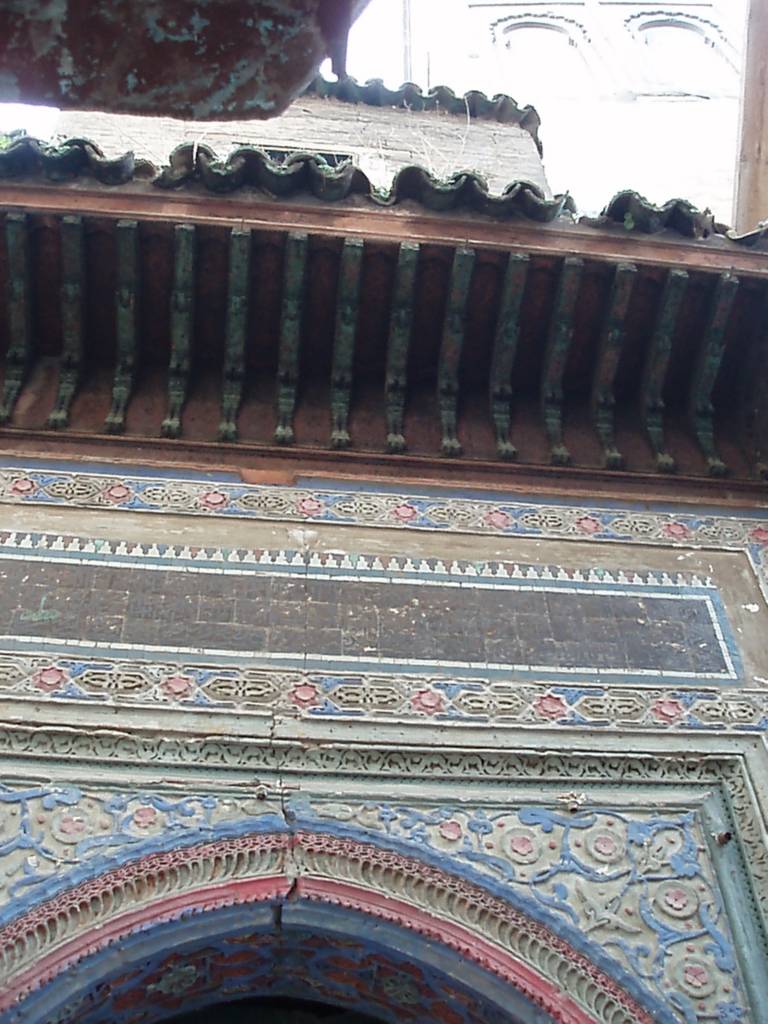
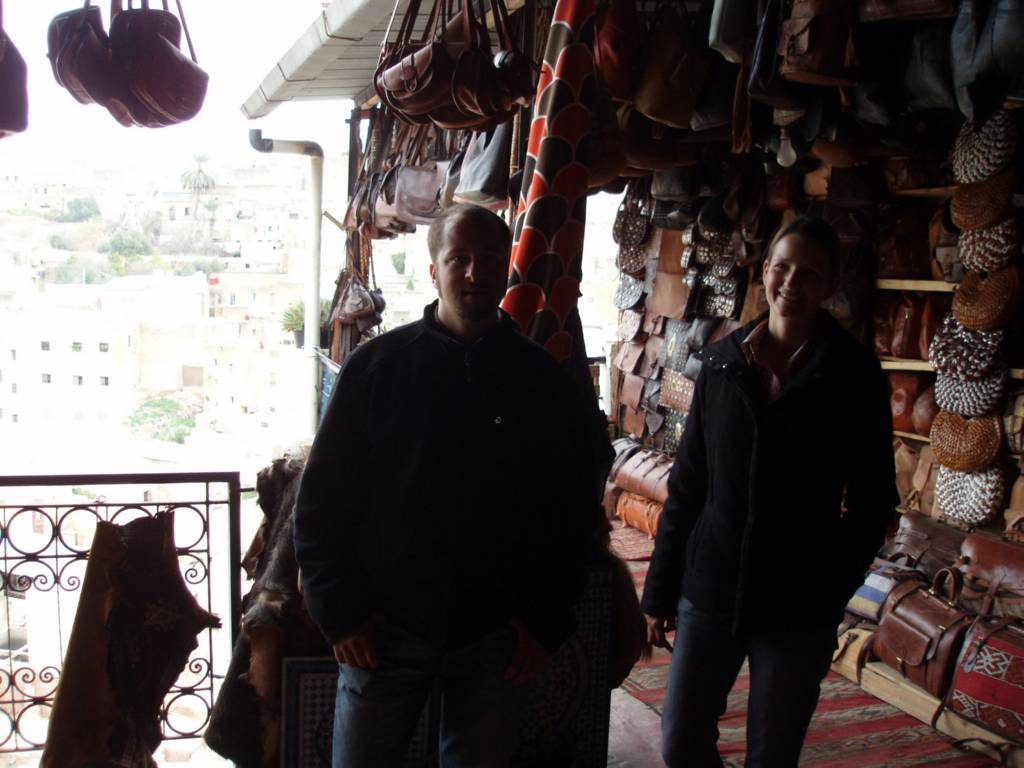

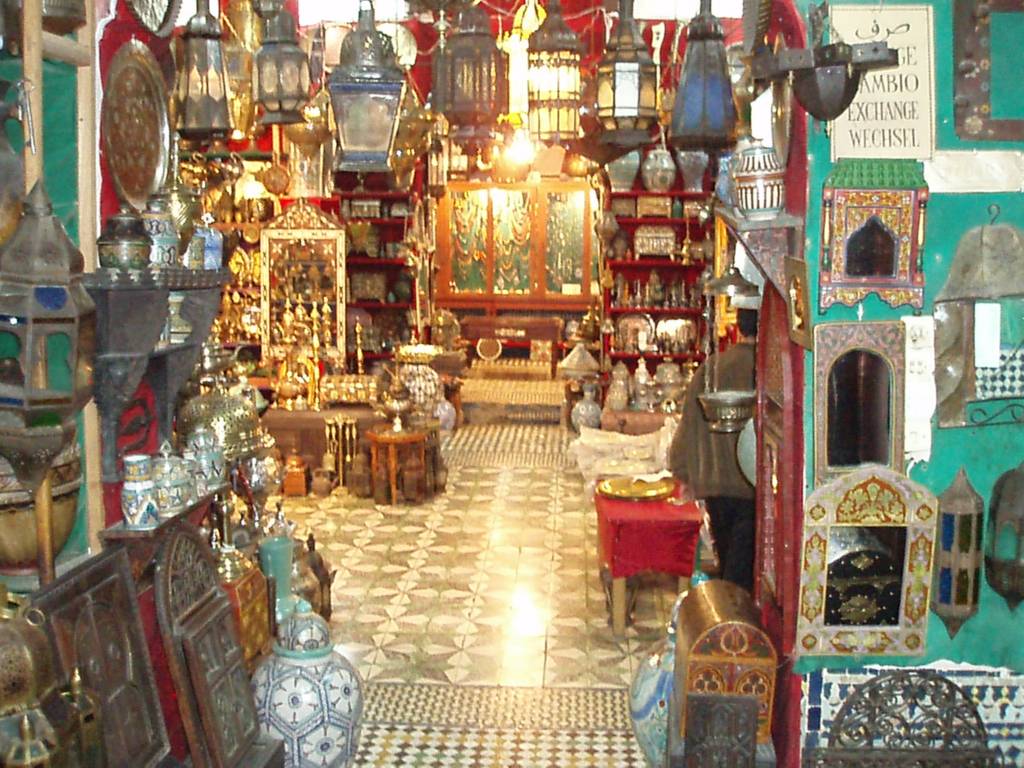
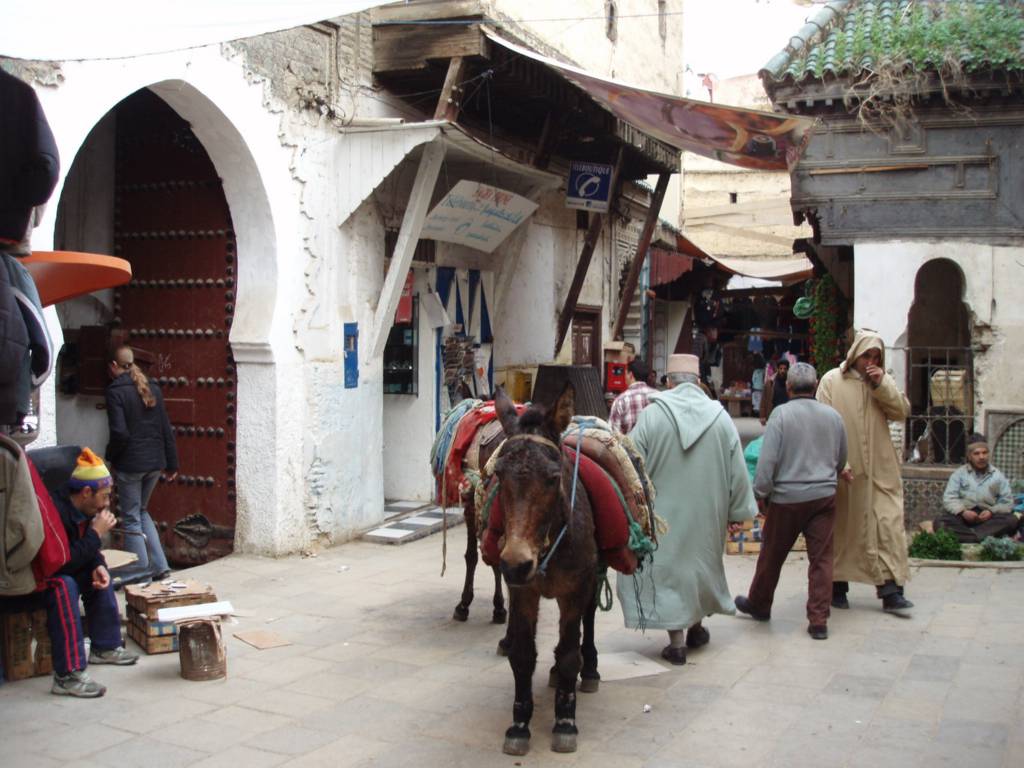
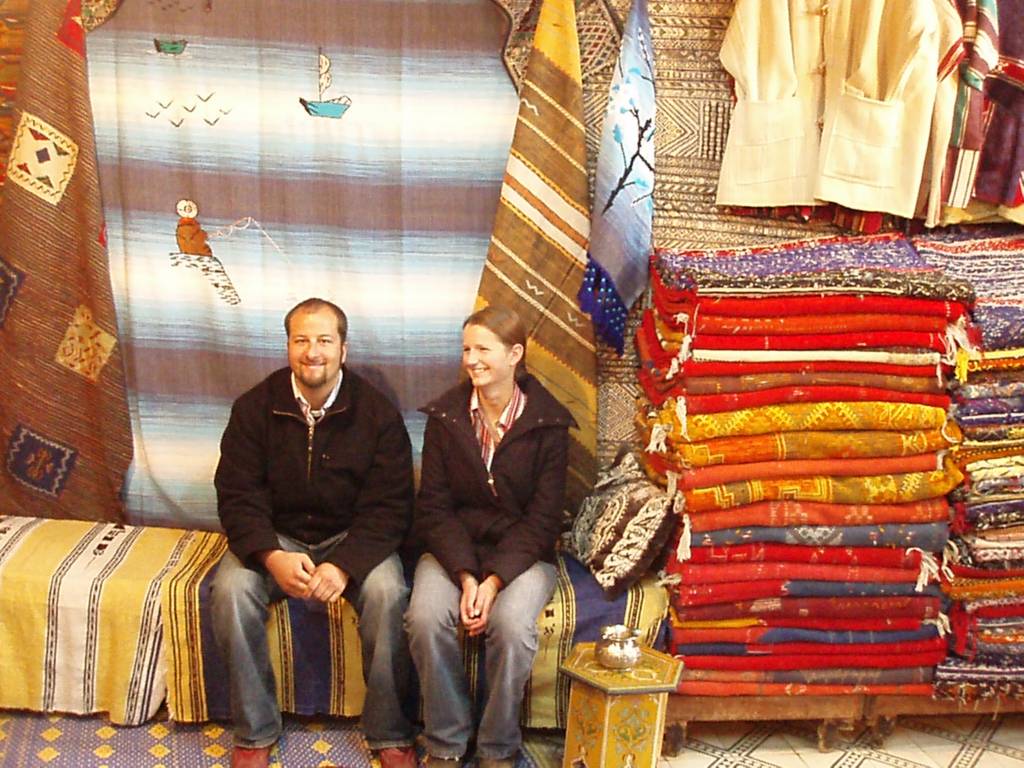
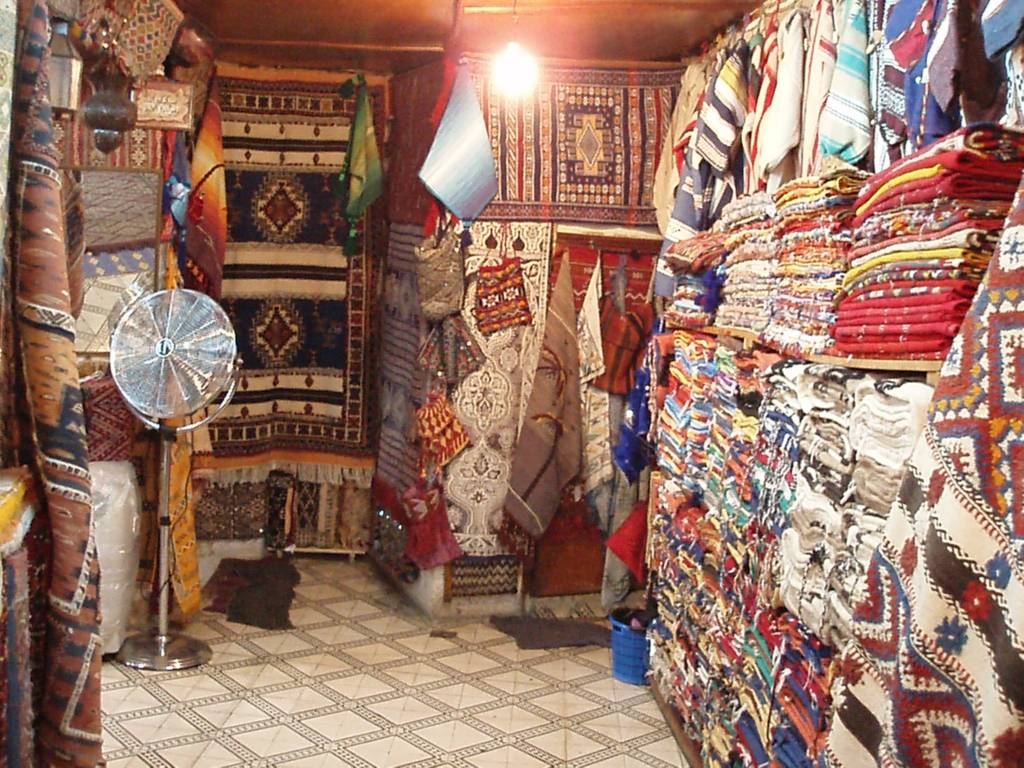
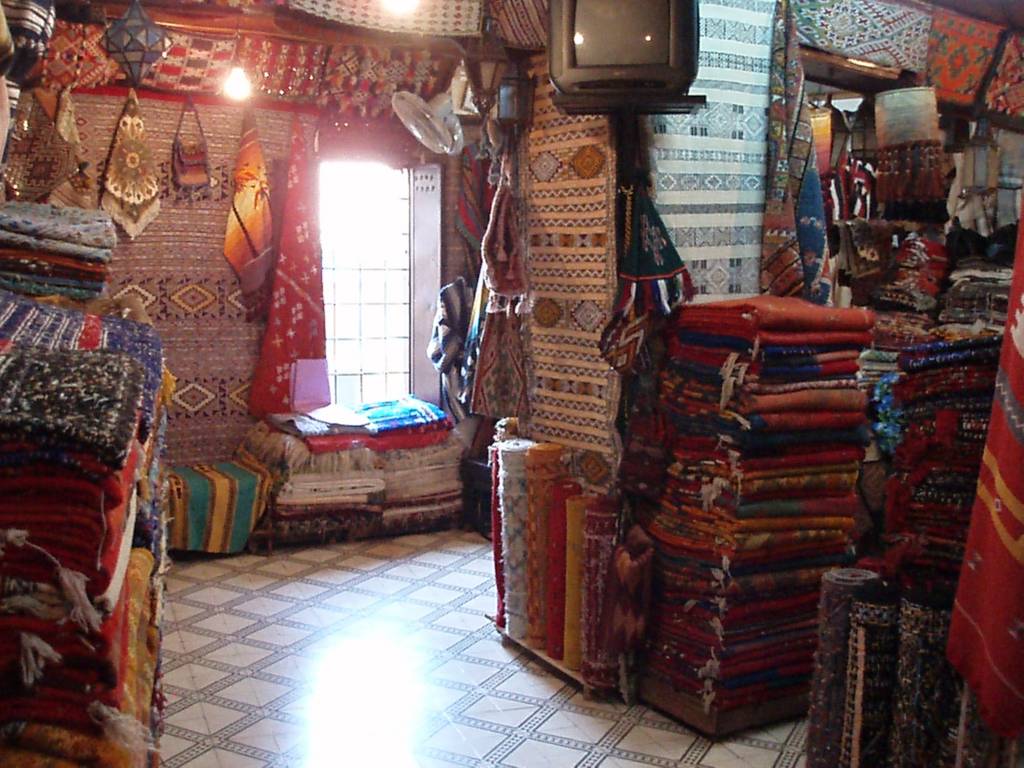
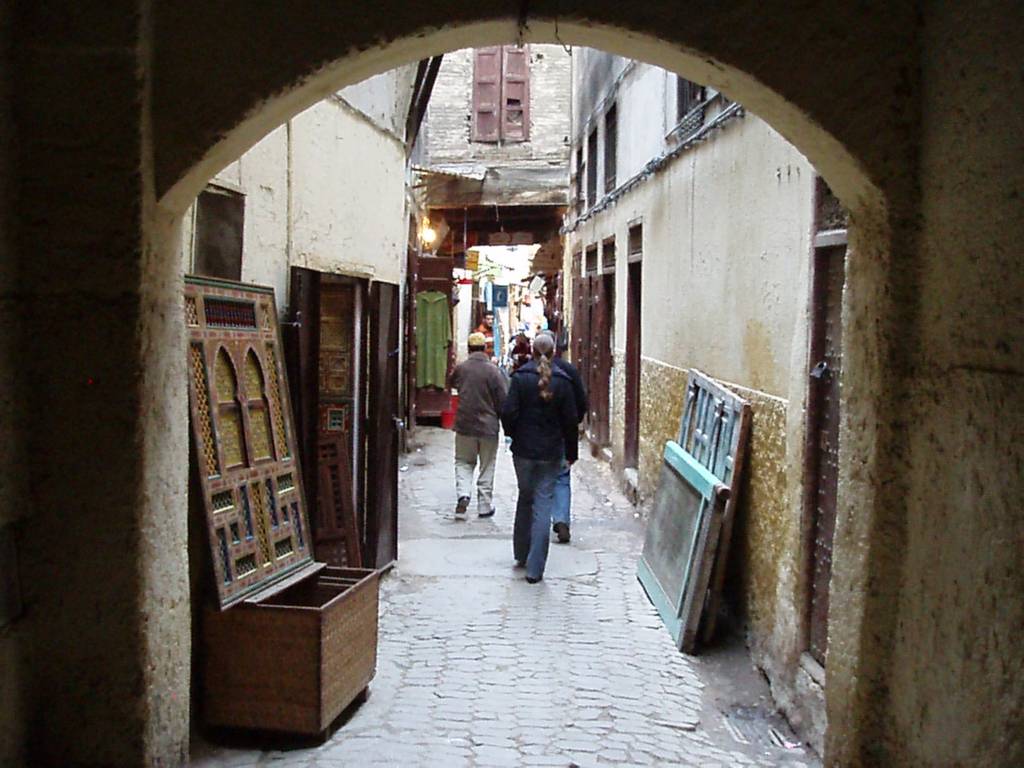
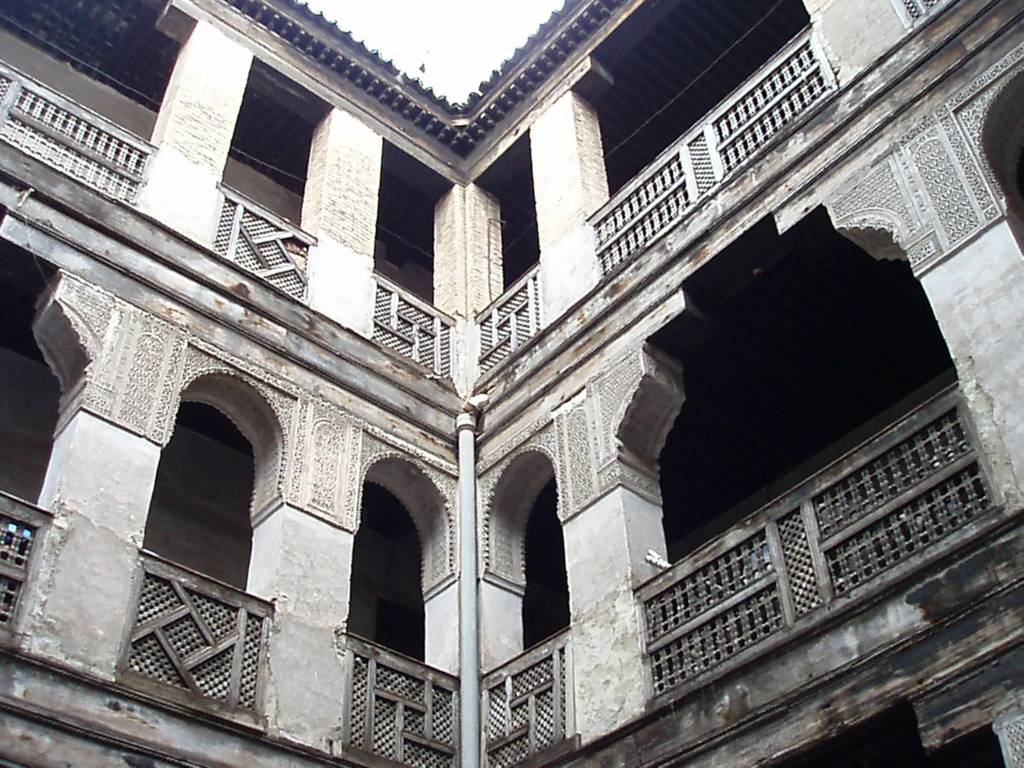
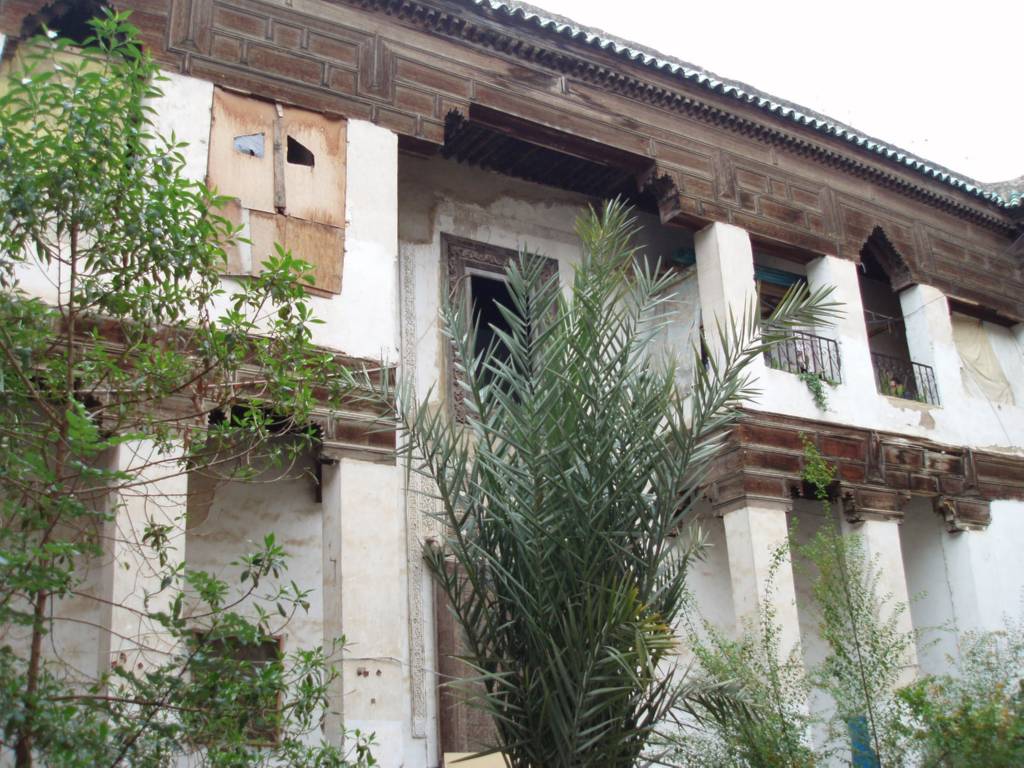
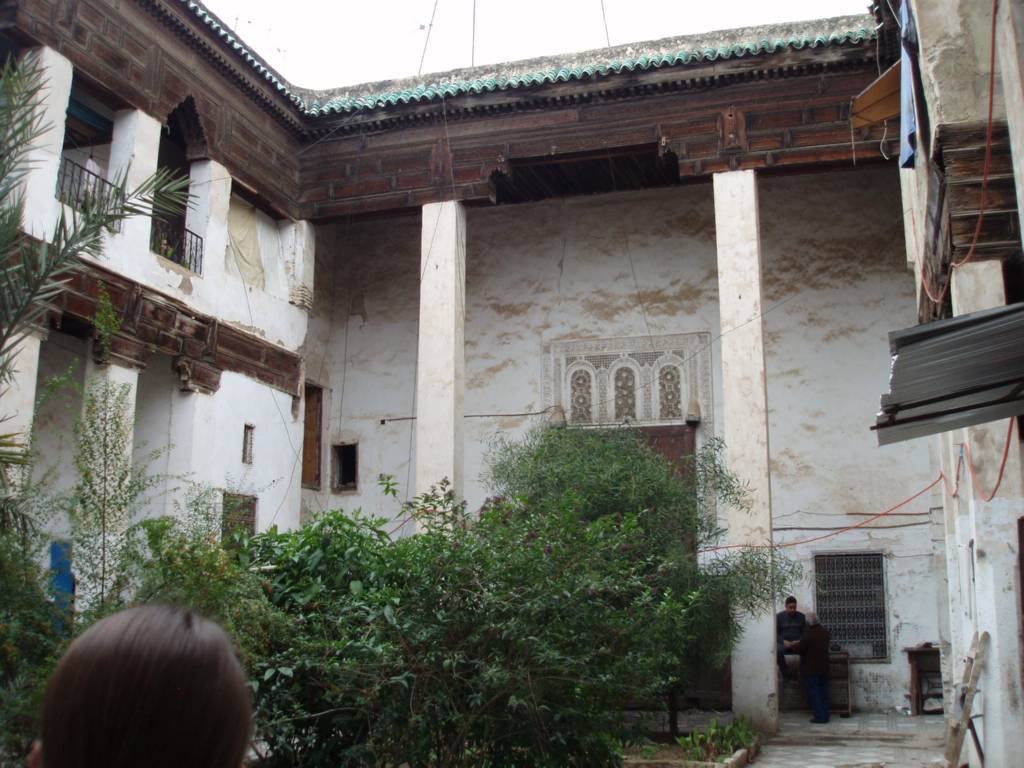
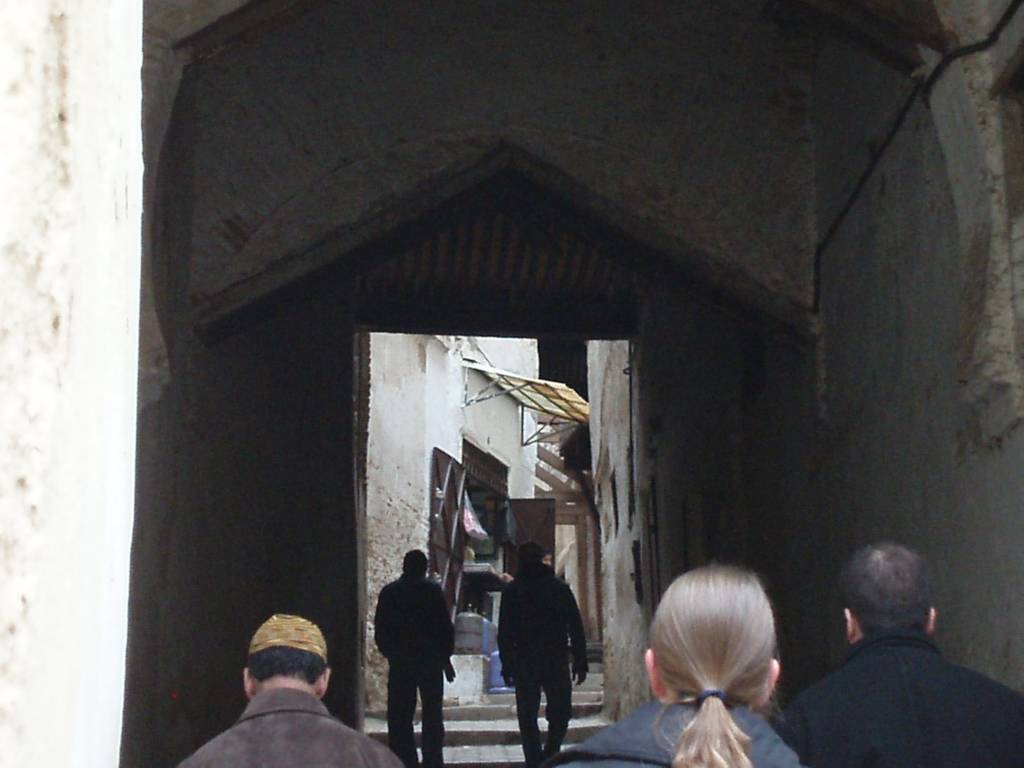
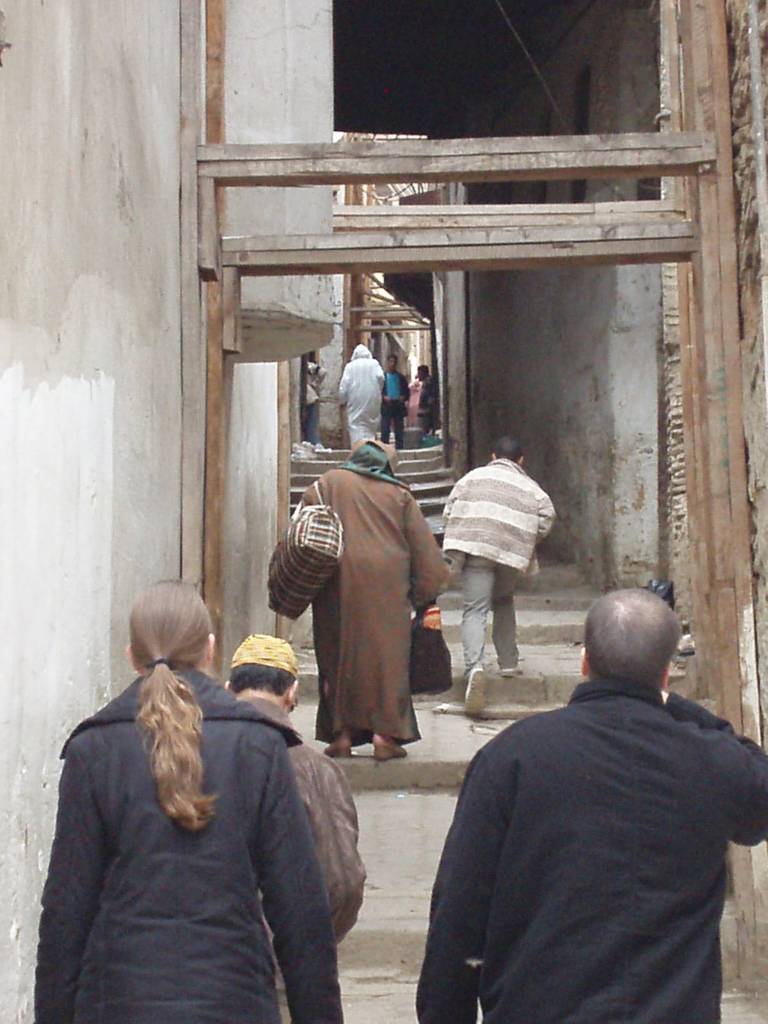

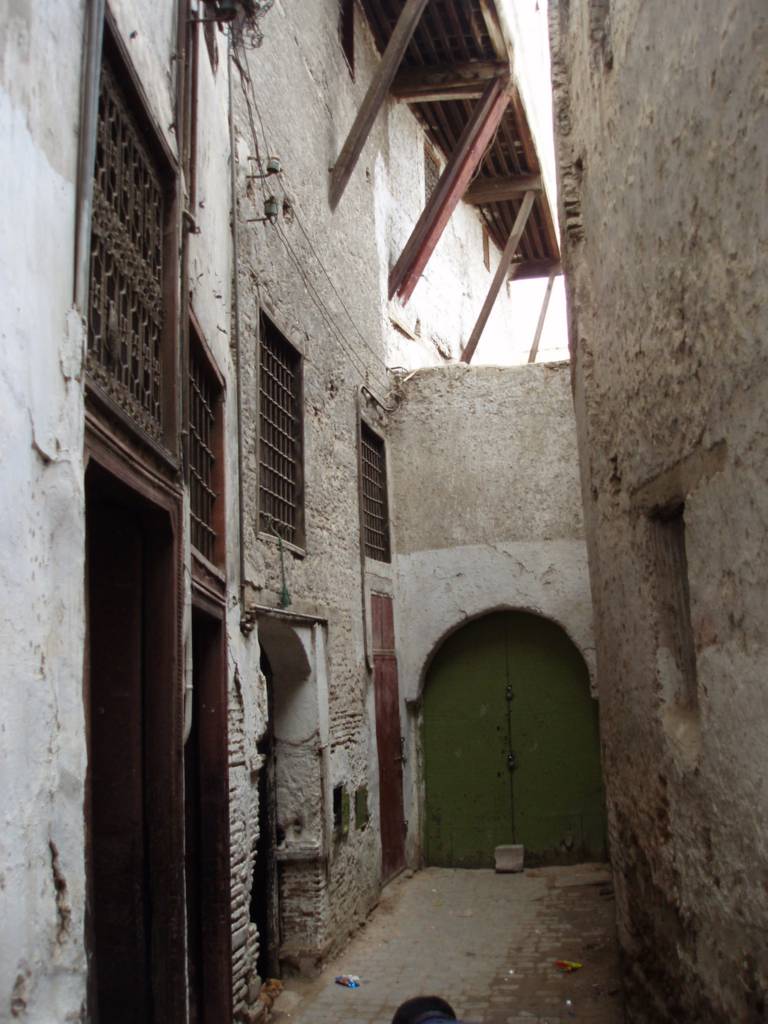
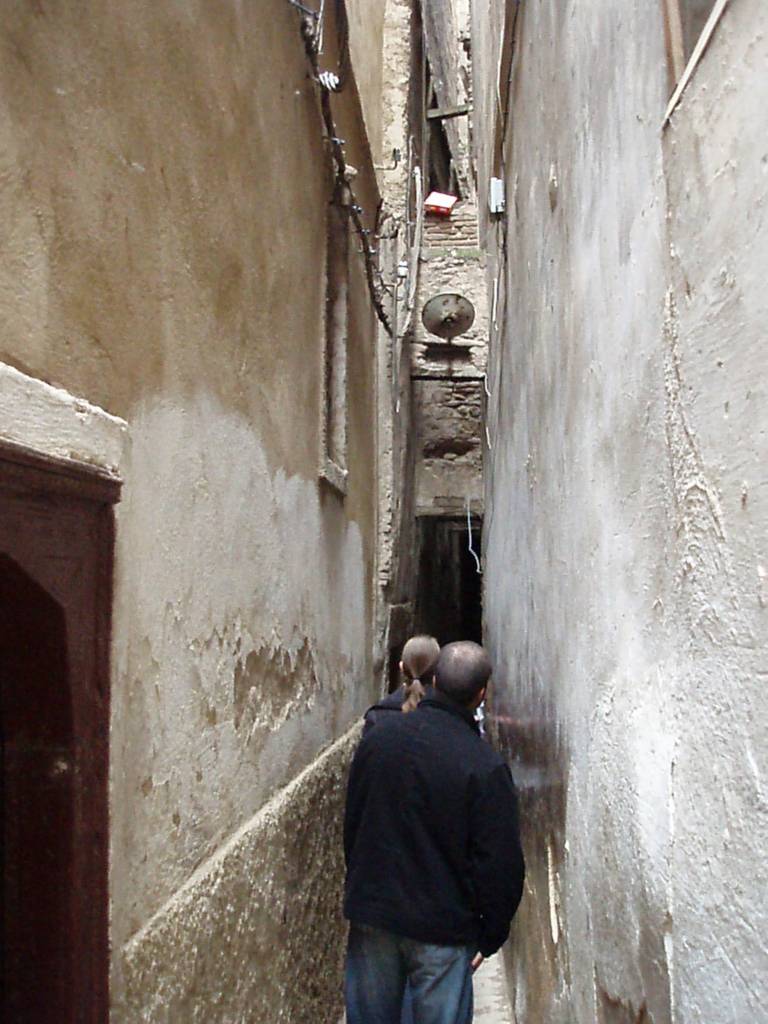
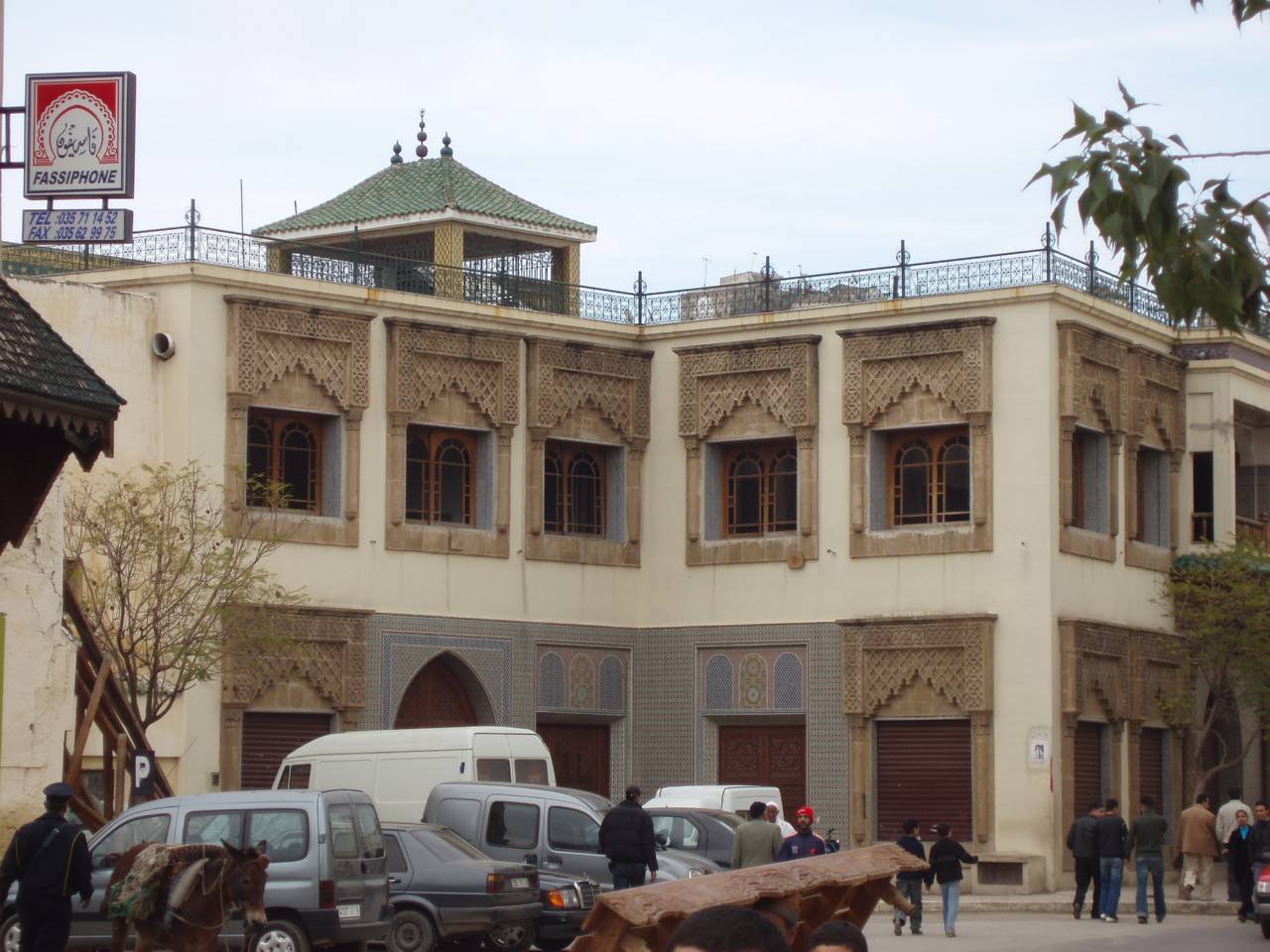
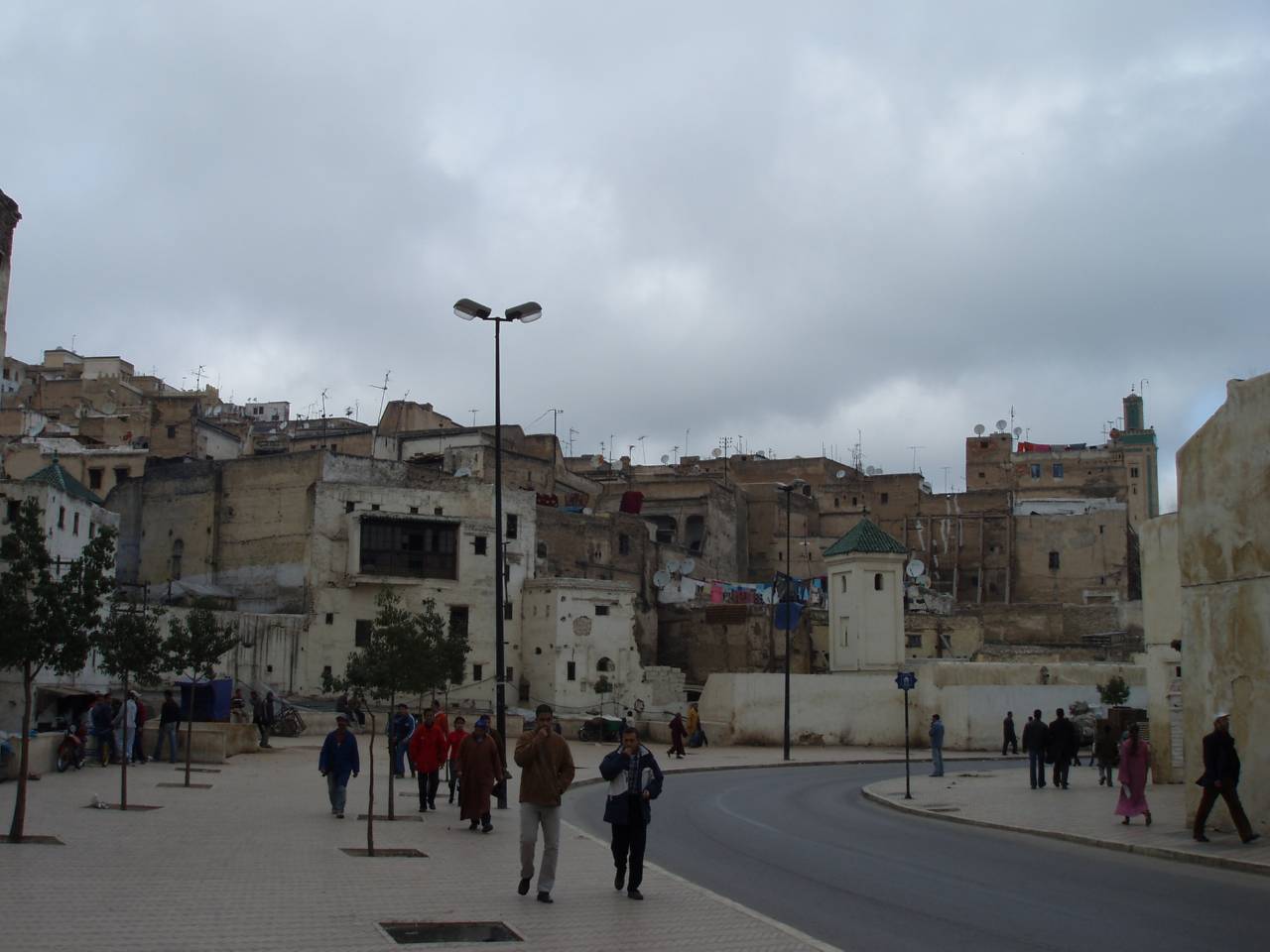

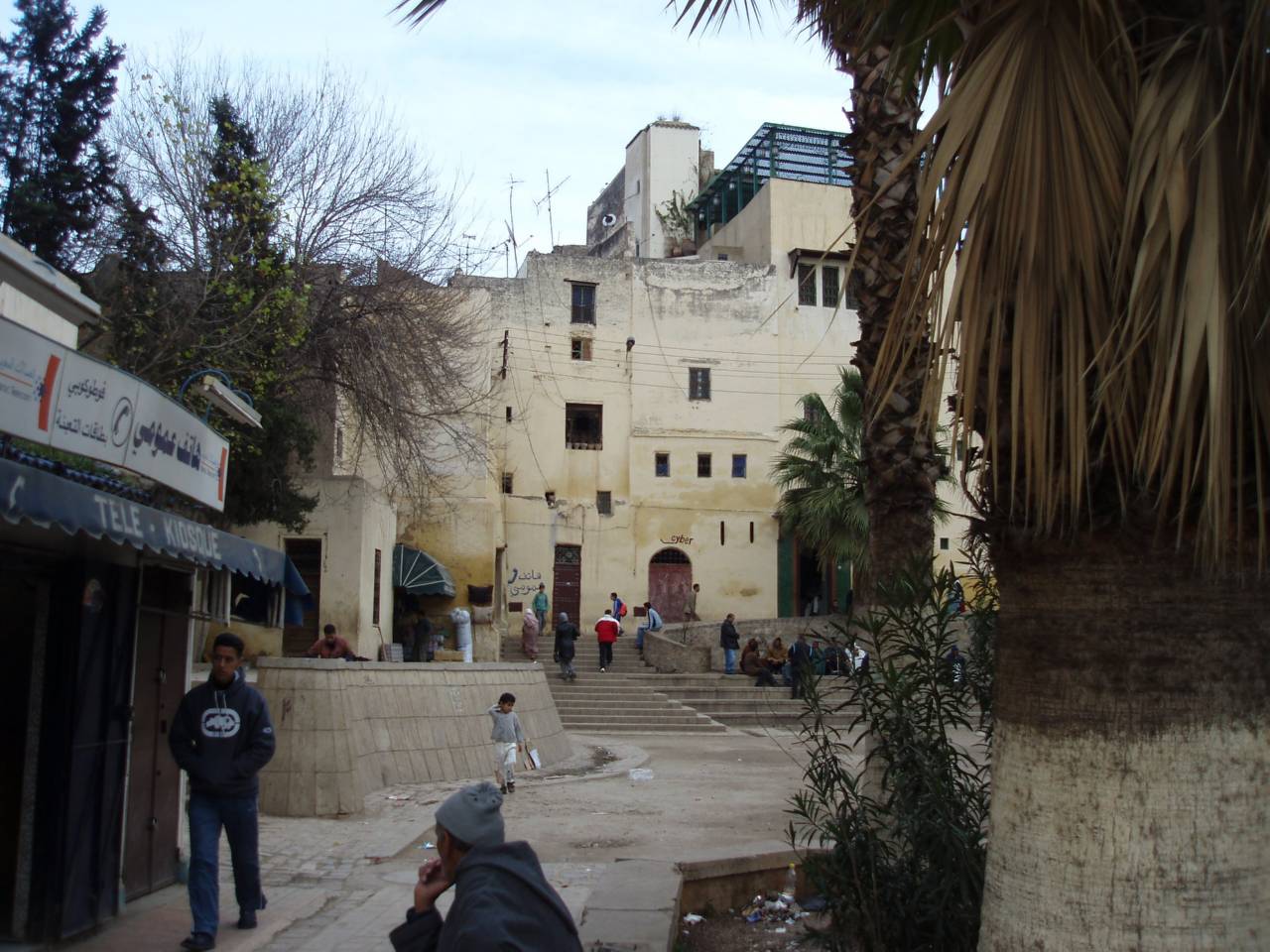

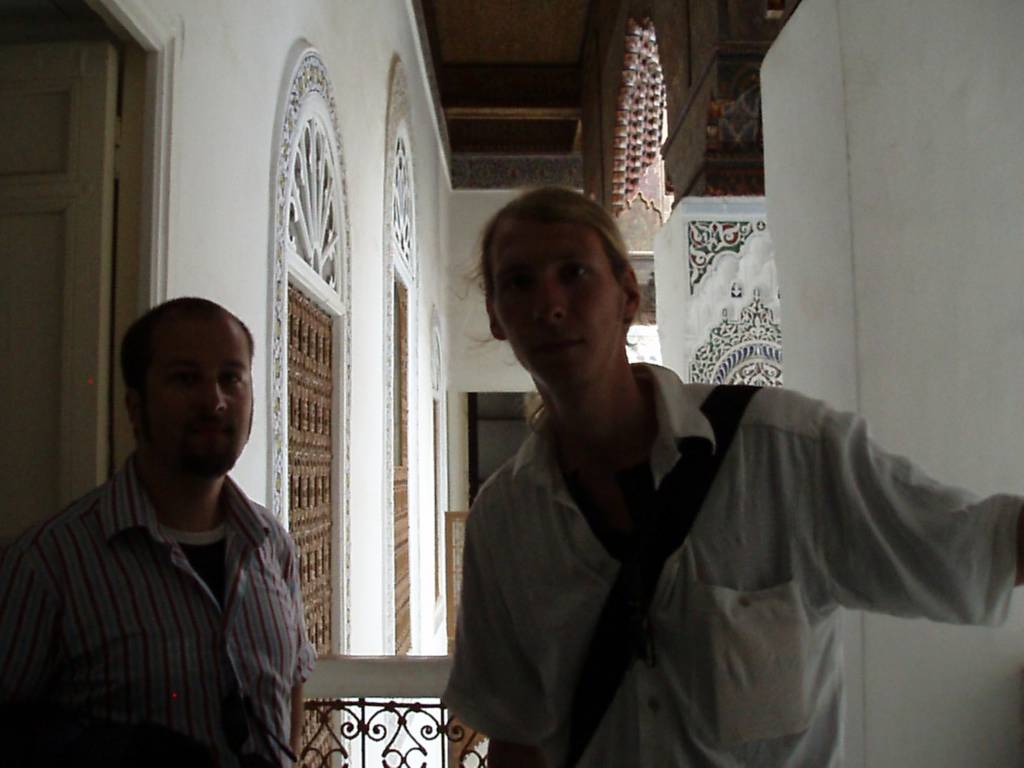
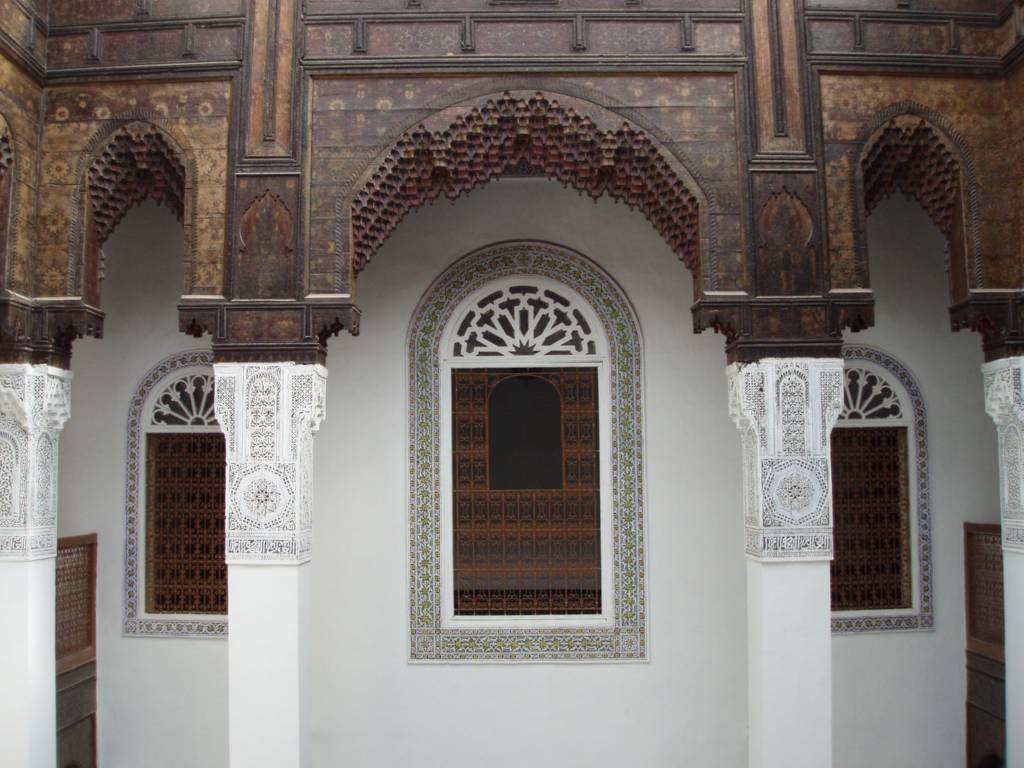
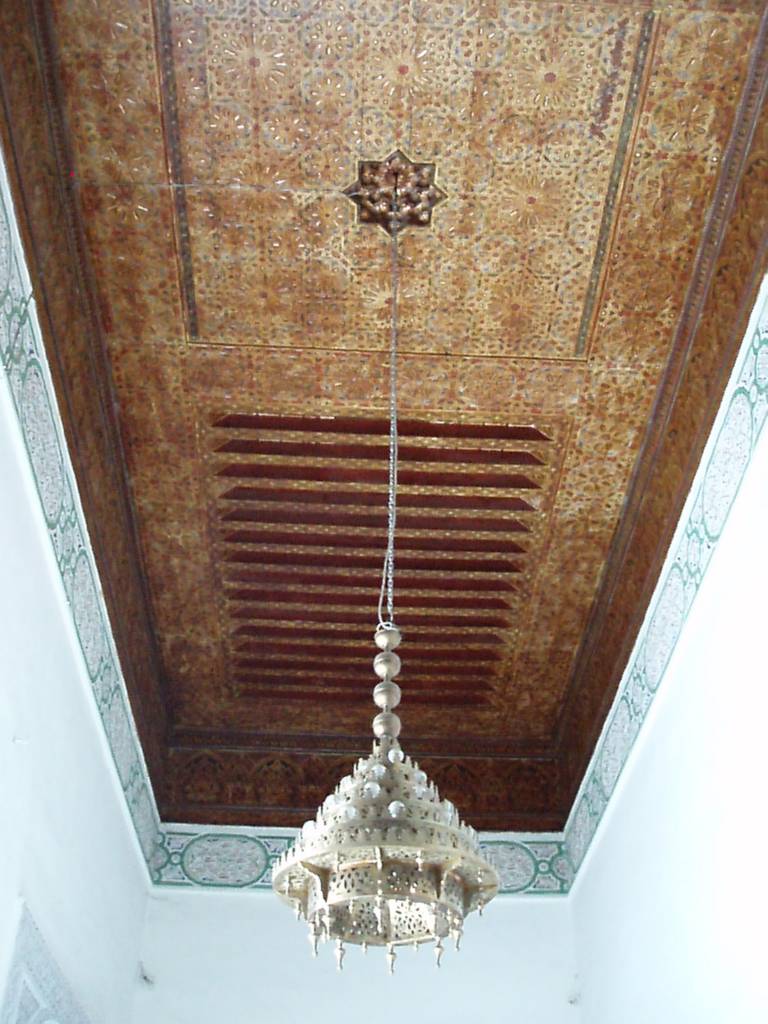
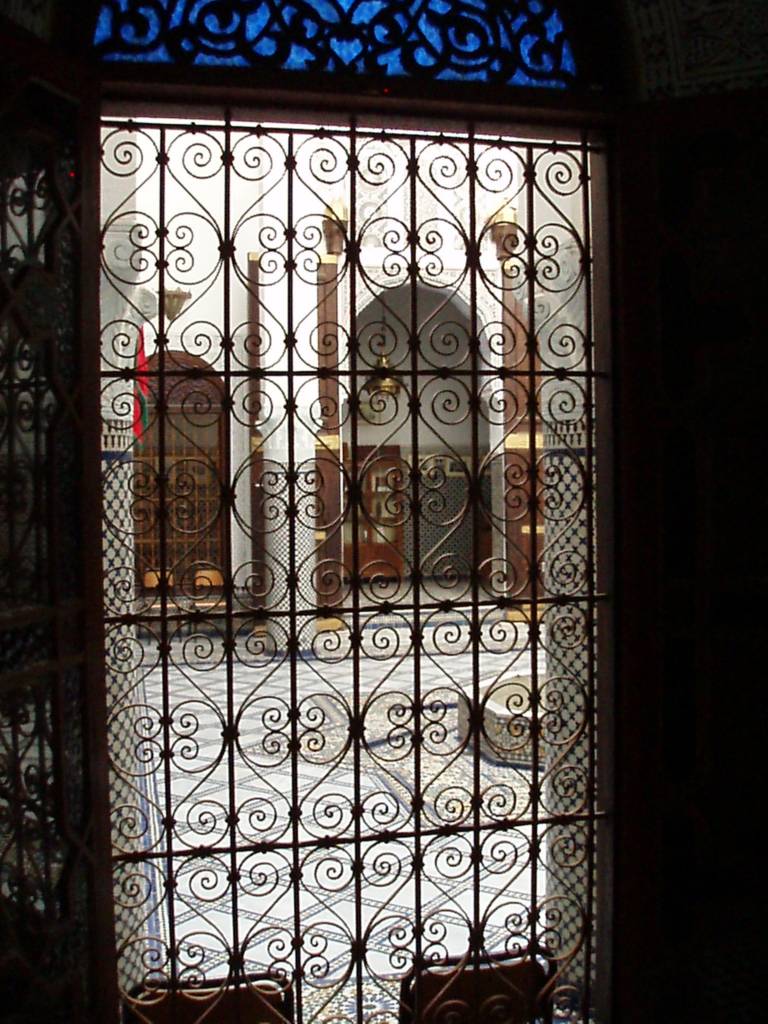
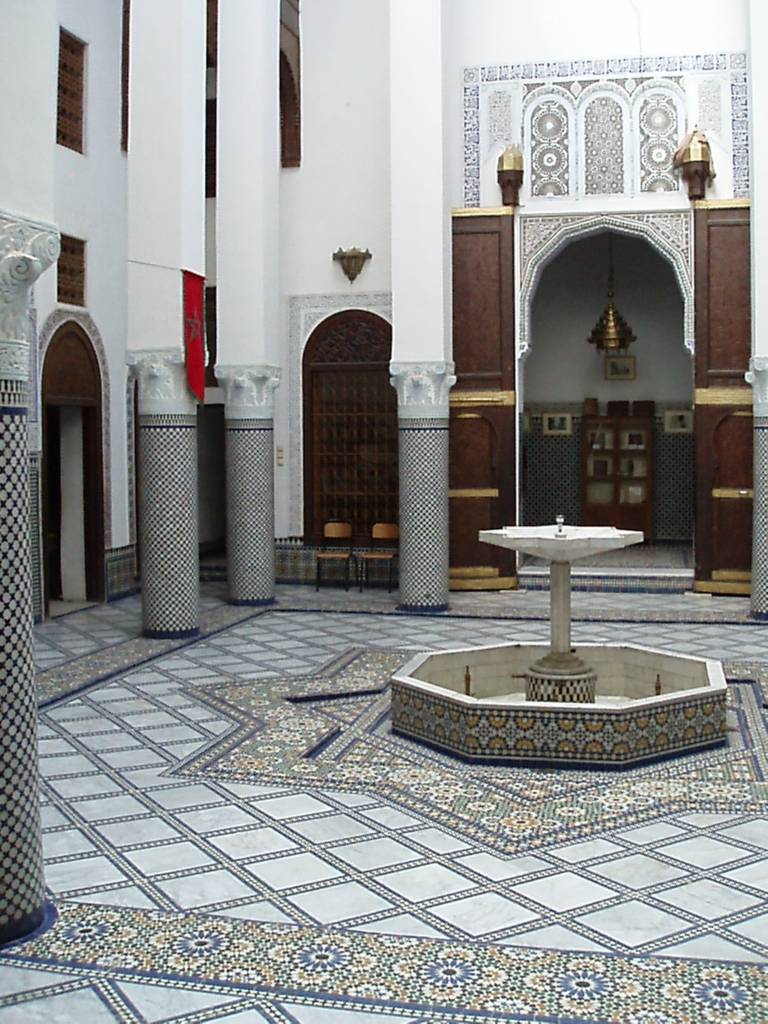
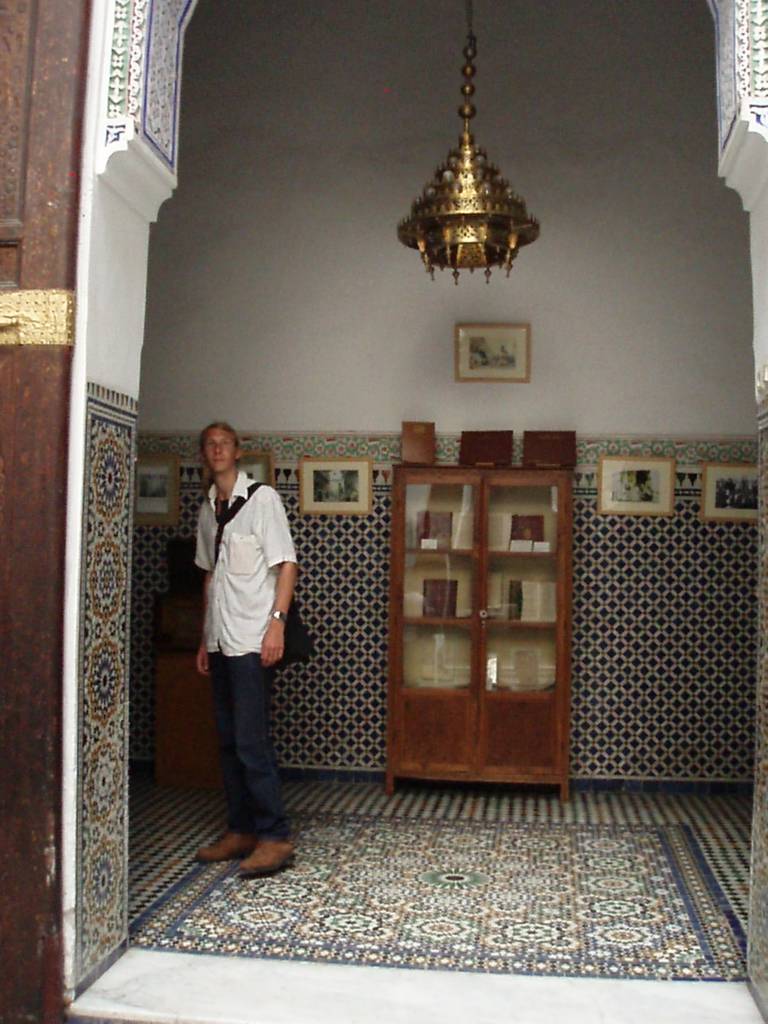
From the hotel we would like to go to the tourist information again to get a map of the city. It takes a while before we find a taxi too; the streets are swarming with hustle and bustle and entire families are waiting on the sidelines to catch the little red rattles. These taxis still take people, even if they are already carrying a passenger.
A Taxi ride with obstacles
Shortly before the city gate, our car suddenly starts to smoke from the engine and the driver is forced to stop. Immediately, people from around rush over and look at the engine. A few seem to have a clue about the matter – or at least believe it.
In any case, one man rolls up his sleeves and begins to screw on a few parts. Someone pours some more cooling water and the car actually runs again.
At the end of the journey, the driver suddenly tries to extort more money from us, claiming that we agreed on fifty dirhams instead of fifteen. We don’t fall for that and, as expected, the driver doesn’t get upset when we hand him the agreed money.

Unfortunately, the tourist information is already closed, so we have to wait until tomorrow for the city map. But since we liked the route very much, we walk back the way until we pass the royal palace and turn in the direction of Fés-el-Djedda, the “new” Fés. New is relative, because this part is also more than 300 years old. The sun goes down but the streets light up under the lanterns and the decorated stalls. Here you will find whole streets of beautiful French colonial houses. You can see many patisseries that offer small chocolates in all shapes and colors. Wagons selling bread or fruit are carted into the streets. The operation with the onset of twilight increases enormously.
An oriental evening
Susanne, Olli and I push our way past the many people through this strange world, enchanted by all the impressions around us. In the dim light we only see a minaret, palm trees and colonial houses towering in the area.
When we arrive at a gate on a city wall and it doesn’t look like we’re going any further, we return to our Hotel Dahlila in a taxi for something to eat.
Actually, I would like to take a photo of the city gate, but a man and a soldier whistles at me… it seems to be a top secret gate.
We look forward to eating on the terrace of our hotel as it looks really nice and we are tired of looking for a place to eat or a food stall and having to negotiate prices. Ibrahim is also very pleased with us and brings us the menus. Interestingly enough, these are no longer the cards I saw here at noon, but others where the only menu suddenly no longer cost 50 dirhams, which I found expensive but bearable, but now it’s 70! We discuss going somewhere else, but stay there anyway; after all, it turns out to be the best meal we will be served on the whole trip in Morocco. After a starter, each of us either has the choice between brochettes, tajine or couscous, but these are better here than anywhere else.
The menu: brochettes, tajine or couscous

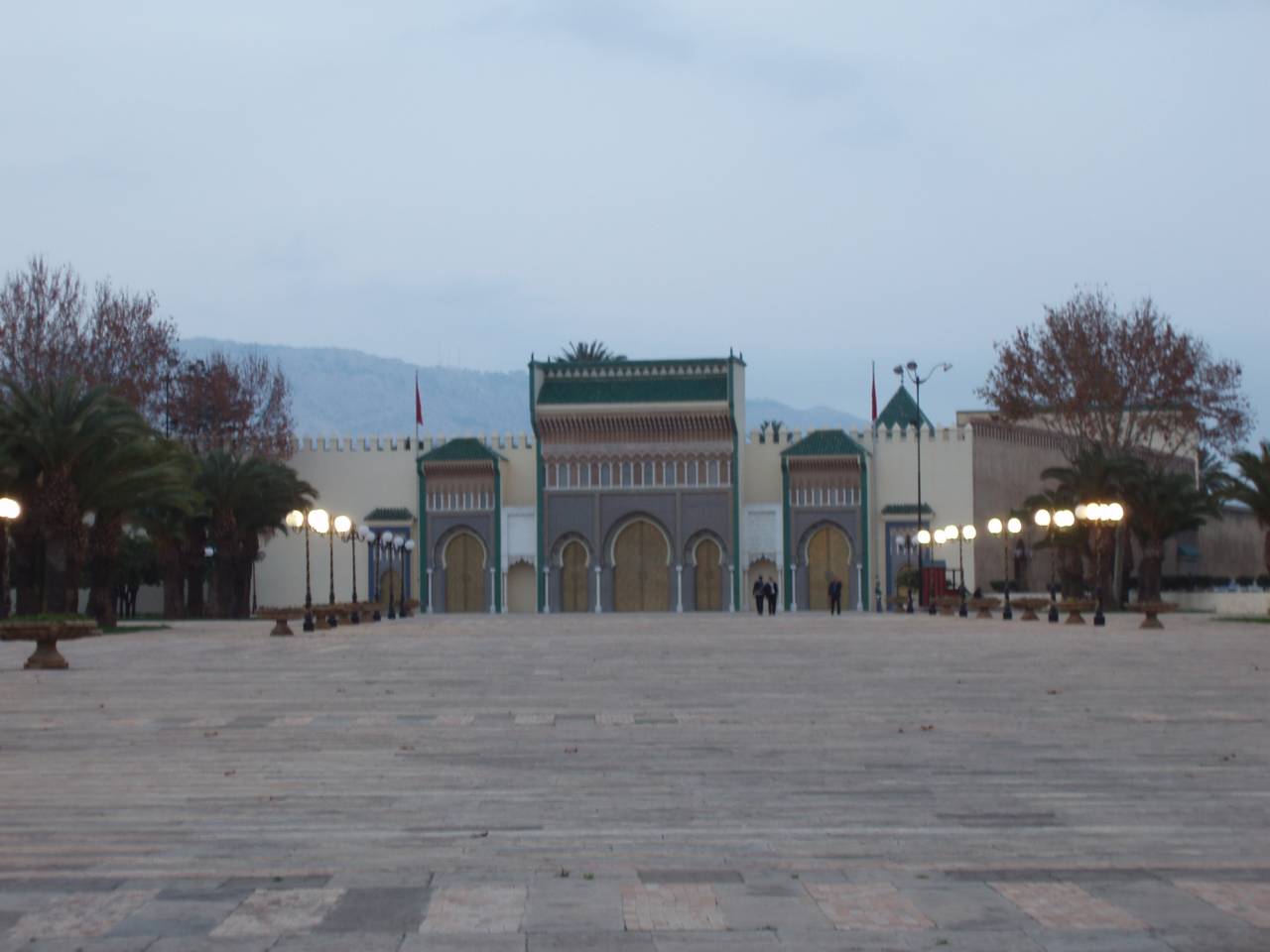
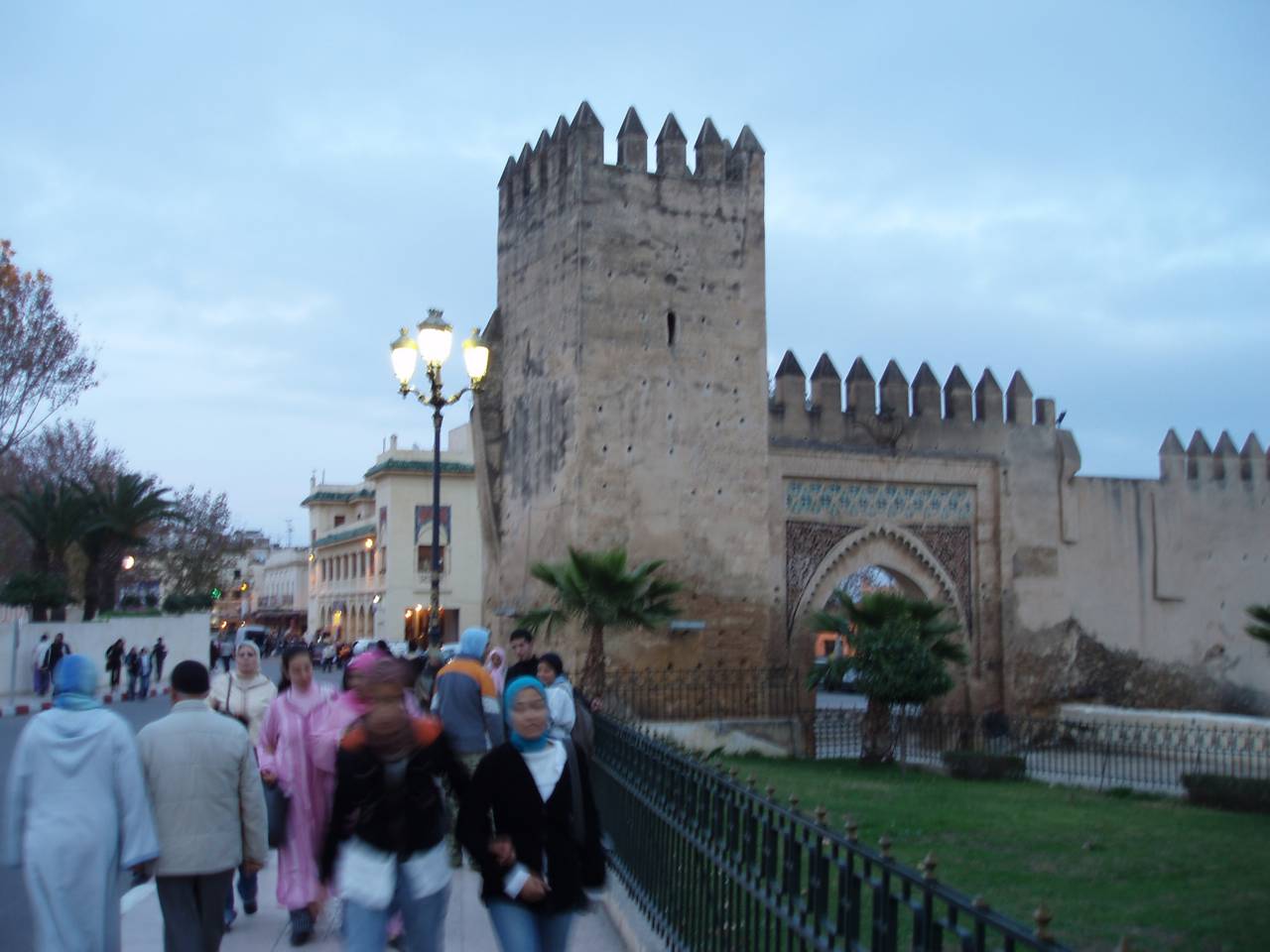
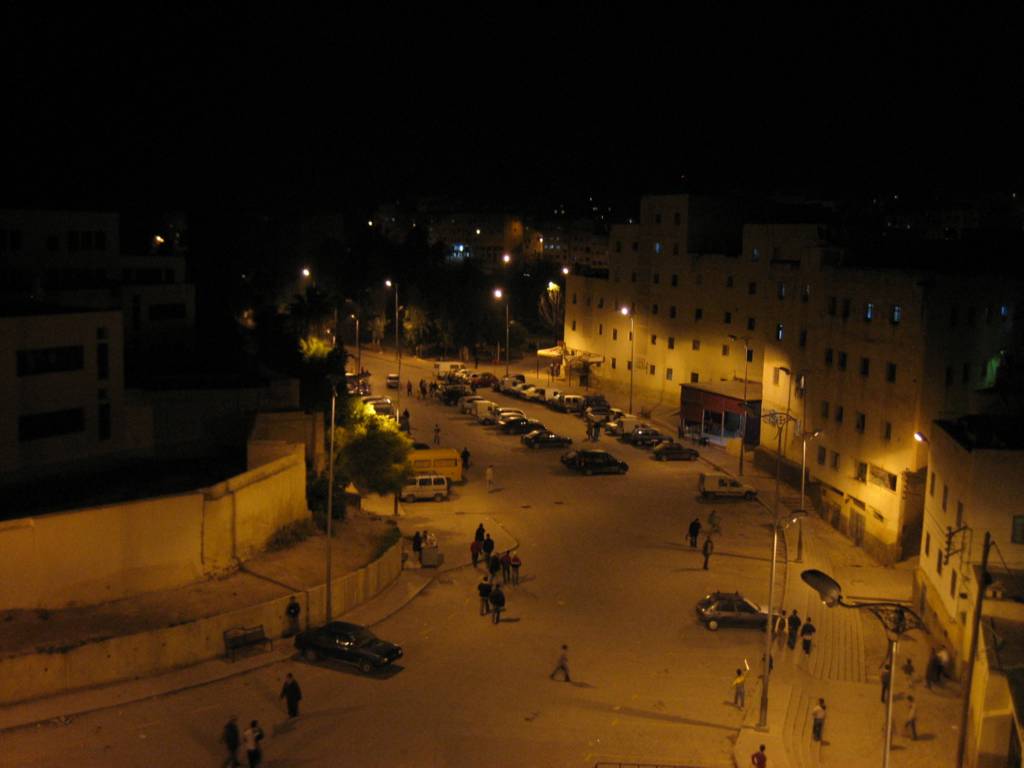

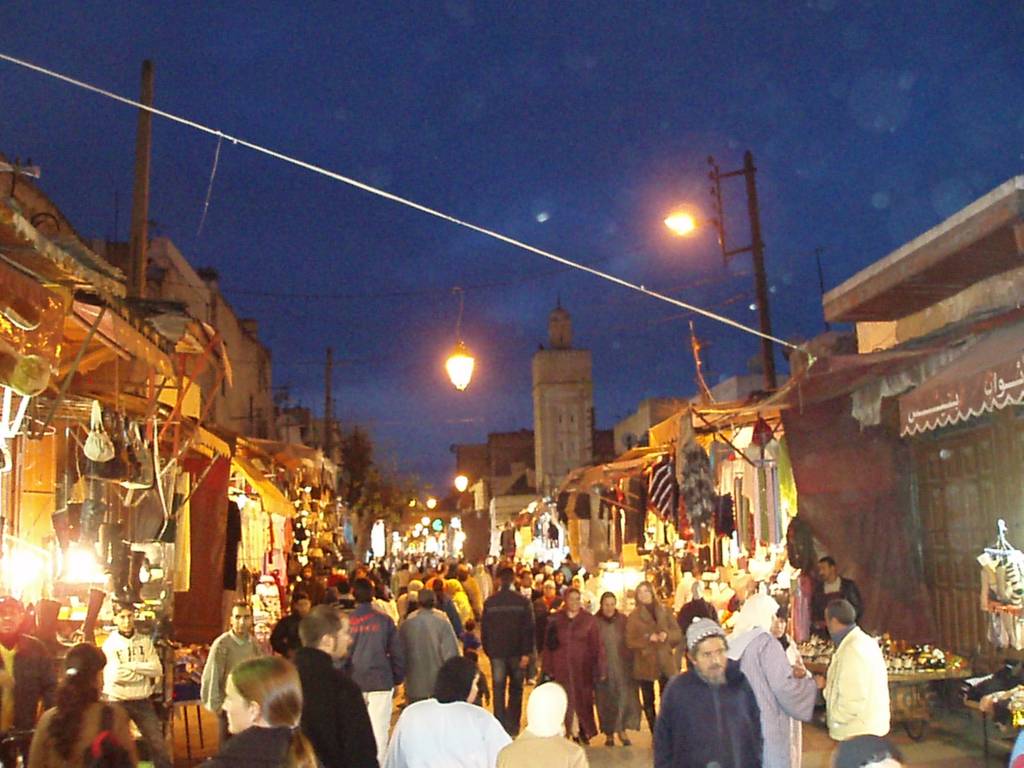
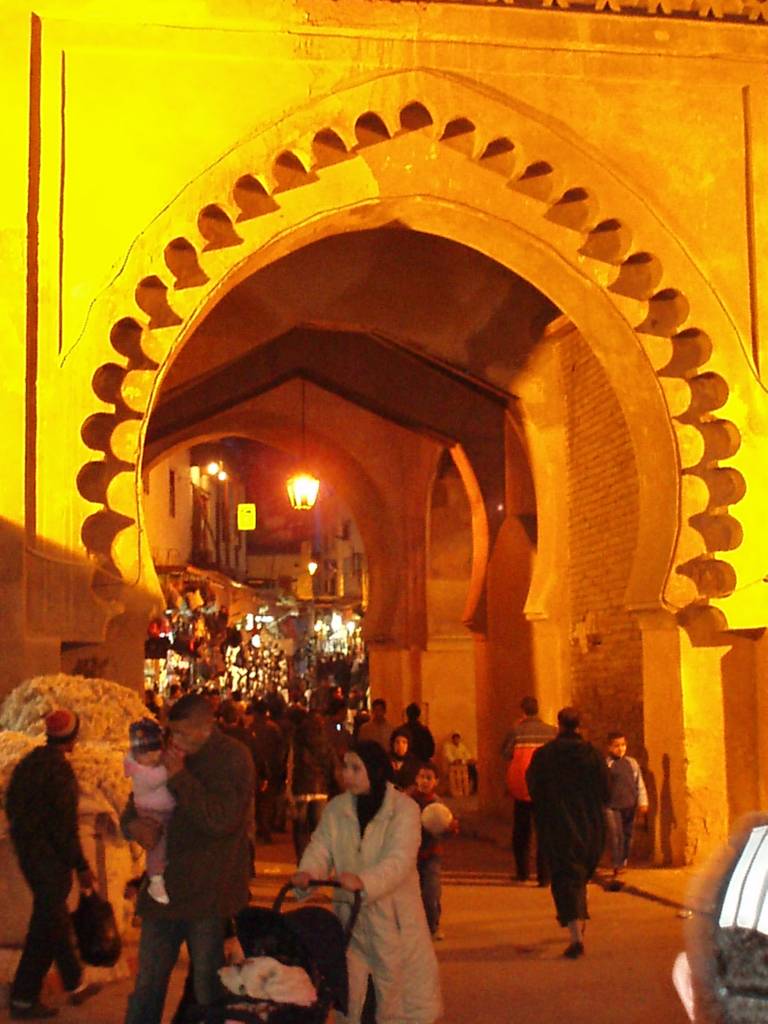
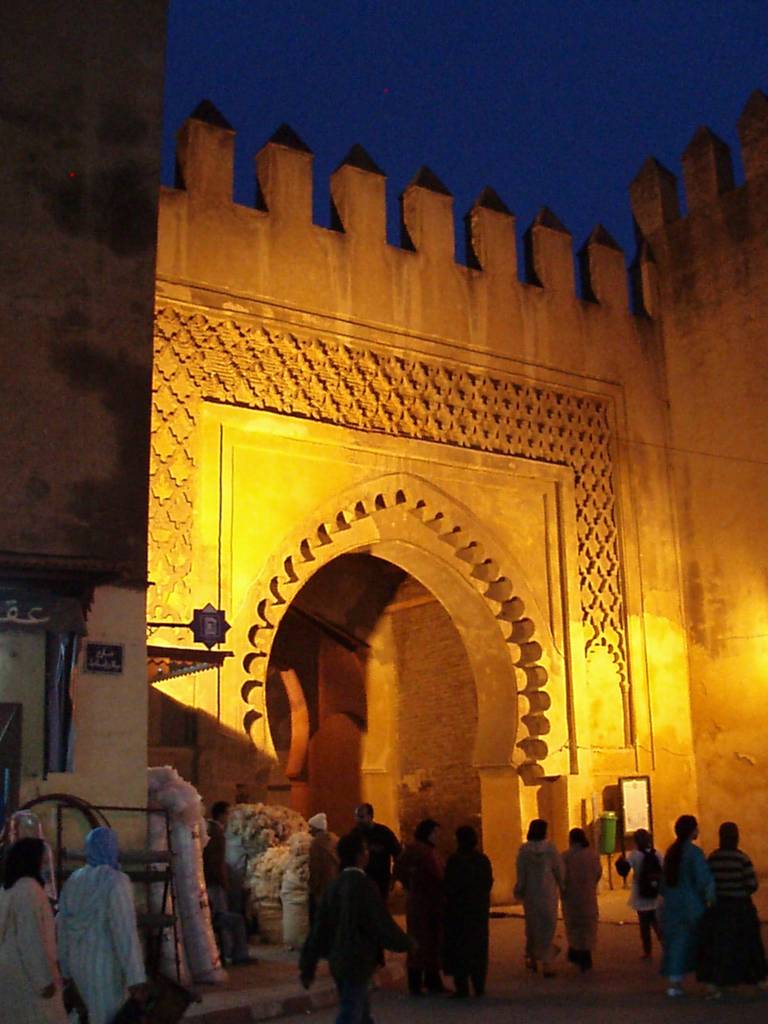
We sleep well in our room, even if I have to stop Olli from snoring a few times at night. Before we set off, I agree with Ibrahim that we can store our luggage in the hotel for the day. At the last moment he also remembered to ask each of us 10 dirhams. He also makes us the offer to organize a trip to the desert from Fés, because it is much more practical from here than from Marrakech, which would be a huge detour. But we also turn down the offer.
An occidental morning
We no longer want to have breakfast in the hotel so as not to experience another financial surprise like the night before. We head towards the medina, but when the road begins to lose itself in the vastness of the alleys of Fes al-Bahli, we turn back and try another route, which we don’t follow any further. Without a city map and on an empty stomach, that’s too uncertain for us.
We finally find a café on the main street that looks touristy but is run by a Moroccan who obviously has no clue about foreigners. Ordering coffee is not a problem, but fulfilling the desire to bite is lacking. He doesn’t have “petit dejuné” to offer, but we see that another guest has cake on his plate and try to get the same thing with gestures and our index fingers. But instead of “cake” the hopeless man brings us small wrapped muesli bars. We give up and return the granola bars and maybe consider buying some bread on the street. Suddenly the waiter reappears with a whole plate full of cake, which tastes really delicious. He doesn’t even charge tourist prices for his magic show! All’s well that ends well.

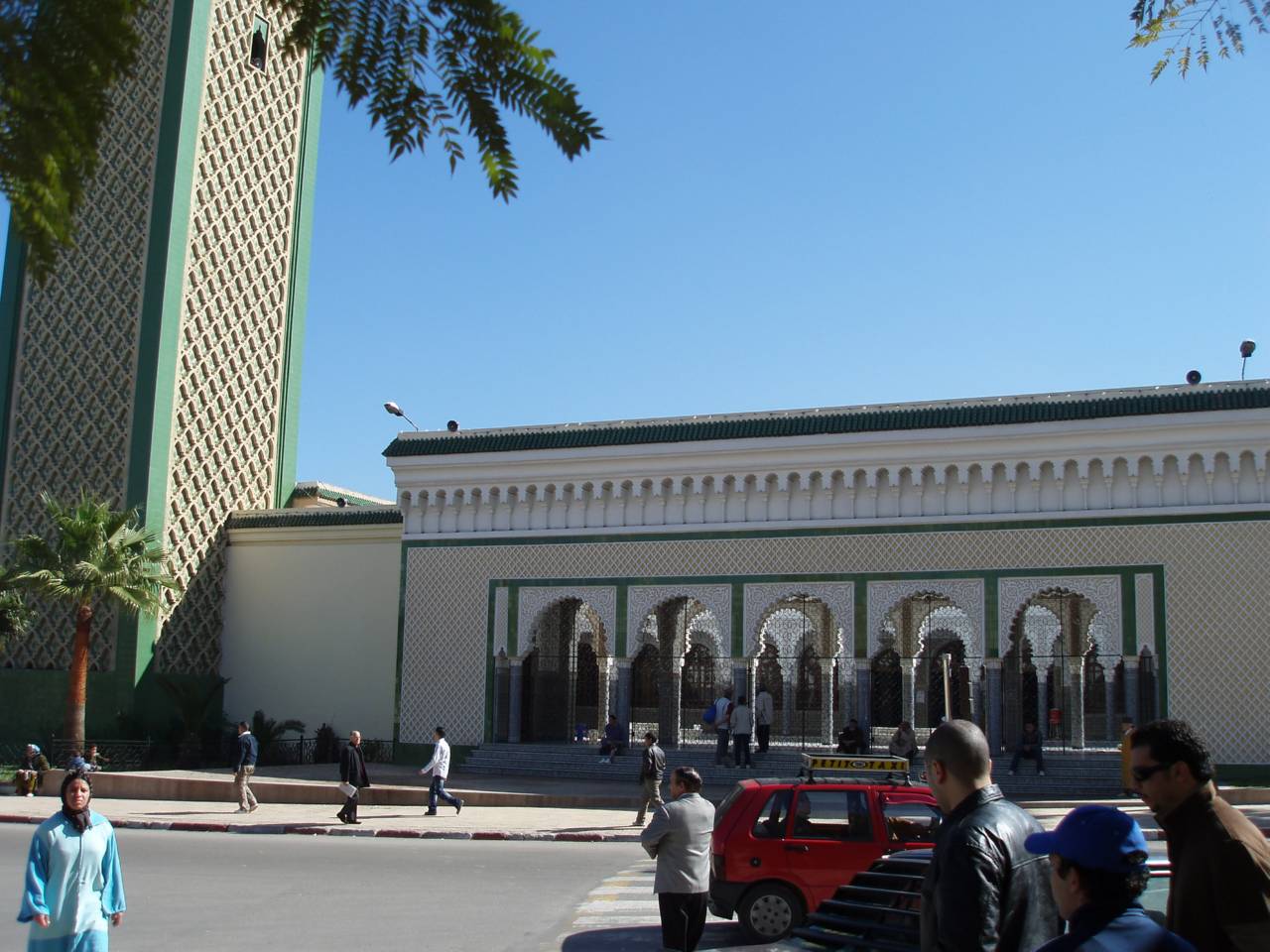
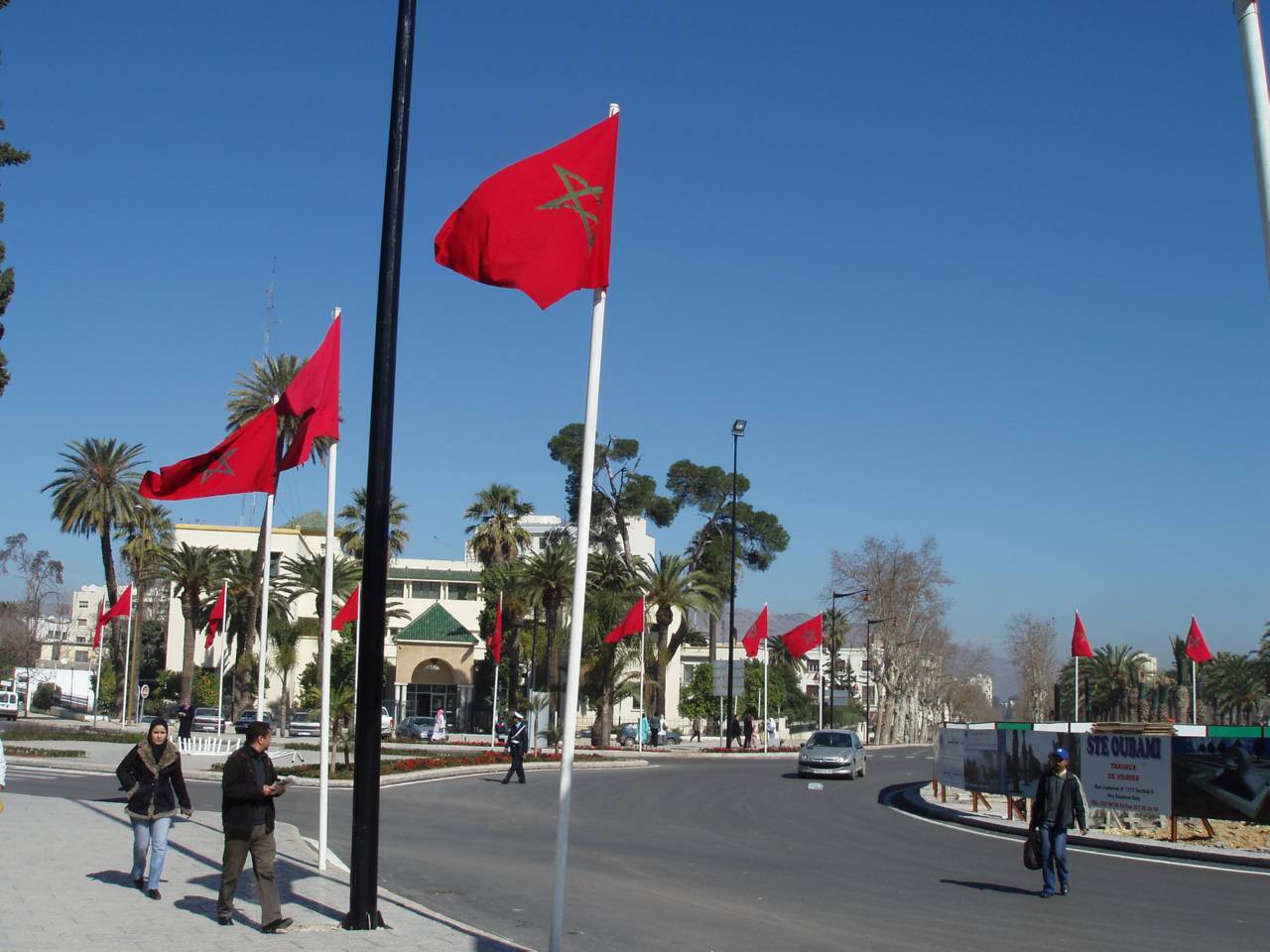
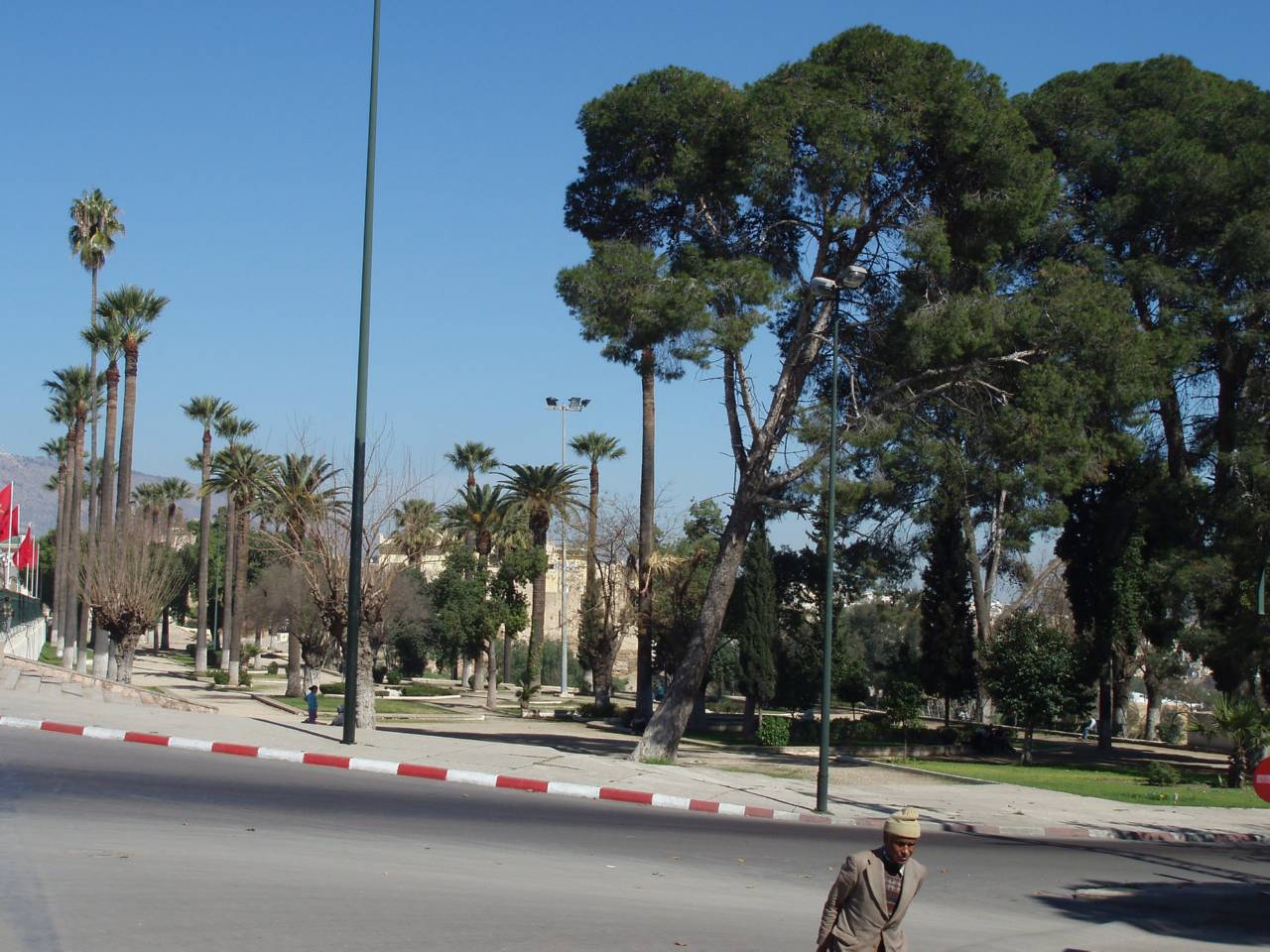
So, now I finally want to have the damn city map. We take a taxi into town and find the tourist information office open and given the map. When studying the map, however, we realize that we have been busy the day before and that there are not so many sights left to work through. We have decided to spend the day comfortably in Fés and only take the train to Marrakech at night. Since the train takes ten hours, we lose the least time this way.
Fés-al-Djedda
The map reveales two things that still sound interesting: a weapons museum in a fortress and a crafts museum in the new town. The latter isn’t that far from our point of view, so we decide to go there first.
The new town is an unparalleled contrast to old Fez. There are wide avenues, parks, new hotels and of course a lot of traffic. Fewer donkeys, more new cars. Accordingly, the sought-after museum is housed in a chic new building. Admission is free, but you can also buy the exhibits. There are even price tags for the items, with specimens of every art form to be found, whether silverwork, ceramics, leather goods or carpets. And the prices are actually only slightly more expensive than what you would have bargained down yourself in the store.
Seen in this way, we see a good overview of the true prices here. Nevertheless, everything seems set up for visitors to the hotels around who want to indulge in the illusion of Morocco without running the risk of having to get to know a Moroccan.
We hike back and to Fés-al-Djedda to see it by day. We pass a restaurant where the owner wants to lure us in by pointing out that his restaurant is listed in many travel guides. But not in mine. Still, he refuses to show us around. His place has a terrace with a fountain and a beautiful interior where he shows us a pot full of desert sand and lets us feel the sand. The sand is absolutely fine.
Then the man begins to praise the desert and mentions that he also happens to organize tours there. Then it’s too much for me. I absolutely hate the guy, he keeps trying to force us to stay with new invitations. I make it clear, somewhat impolitely, that we are grateful for his attention, but would like to move on. The man tried tea, but I pull Su and Olli back onto the street behind me.
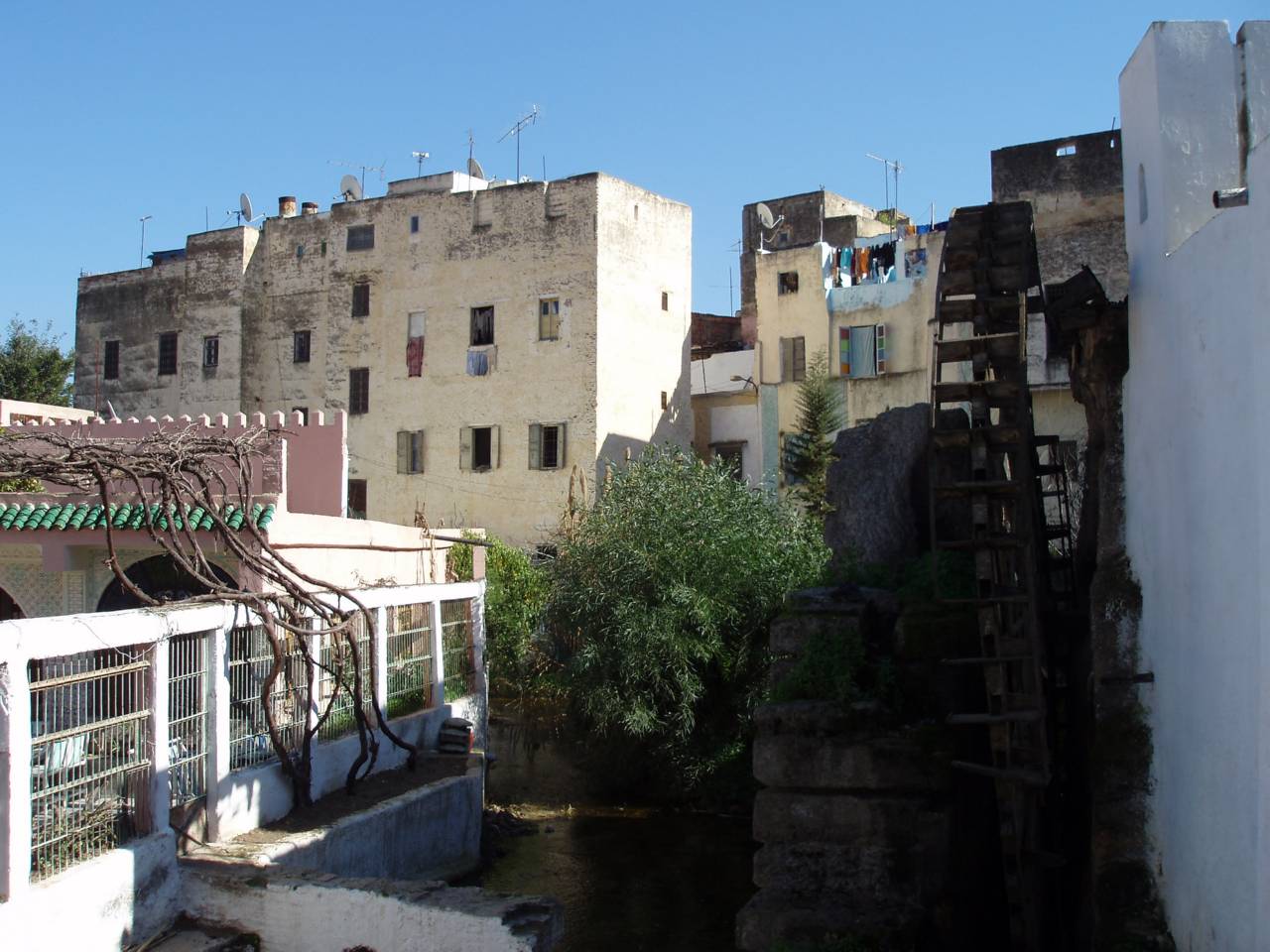
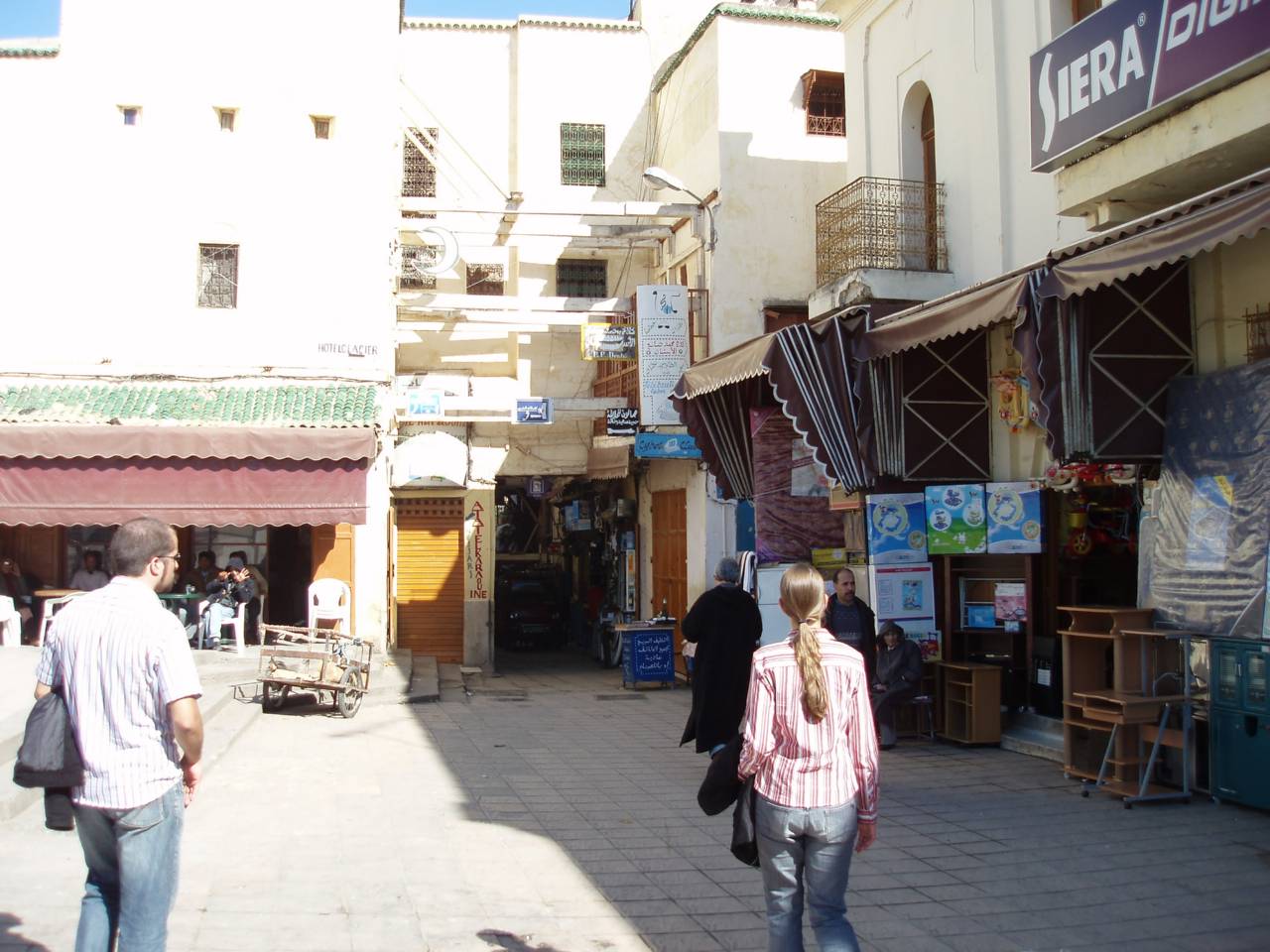
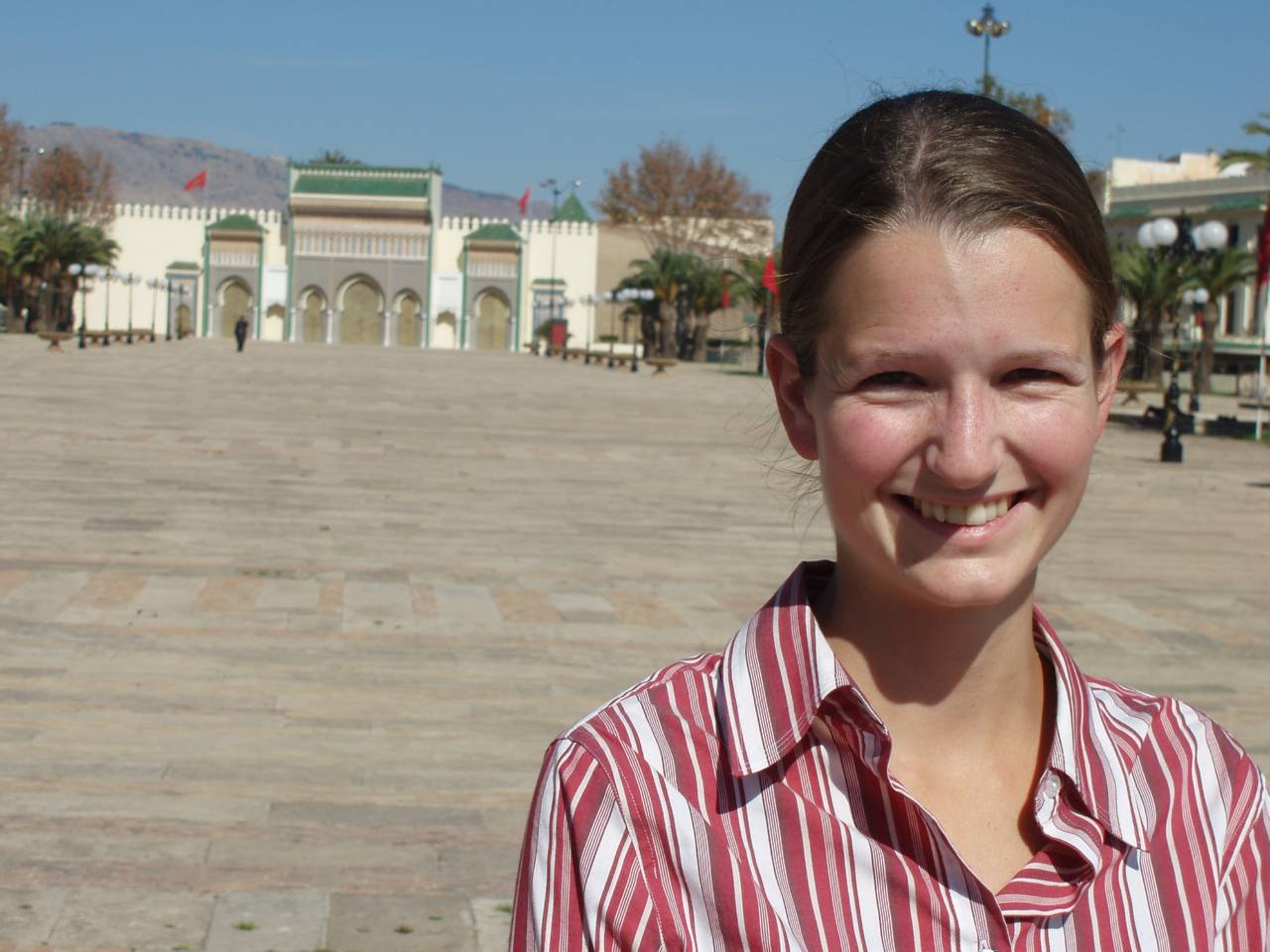

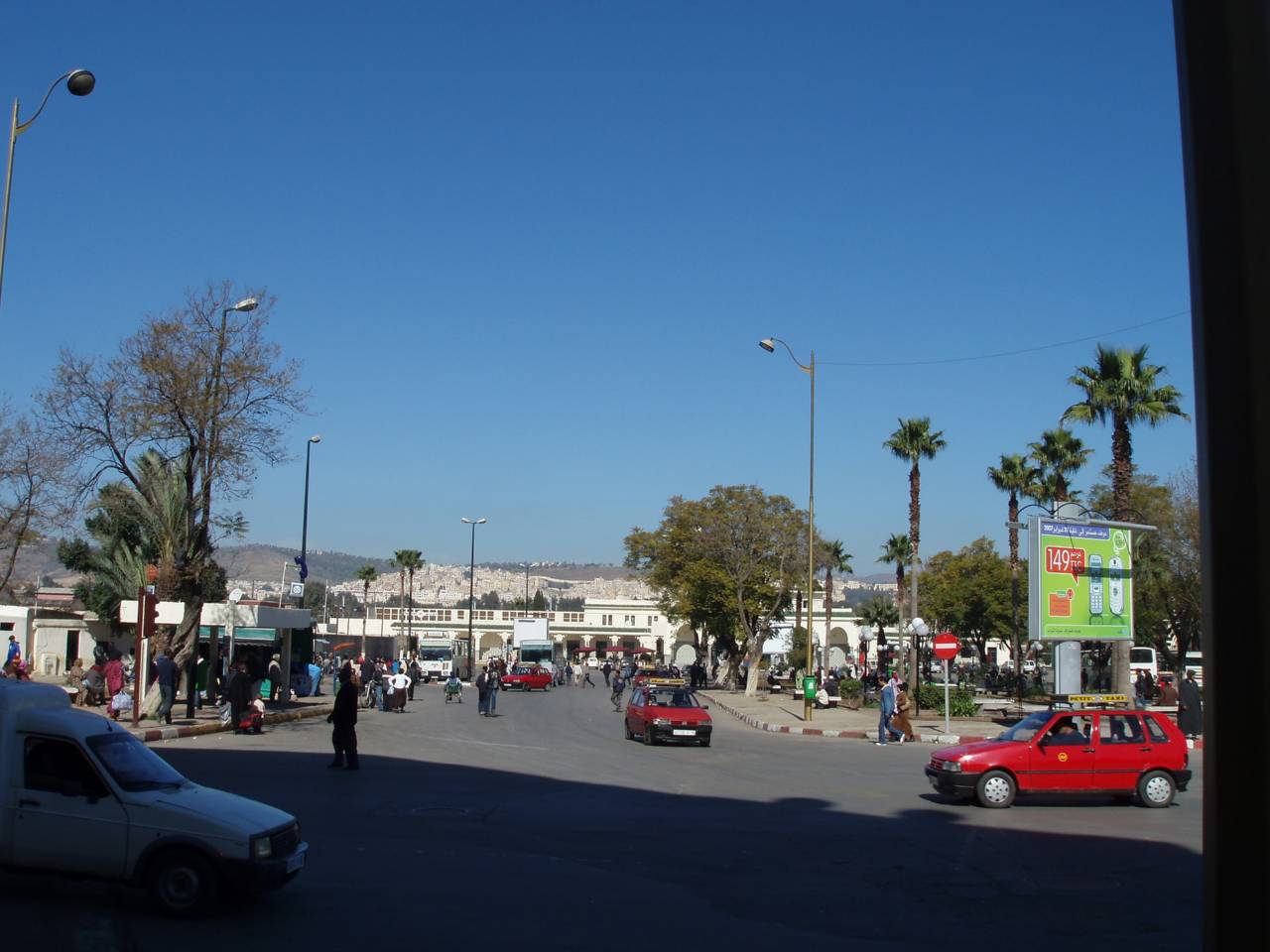

Out of the restaurant we find the park, whose signs we followed here in the first place. The first impression is disappointing: a small brackish stream here, a few plucked trees and some grass there. But the park is large, and behind a few dry shrubs, clean paved paths and neatly laid out trees and bushes suddenly open up.
There’s not much going on, but as I hug and kiss Su for a moment, I suddenly hear a chorus of whistles behind me. Some official just smashes his whistle until I keep a safe distance from my girlfriend again.
The man still looks at me in a deadly dark way, but leaves it at that and refrains from arresting me.
The park quite nice and the greenery and tranquility is also a nice change from the dry environment. The family, who are systematically harvesting the decorative orange trees, can’t be in the way either.
Scandal in the city park
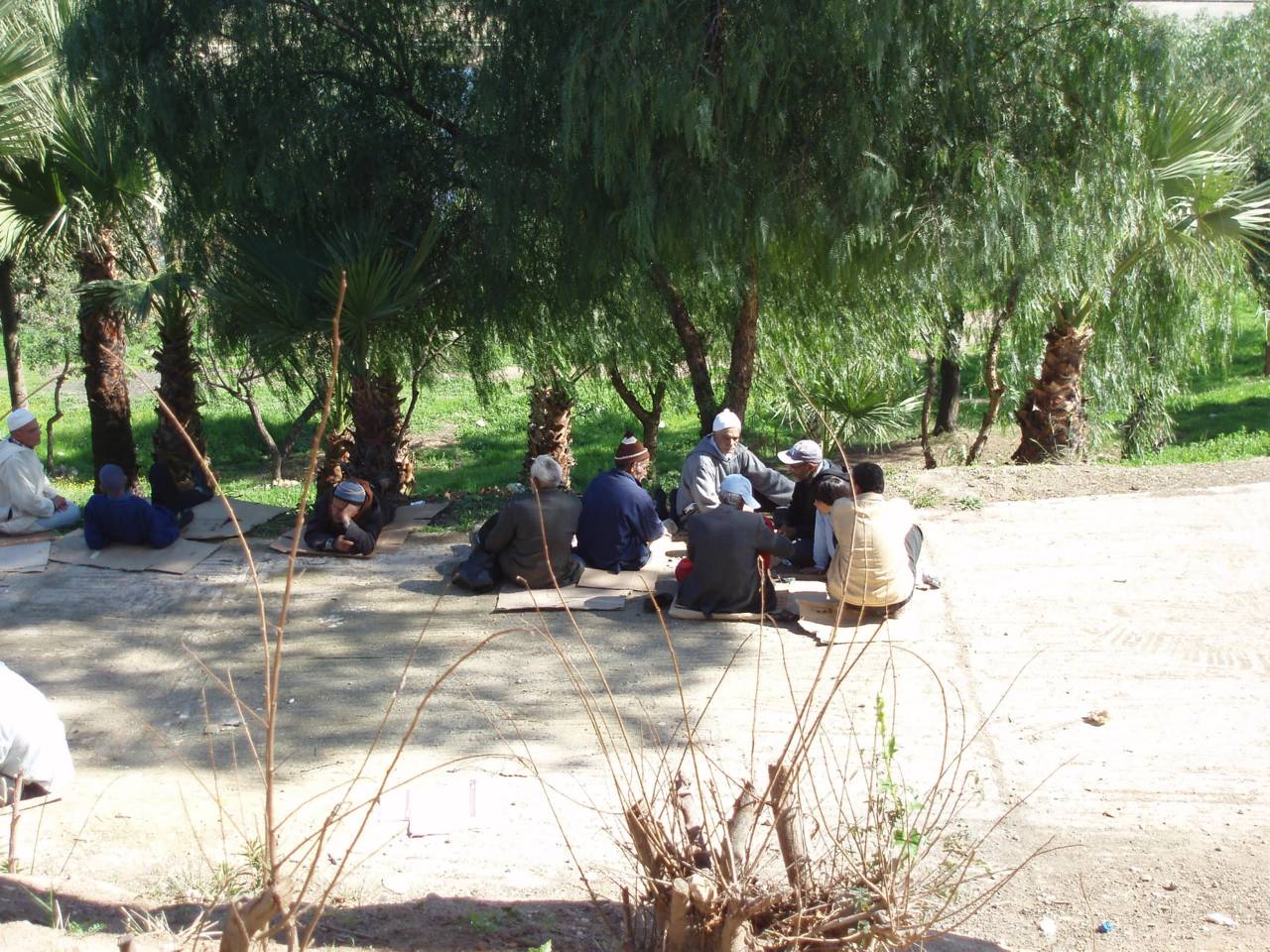



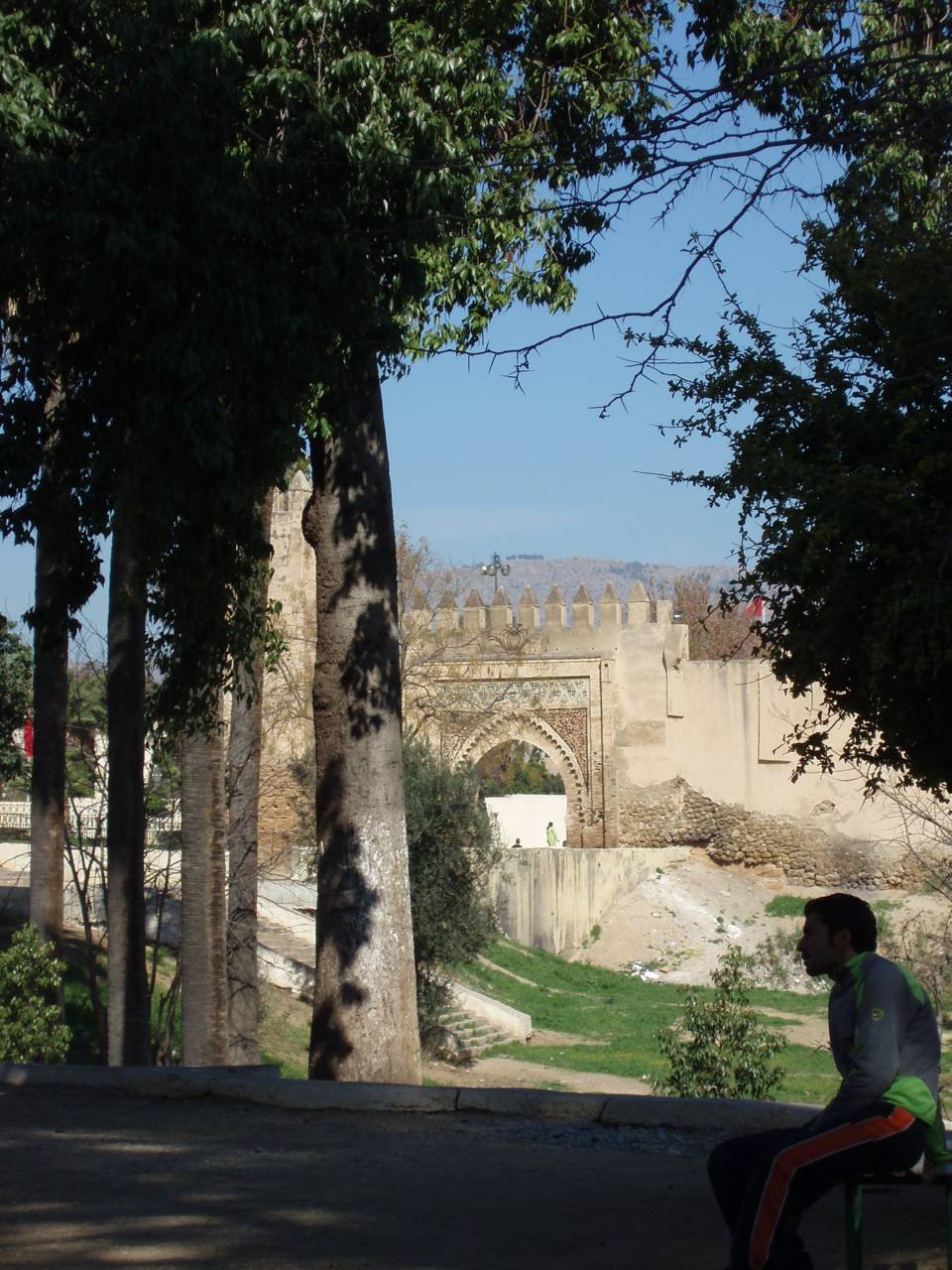
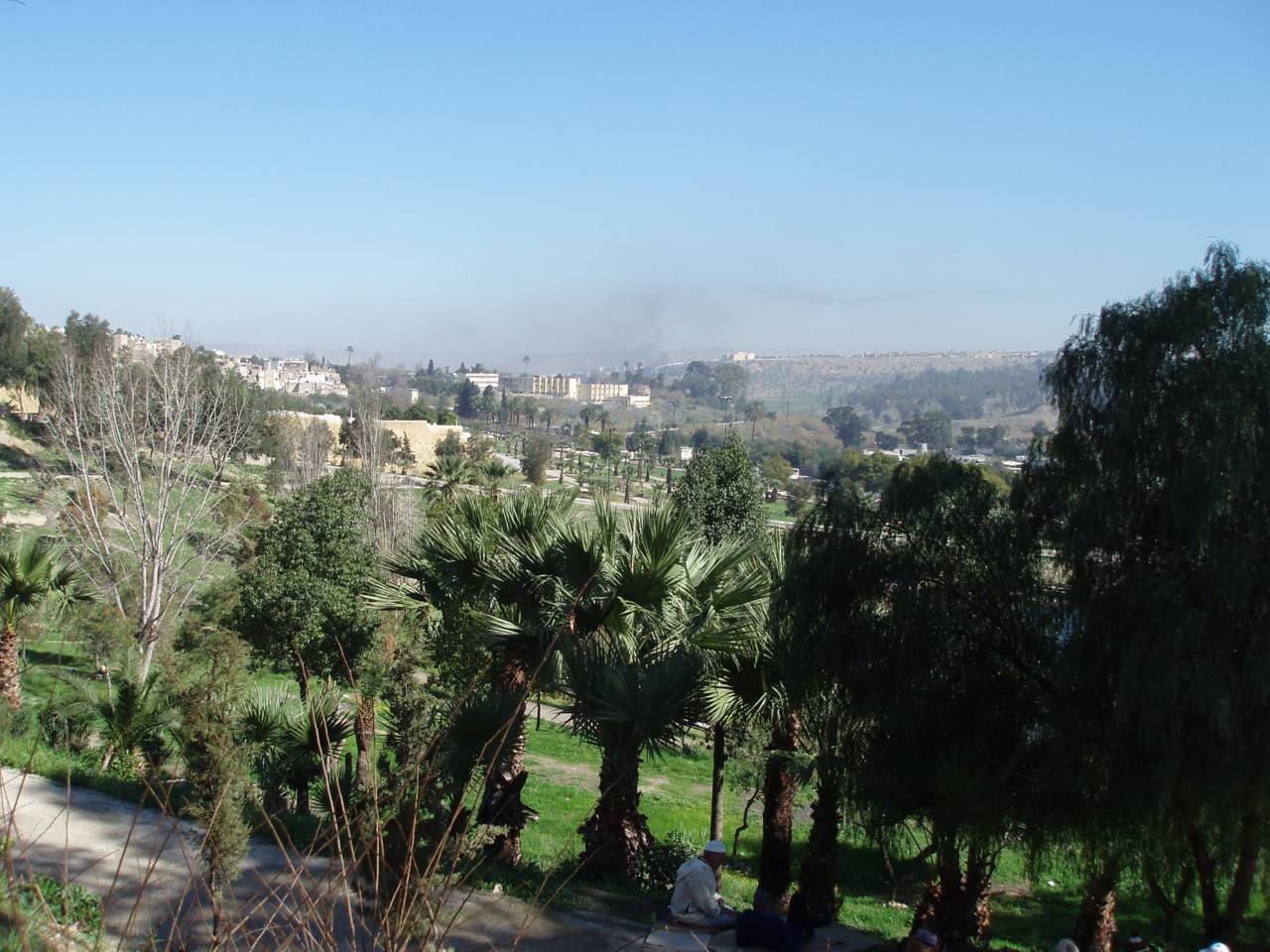
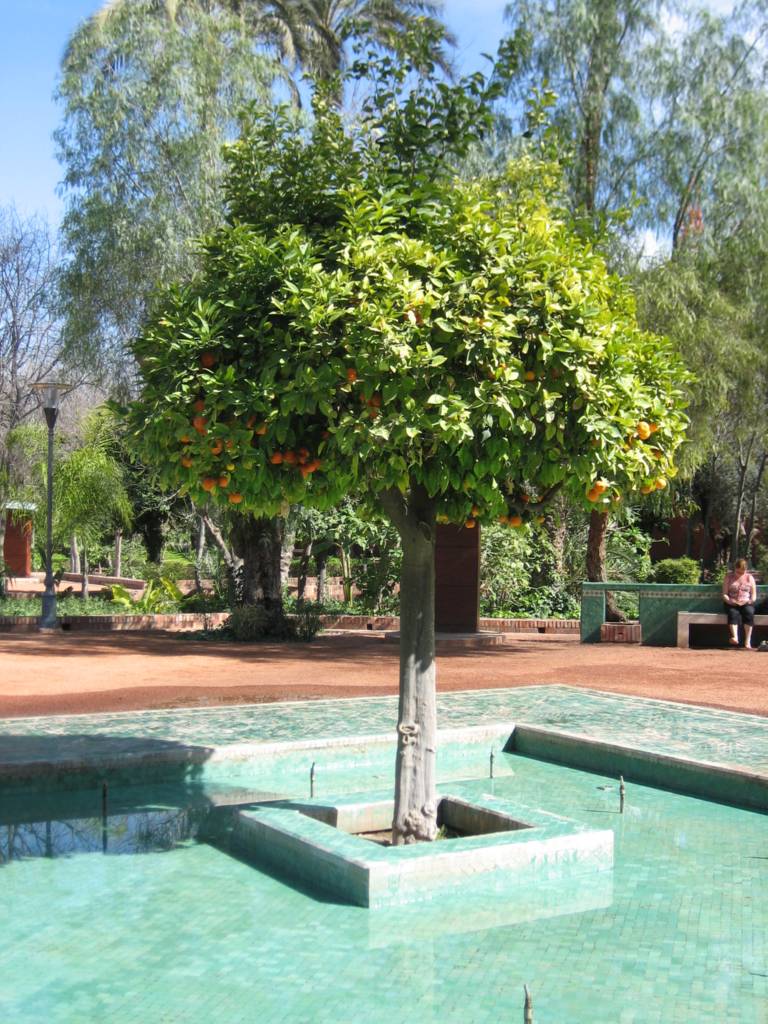
We go on and come to one of the main squares of Fes, at least judging by the traffic and crowds of tourists. The square is walled as in Meknés and gives access through three gates: one we just came out of and leading back to Fés-al-Djedda, a gate that is leading out of the city and finally the prettiest of all, the one to the Fez al-Bahli.
The surroundings of Fez
This gate is decorated with blue ornaments and through the arch you can see a really pretty part of the old quarter. Two beautiful minarets tower over the roofs of houses, one of which belongs to the largest mosque in Fes. Many people want to lure us into their restaurants with menus in all languages. Either you can tell from our Teutonic noses, or most of the tourists come from Germany, because most of them tried their luck first in our mother tongue.
Since we are a bit tired and have enough time left, we let ourselves be lured into a café. We choose one that has a wonderful covered balcony on the roof, from which there is a magnificent panoramic view of the square, the gate, the streets, houses and mosques.
We drink unsweetened peppermint tea and enjoy the quiet until a Polish tour group breaks into the café and we flee.
After tea we continue walking down the street, past the usual shops, which leads back into the medina. Following the alley through the old town we would come directly to the hotel, as far as our local knowledge goes. However, we turn back and want to take a different path, namely one that leads around the city.
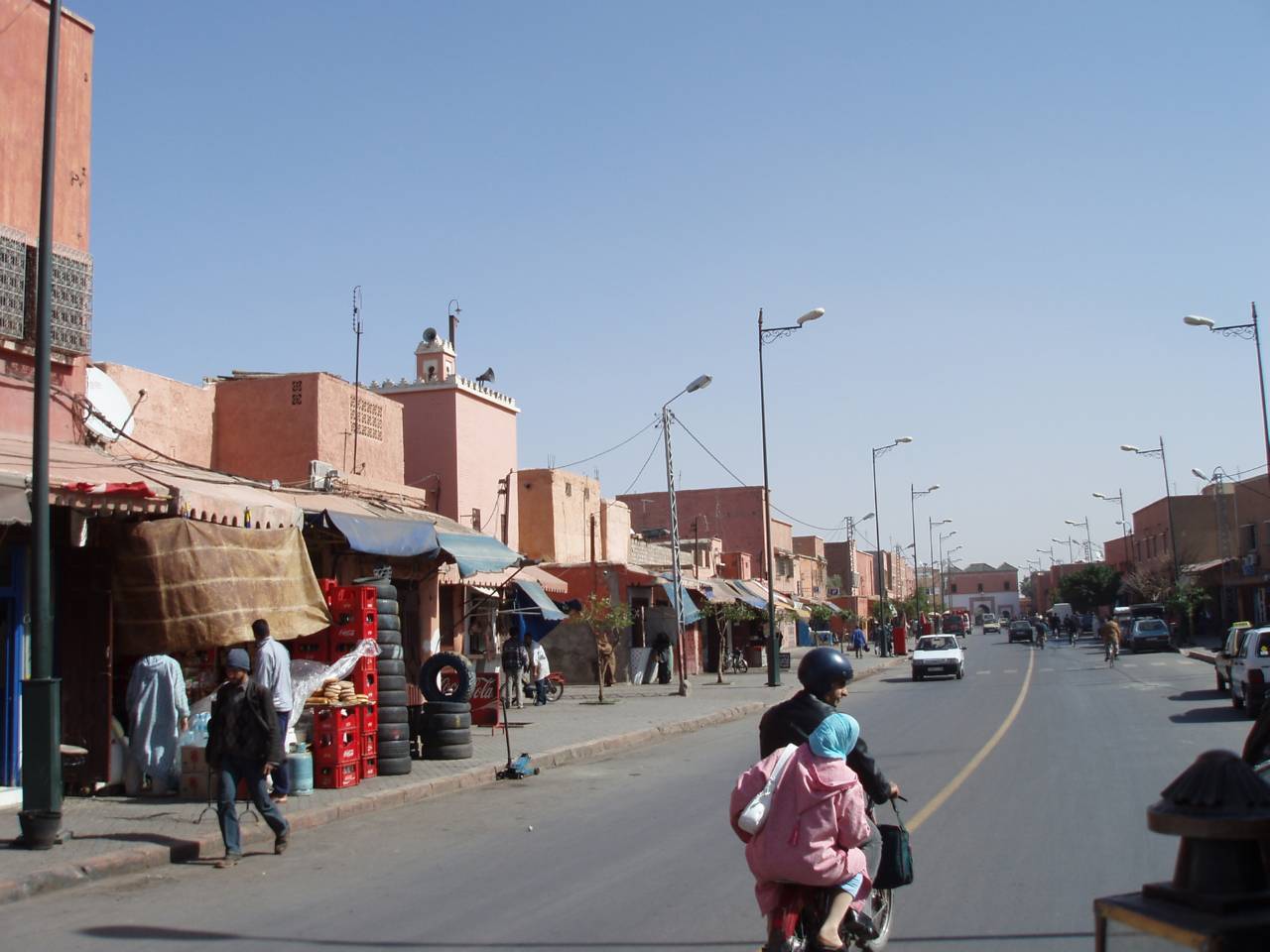

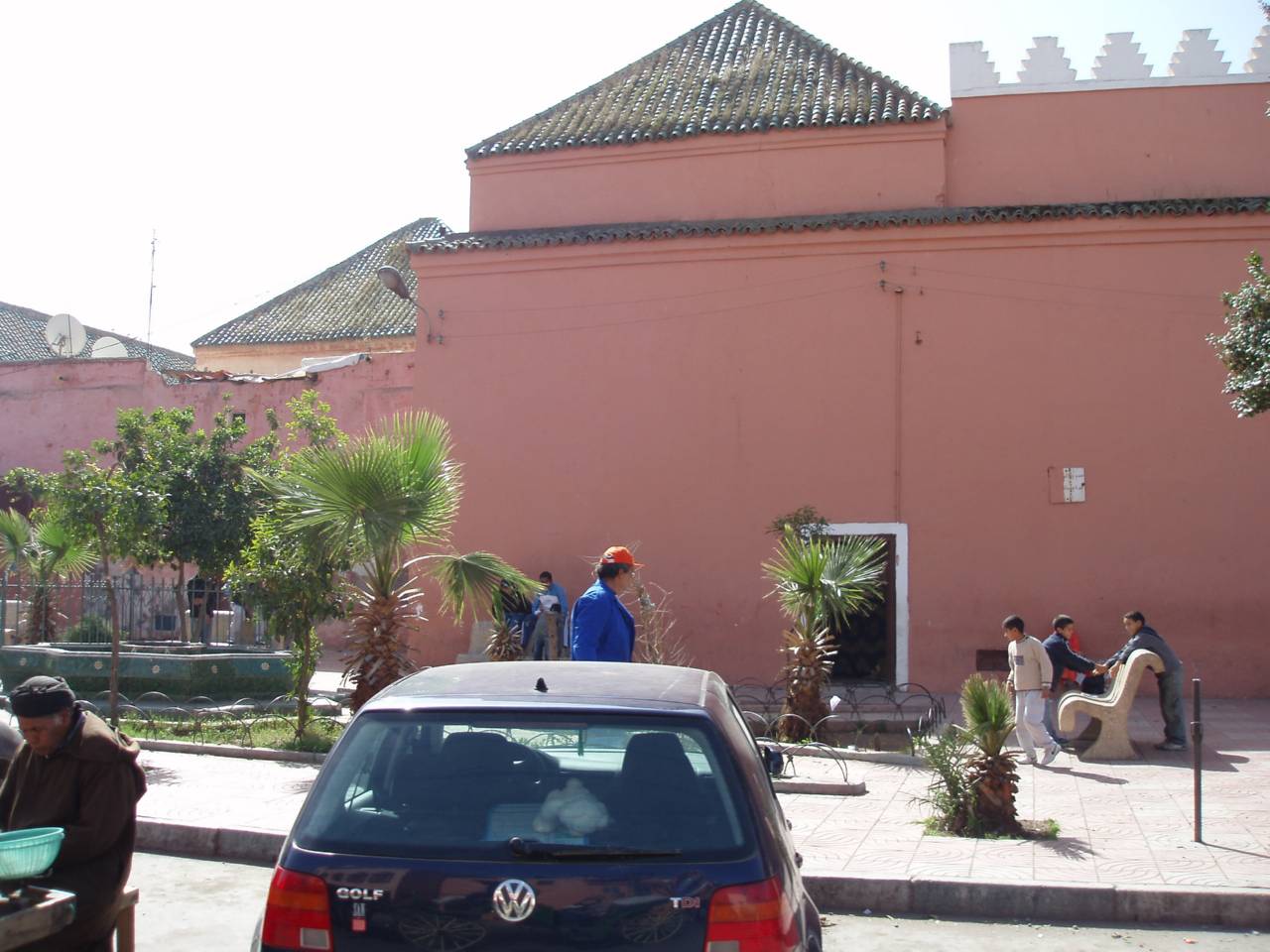
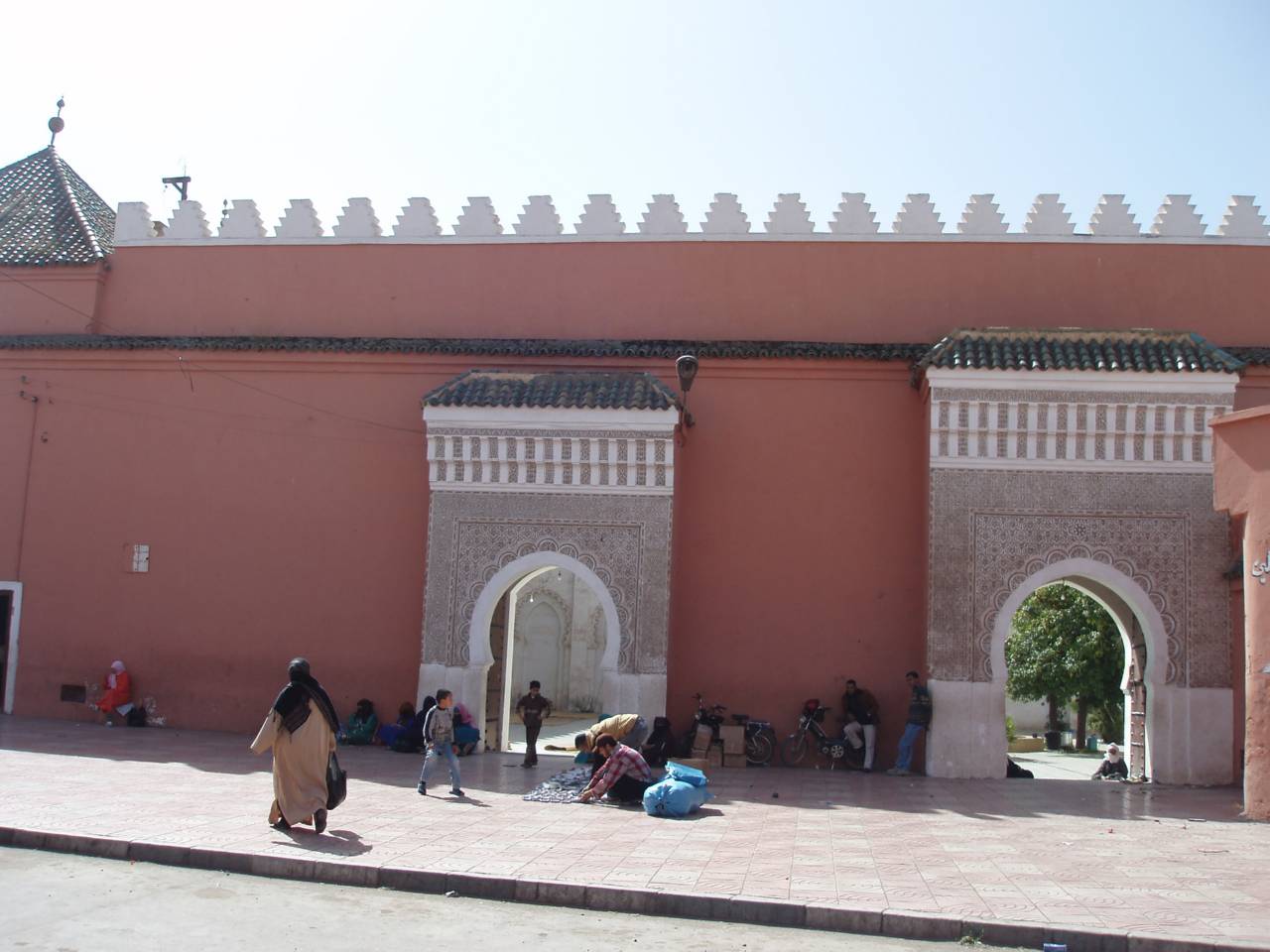
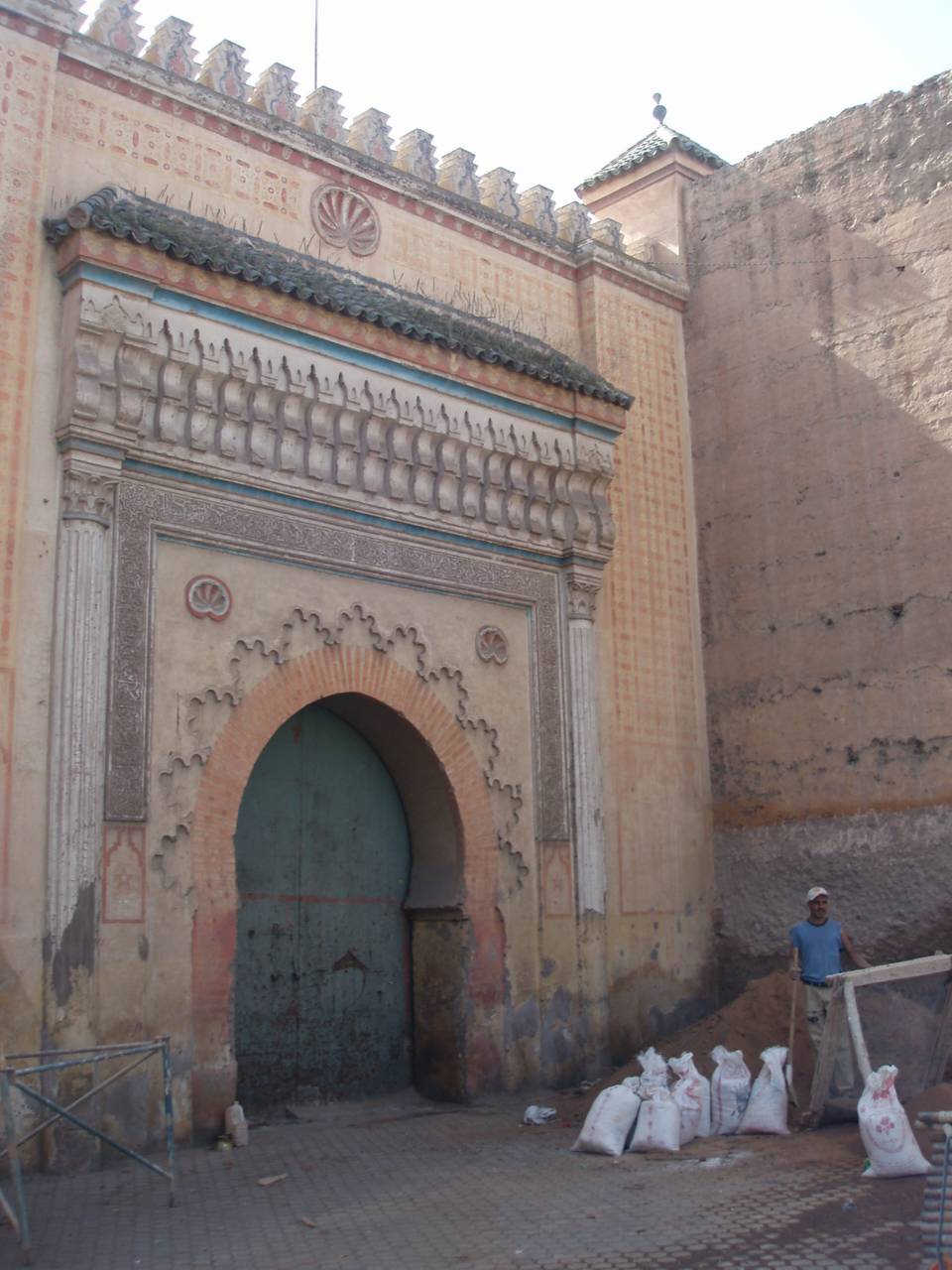
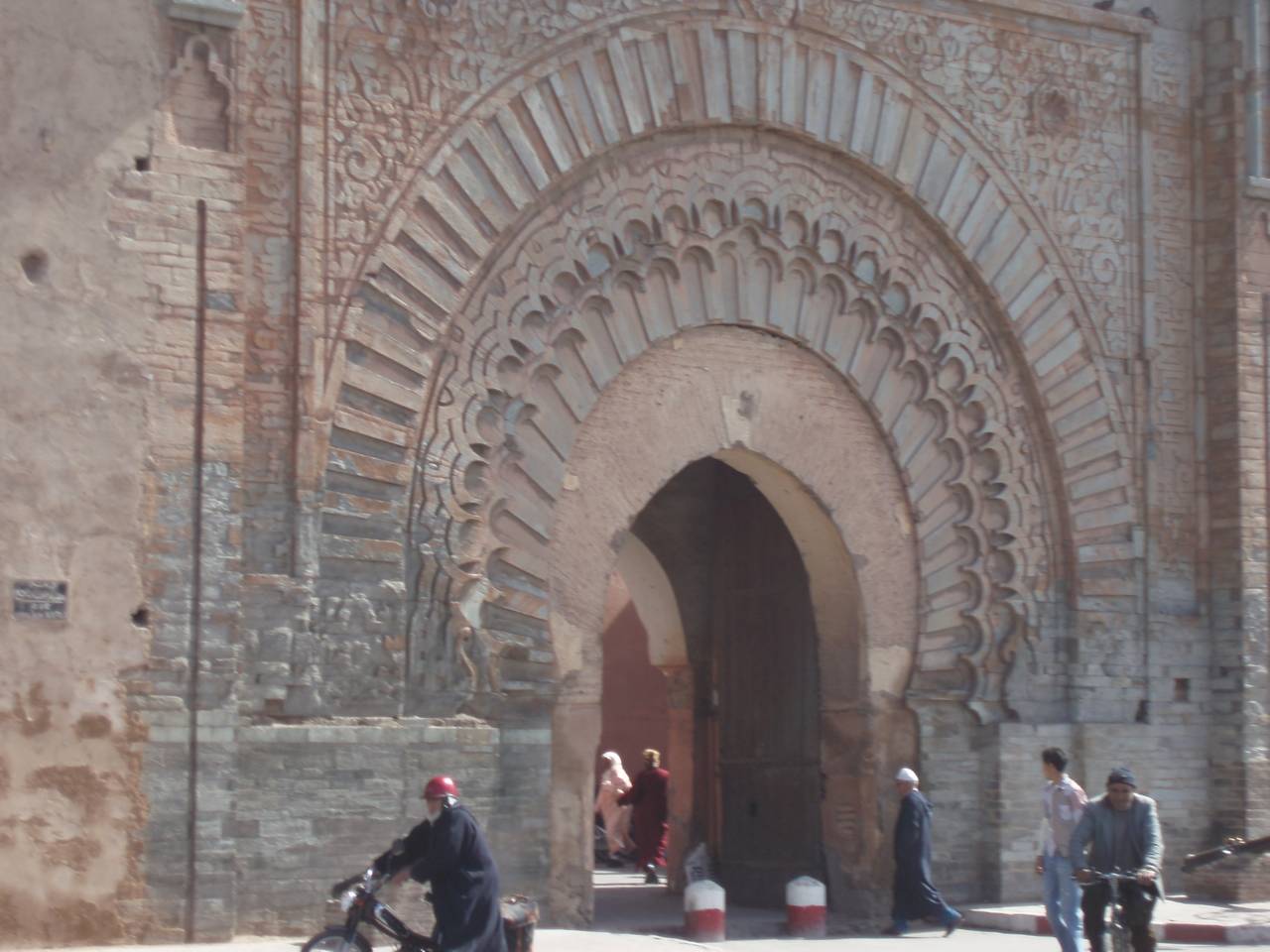



Since the newer Fes is on a mountain, the path leads down to the medina, and that in serpentines, from which you have a wonderful view of the valley. On the way we climb up a hill on which there are still remains of a small fortification. From here you had an excellent panorama over the city and the hinterland, and with the view we enjoy the sunset.
Afterwards we decide not to get our luggage right away, but to eat something in town first. We still have plenty of time as the night train to Marrakech does not leave Fés until 1:15. So we use the time for a simple meal in an ordinary food stall and then get the luggage. Back at the hotel I meet the American again, who is wearing a djabala like Olli tried on yesterday.
He introduces himself as Chad and he says he and his wife have changed their plans and now want to go straight to Marrakech after all. They got to know the European operator of a youth hostel, who made it clear to them how long and difficult the way from here to the desert is; they would have changed their minds. In my opinion, looking at a map would have done the trick.
We agree to meet the day after next in Marrakech’s main square, the Djemma-el-Fna.
With all our luggage back in the city, we spend the time with lots of mint tea until the train to Marrakech finally starts moving.

